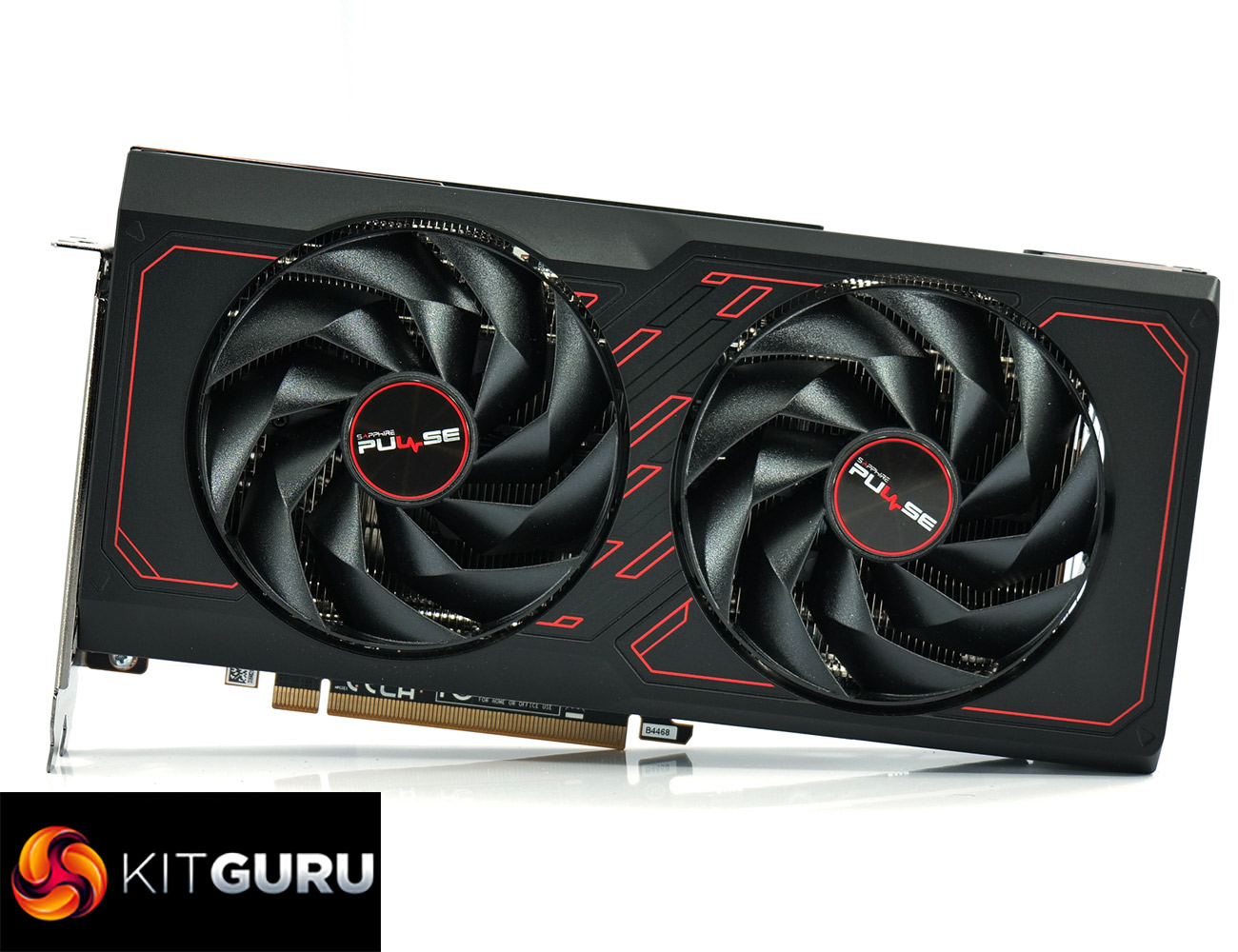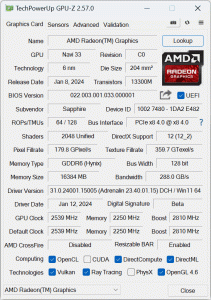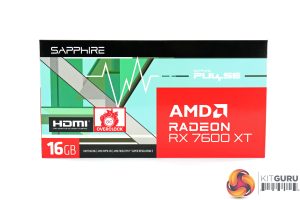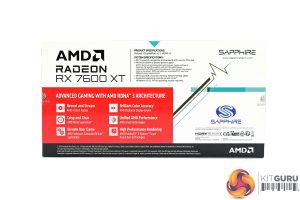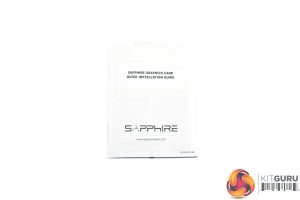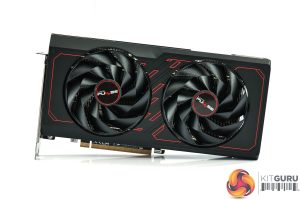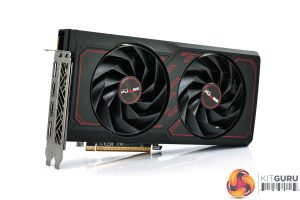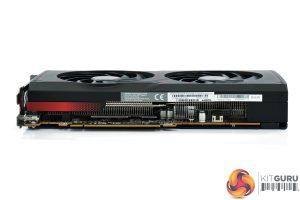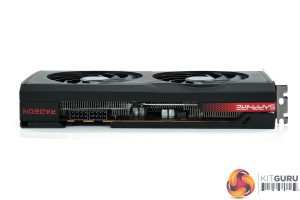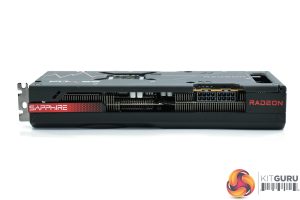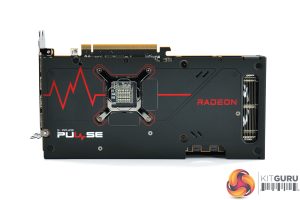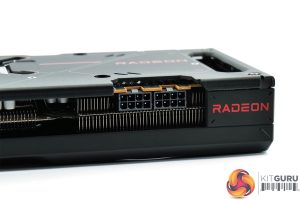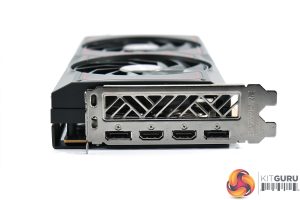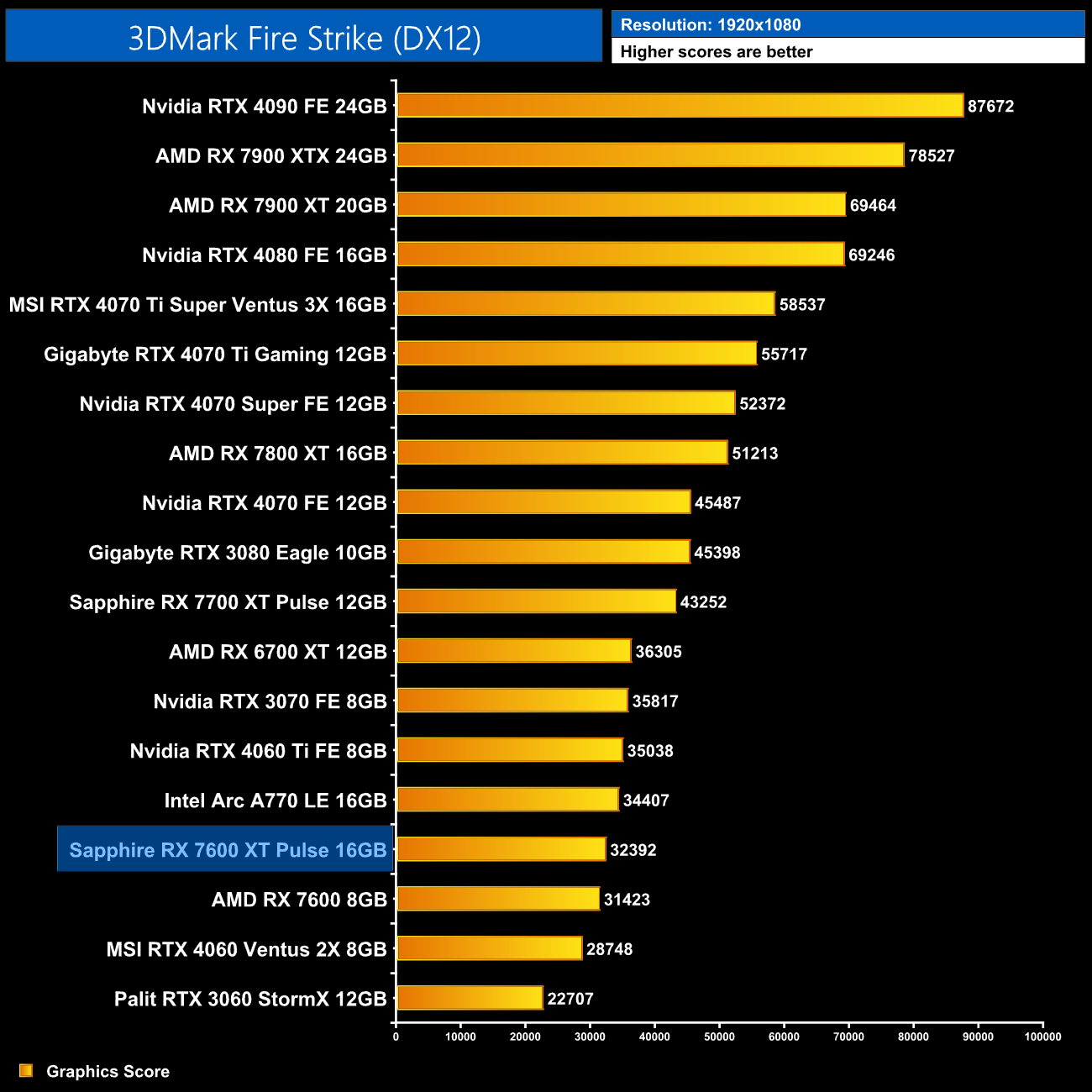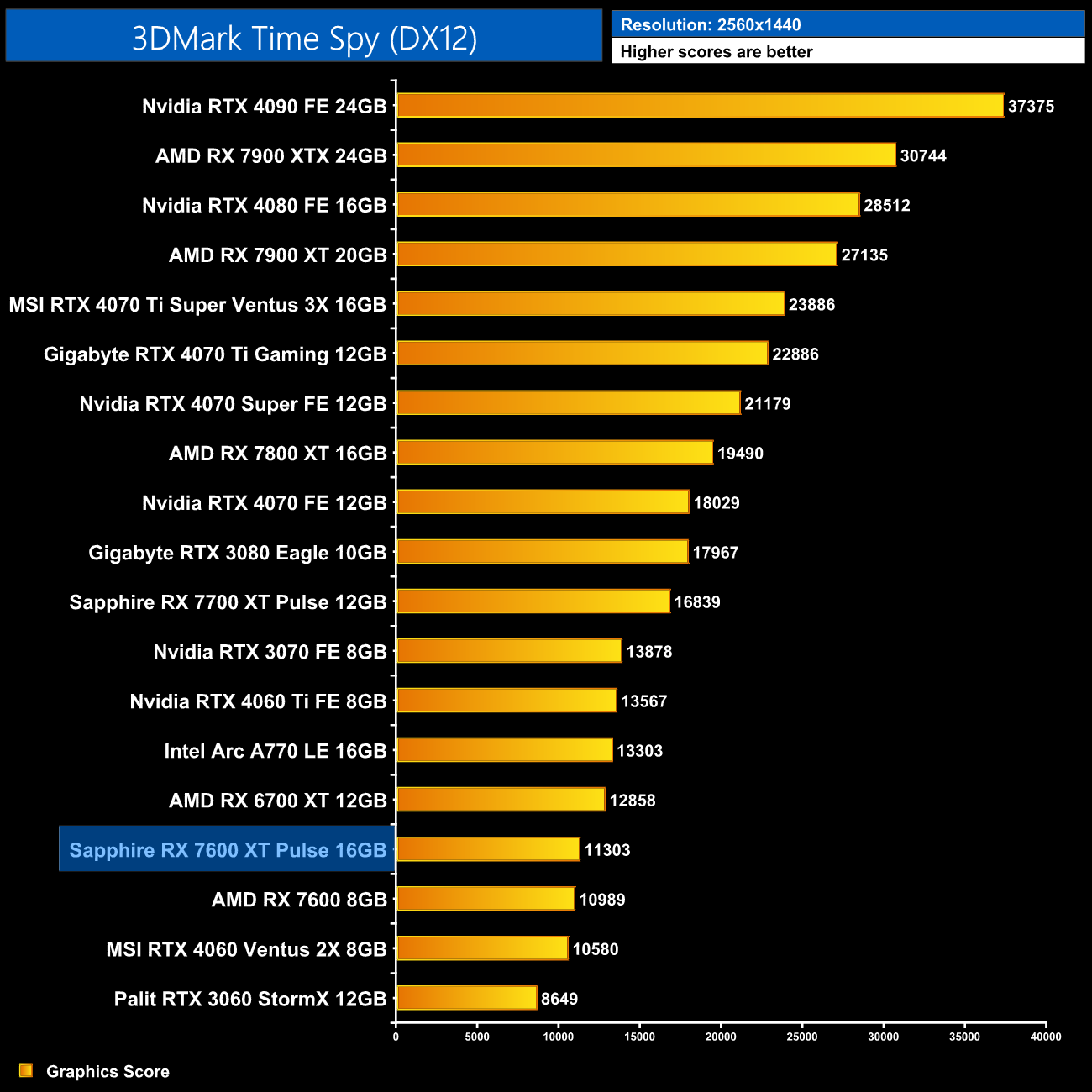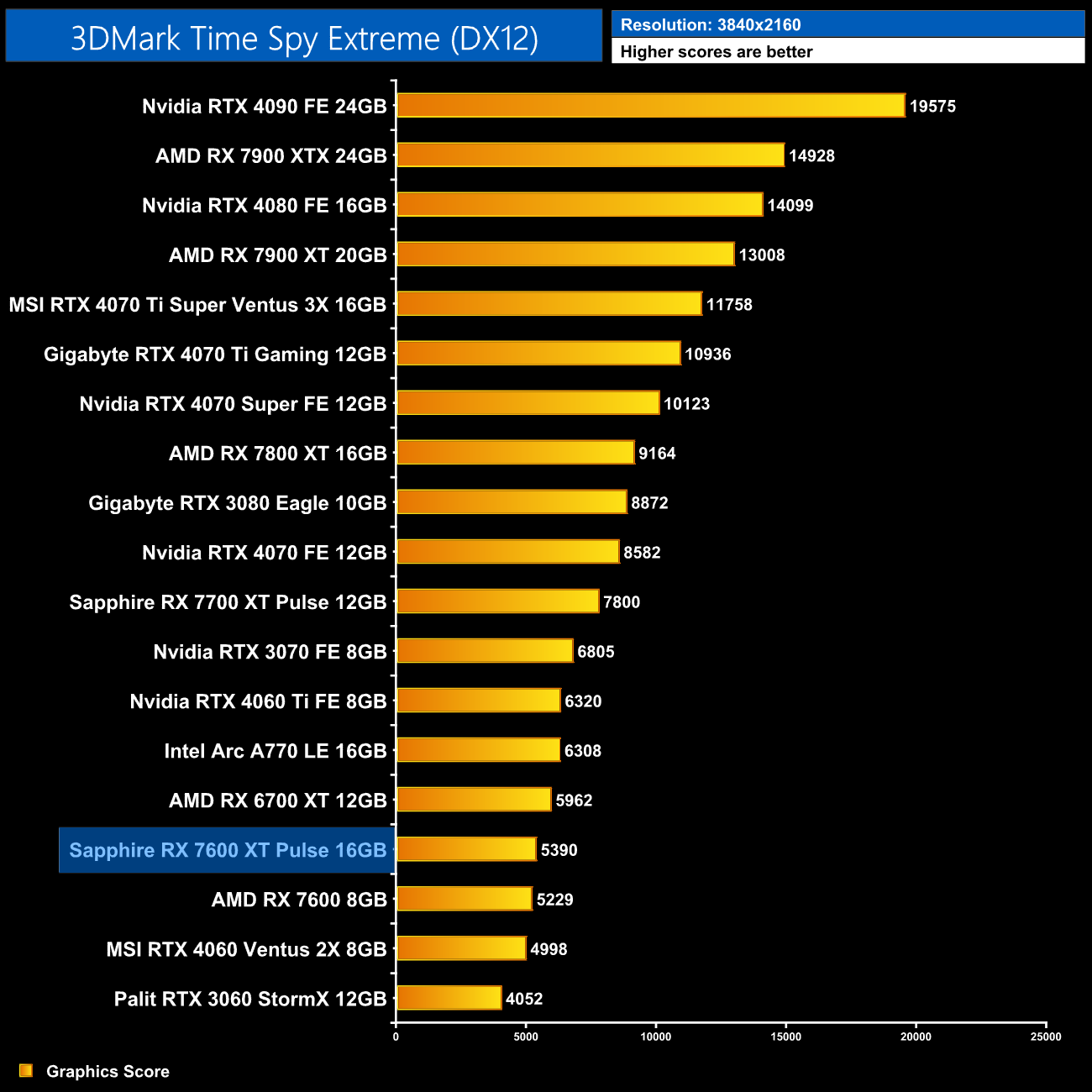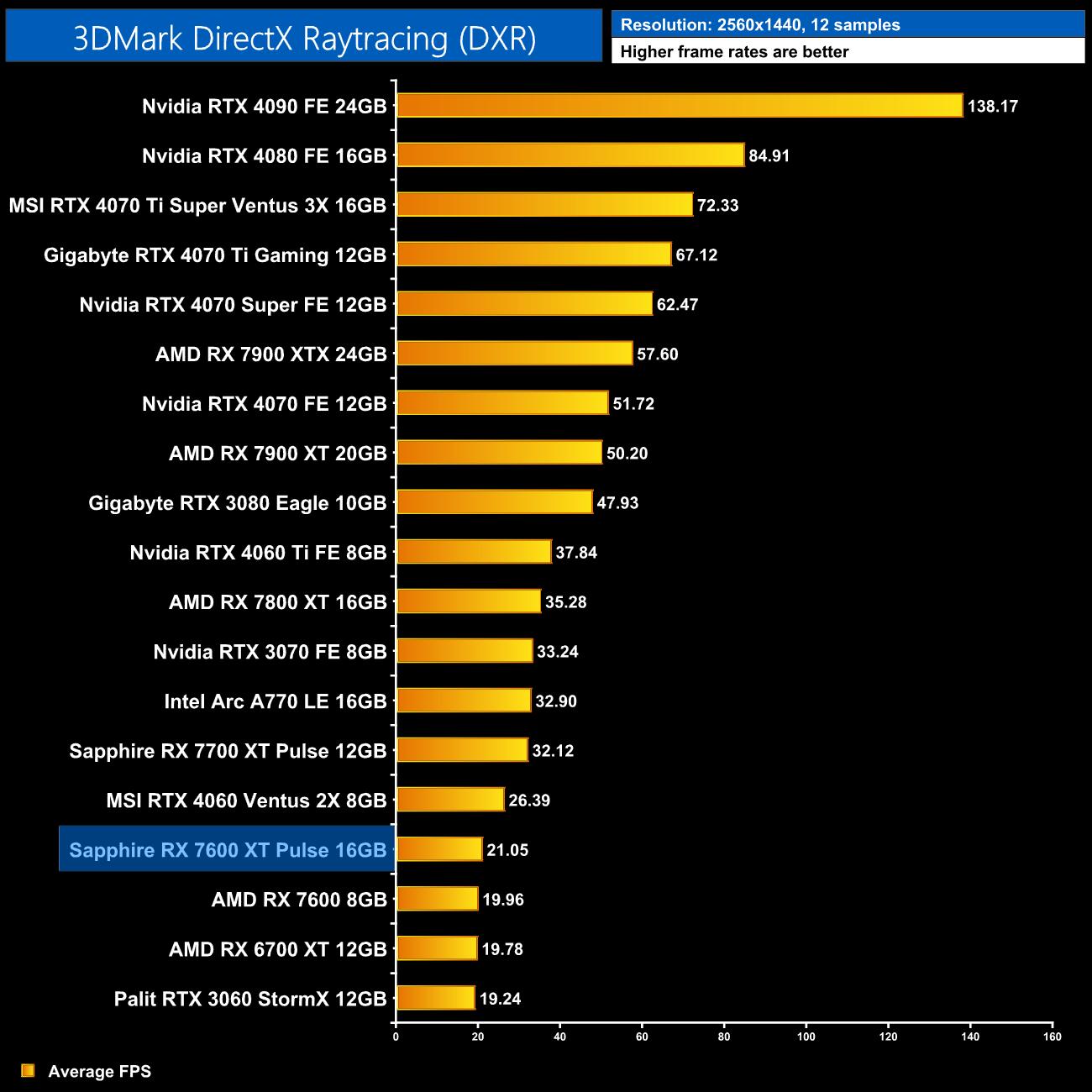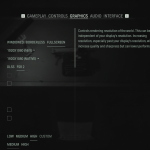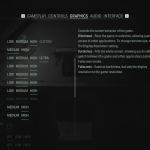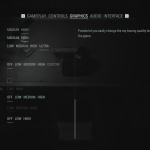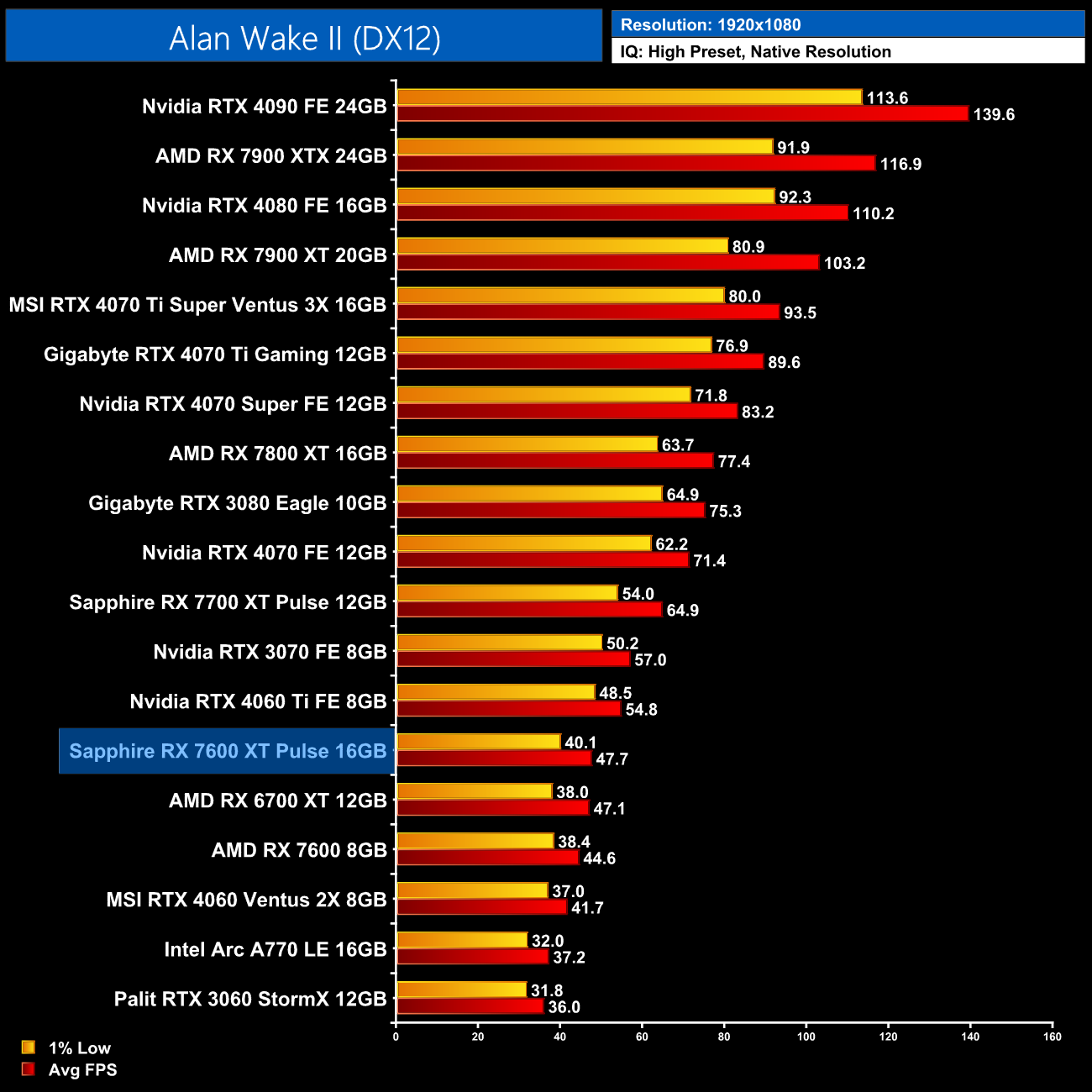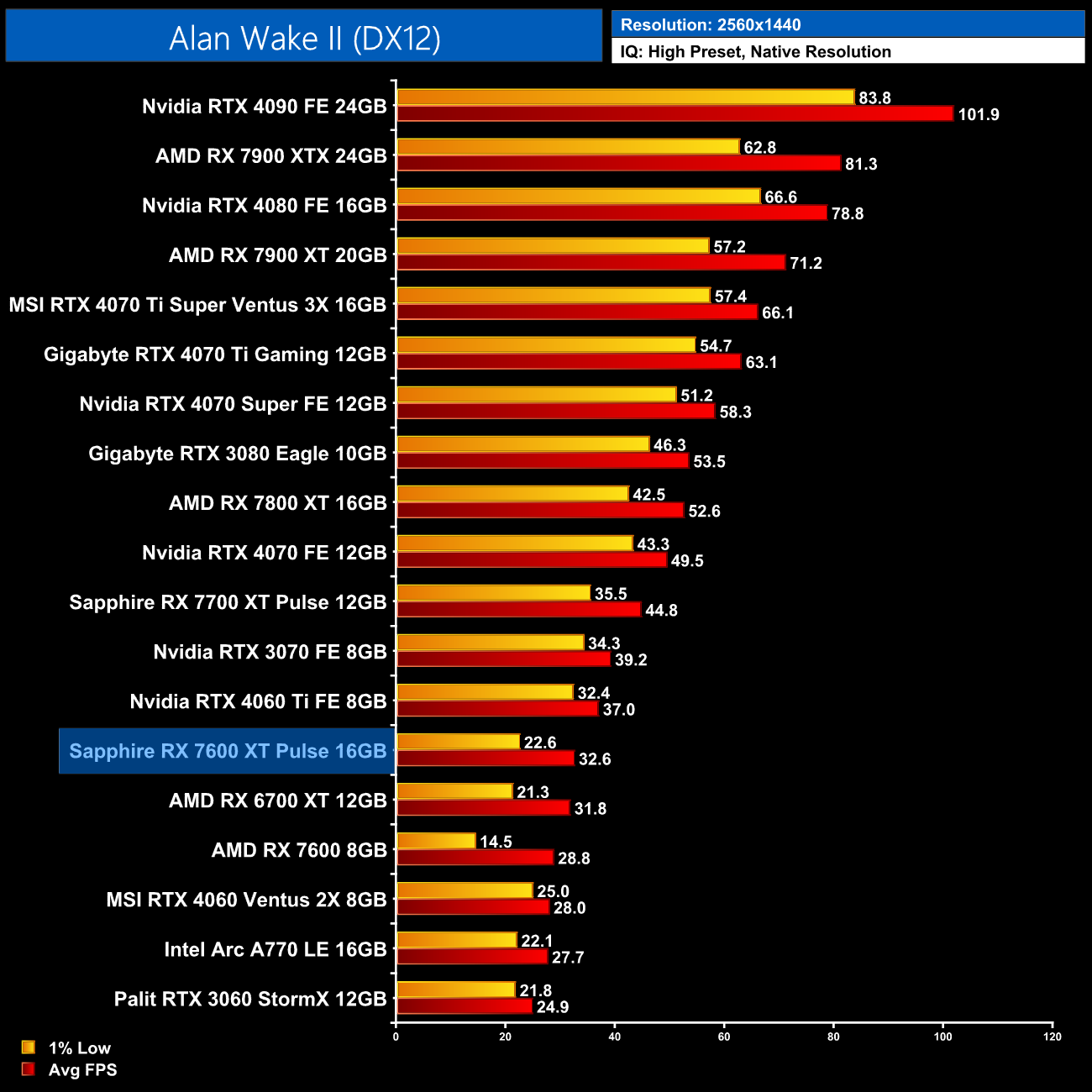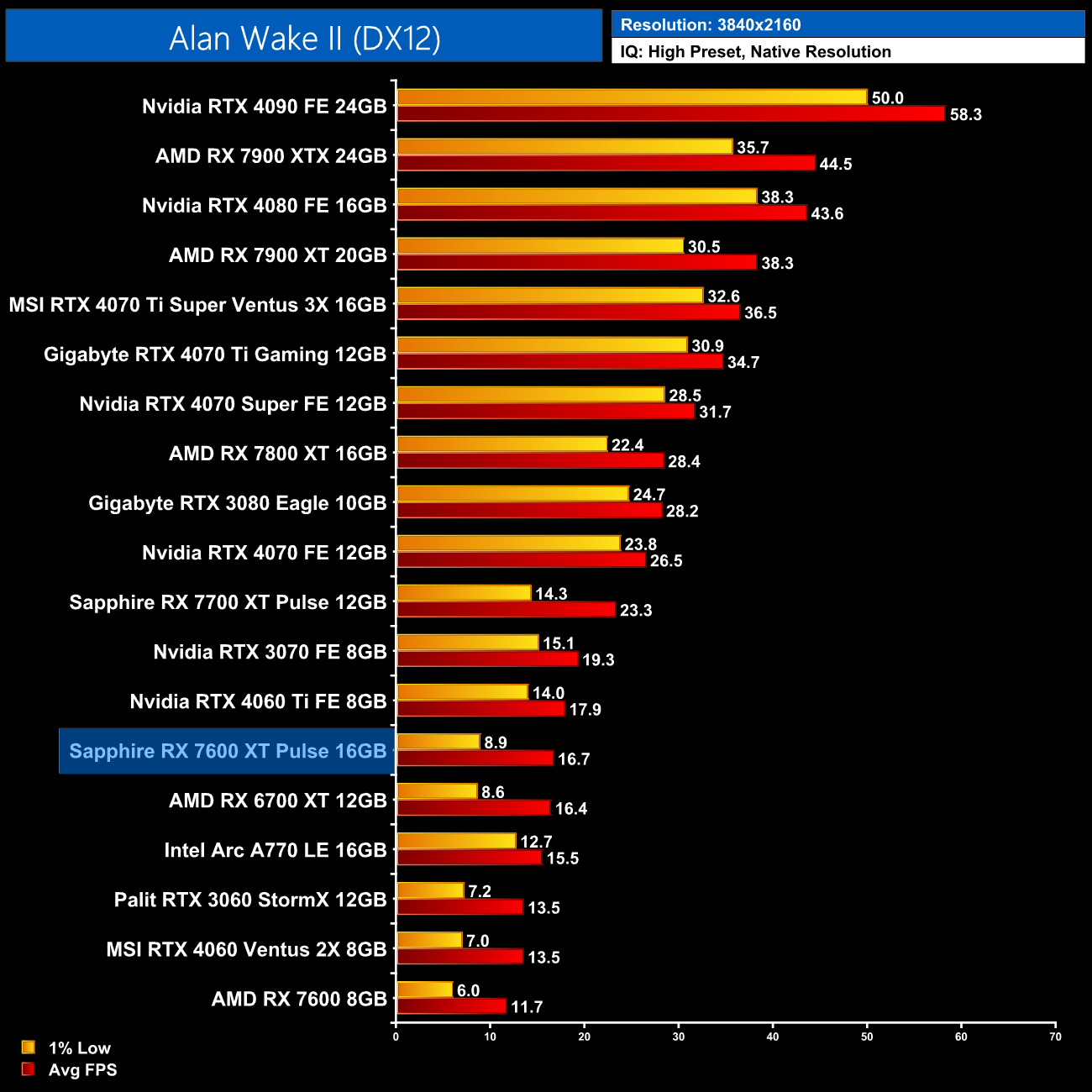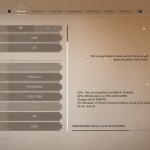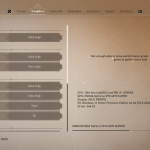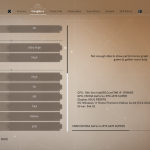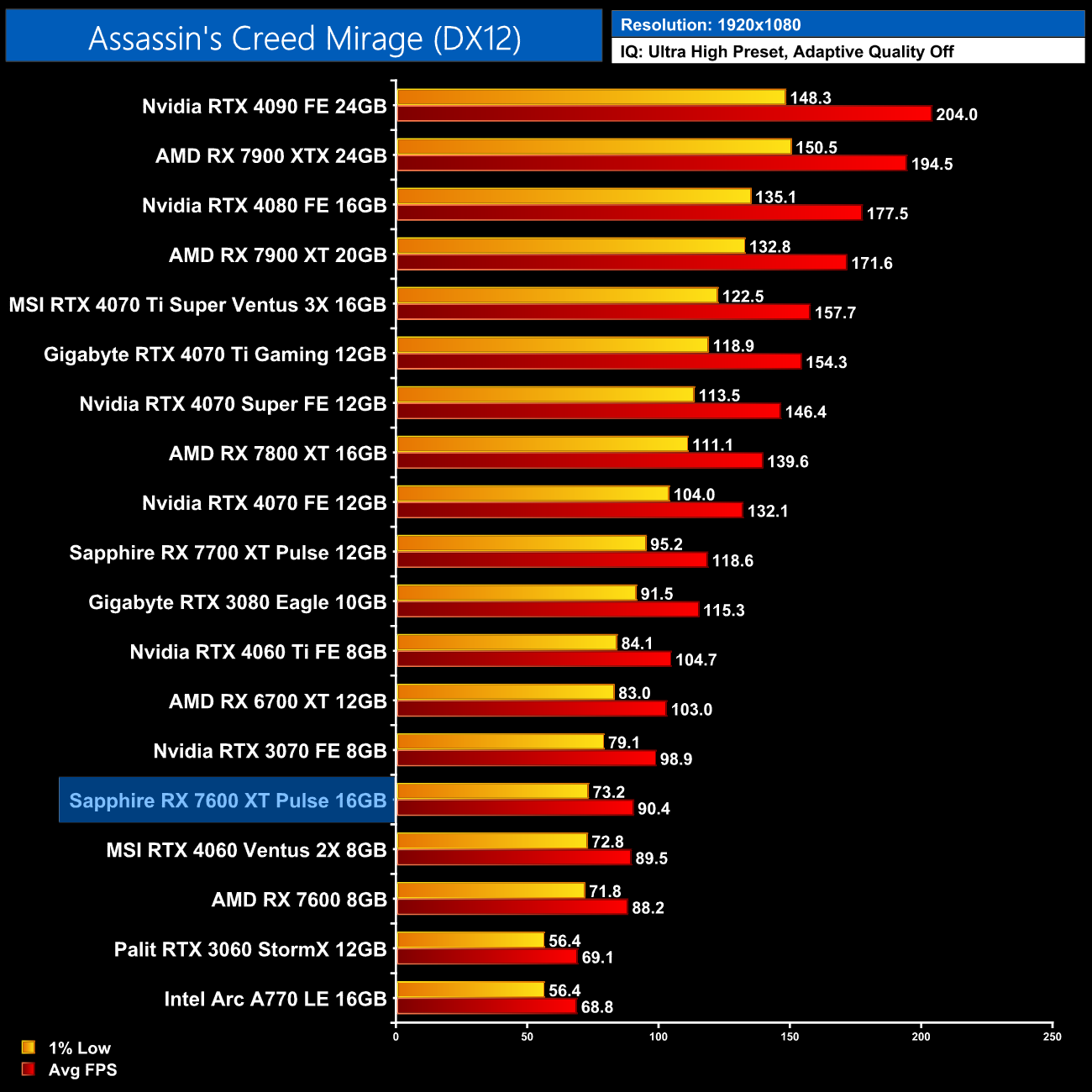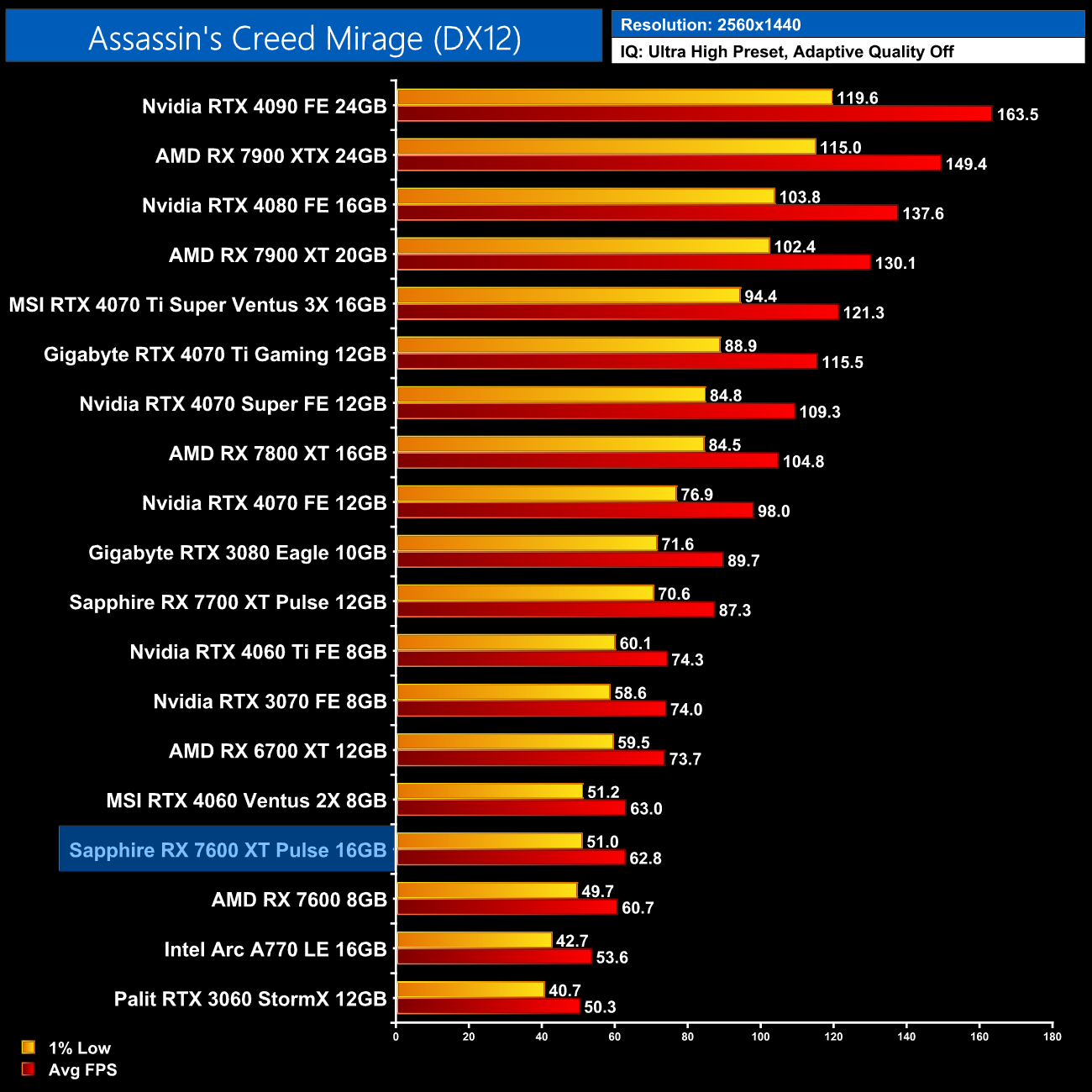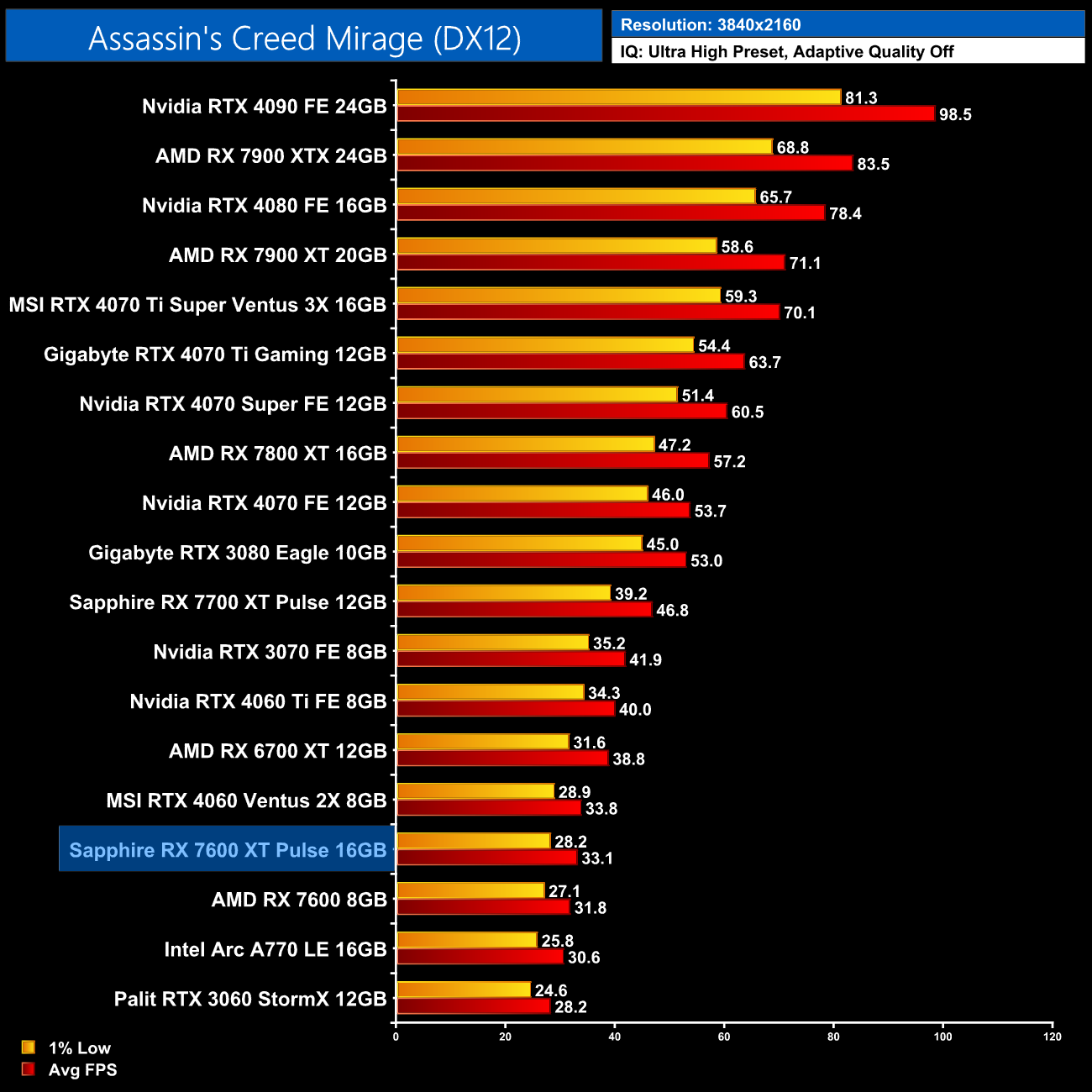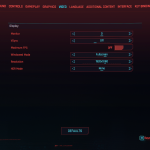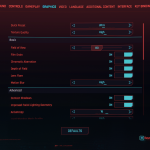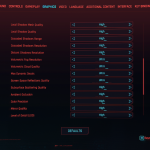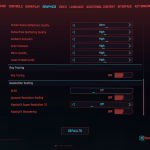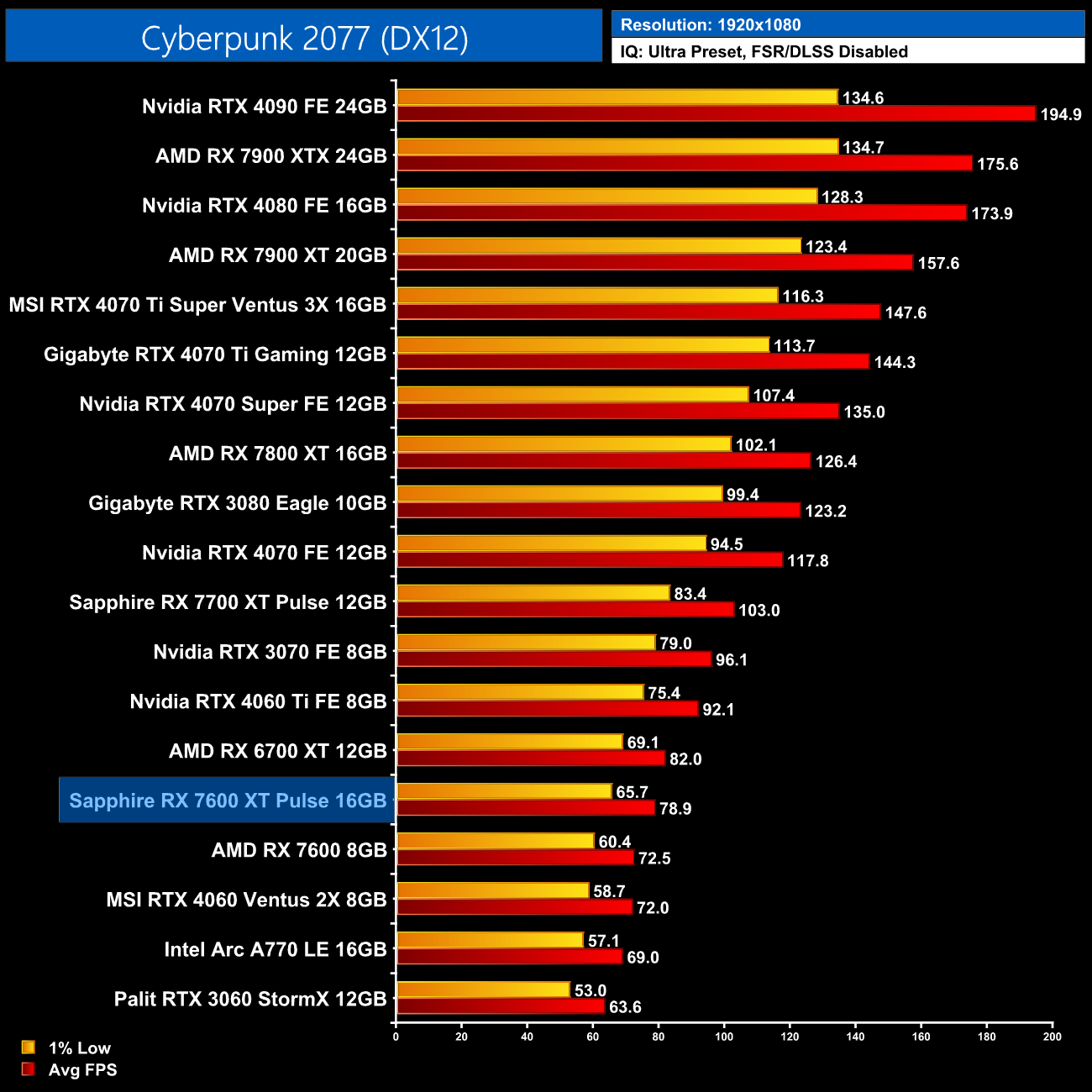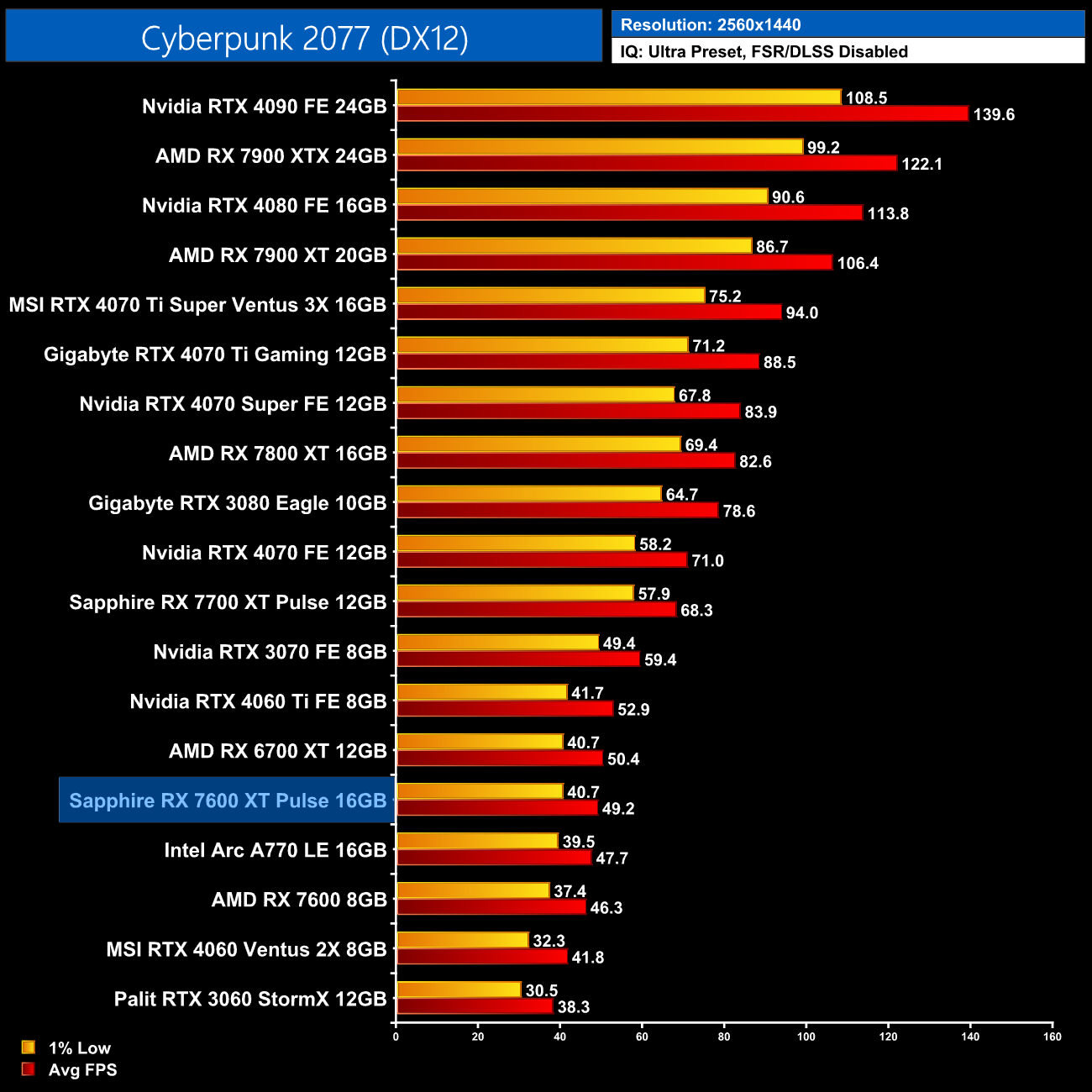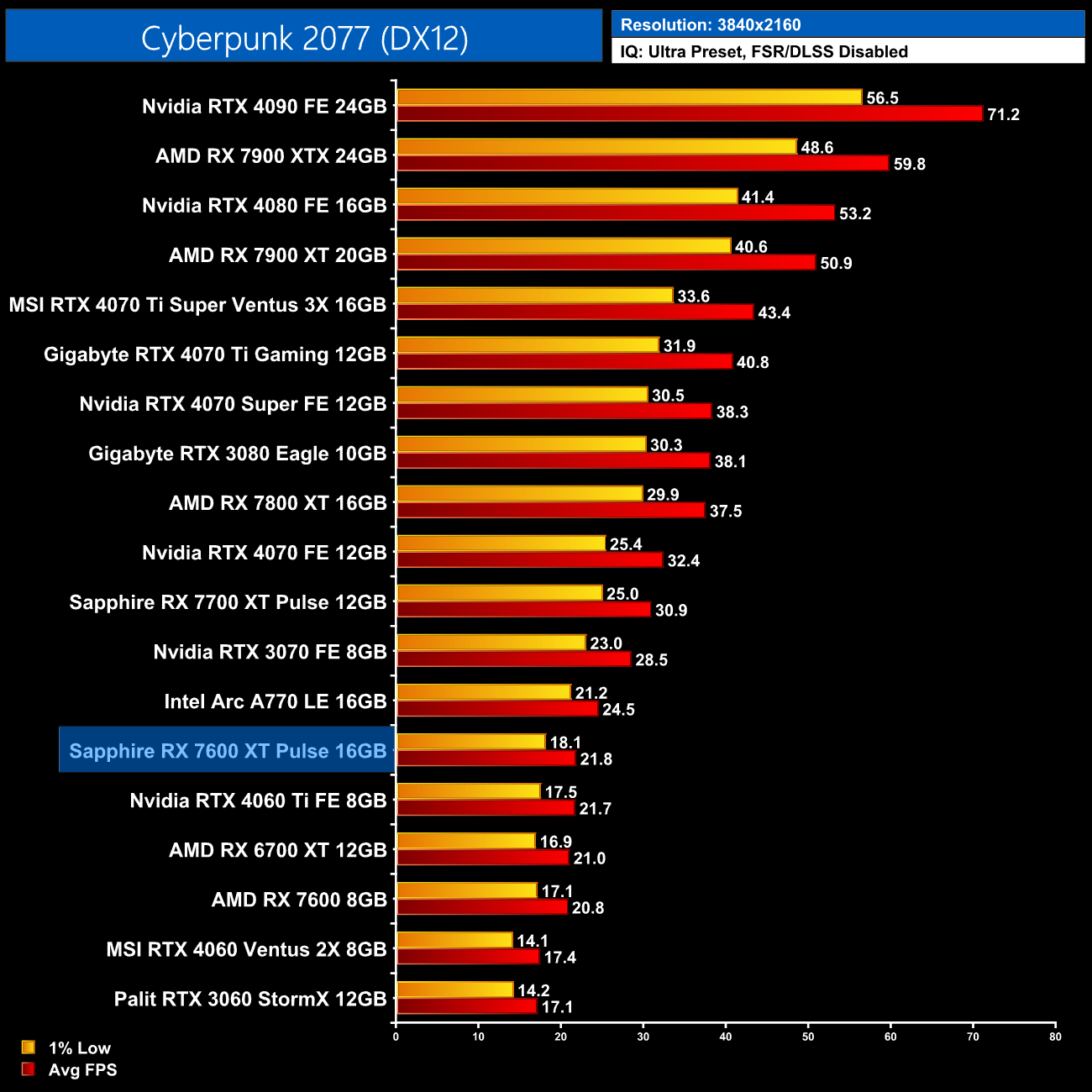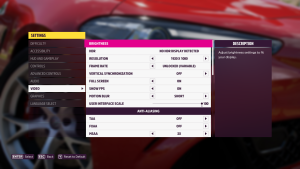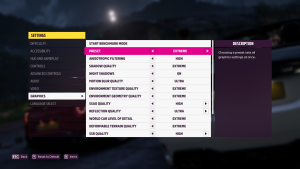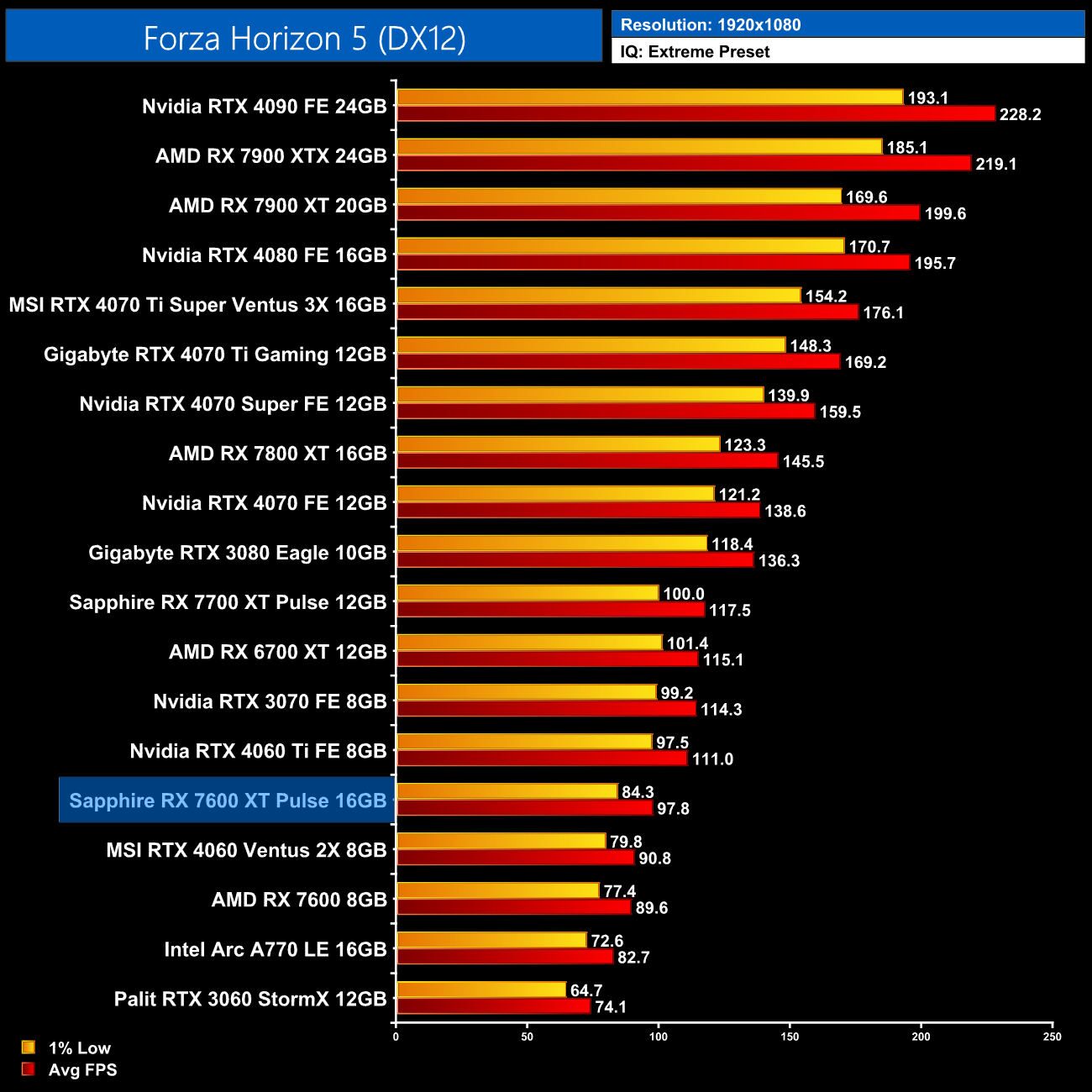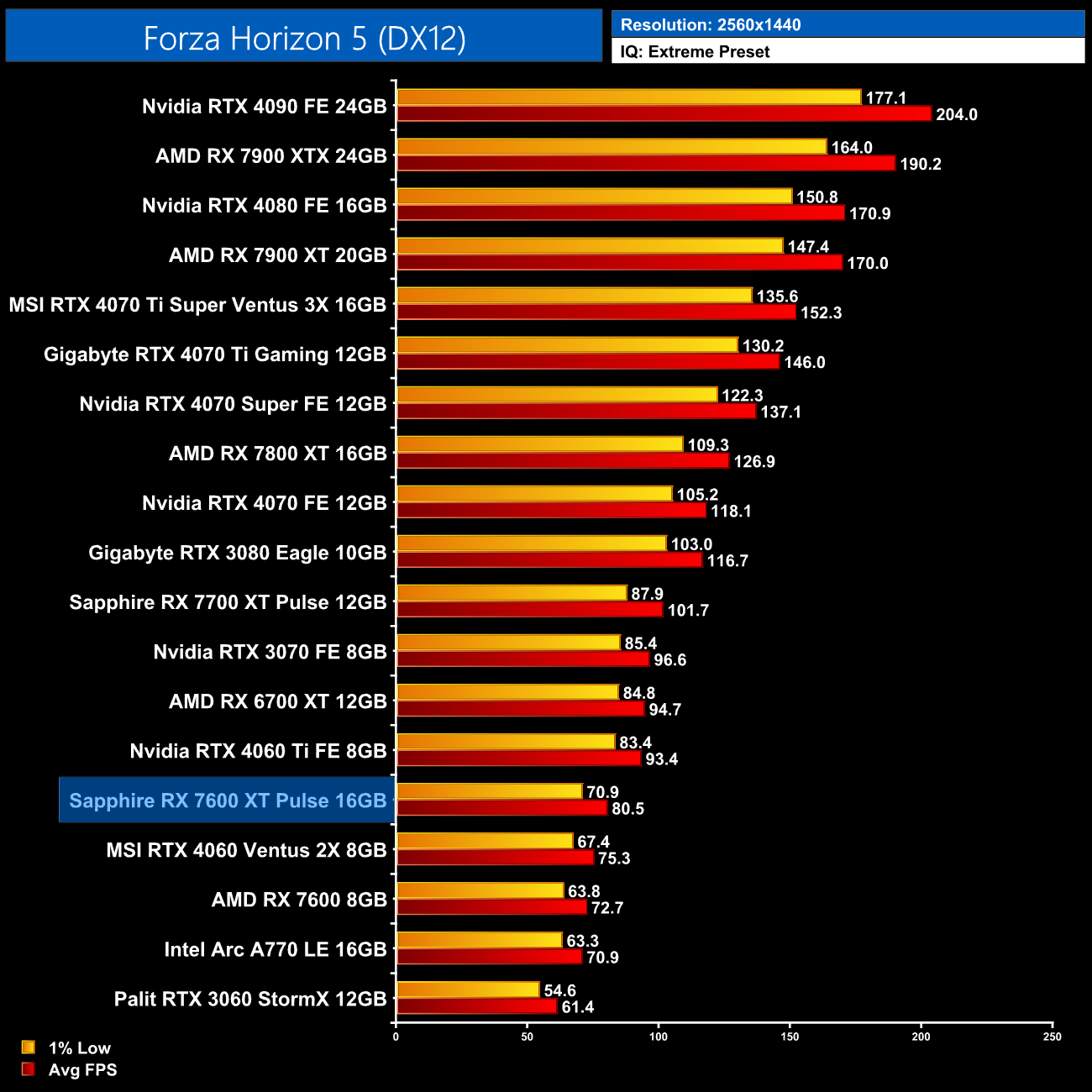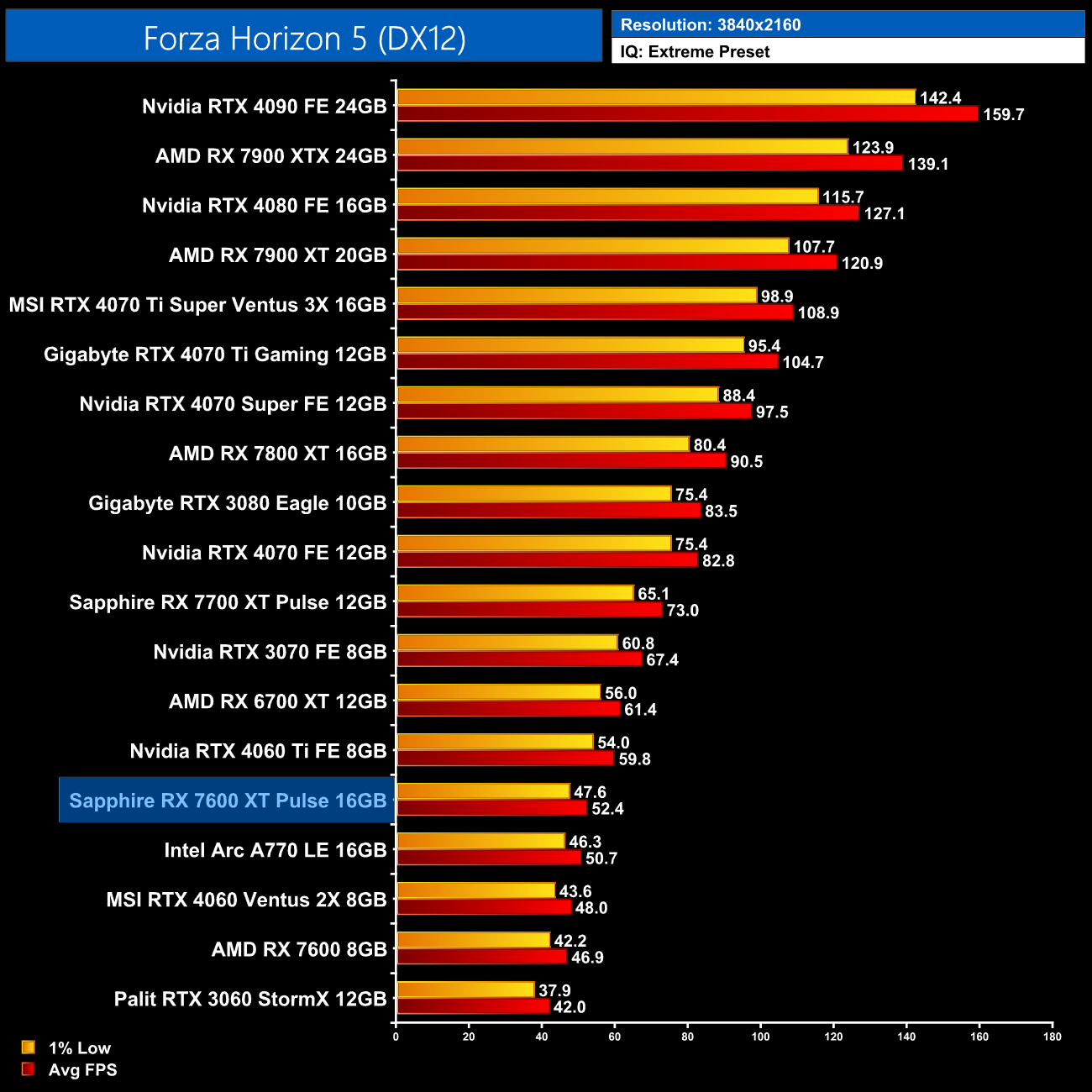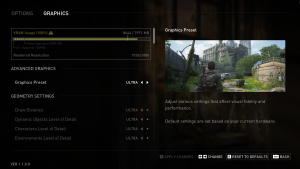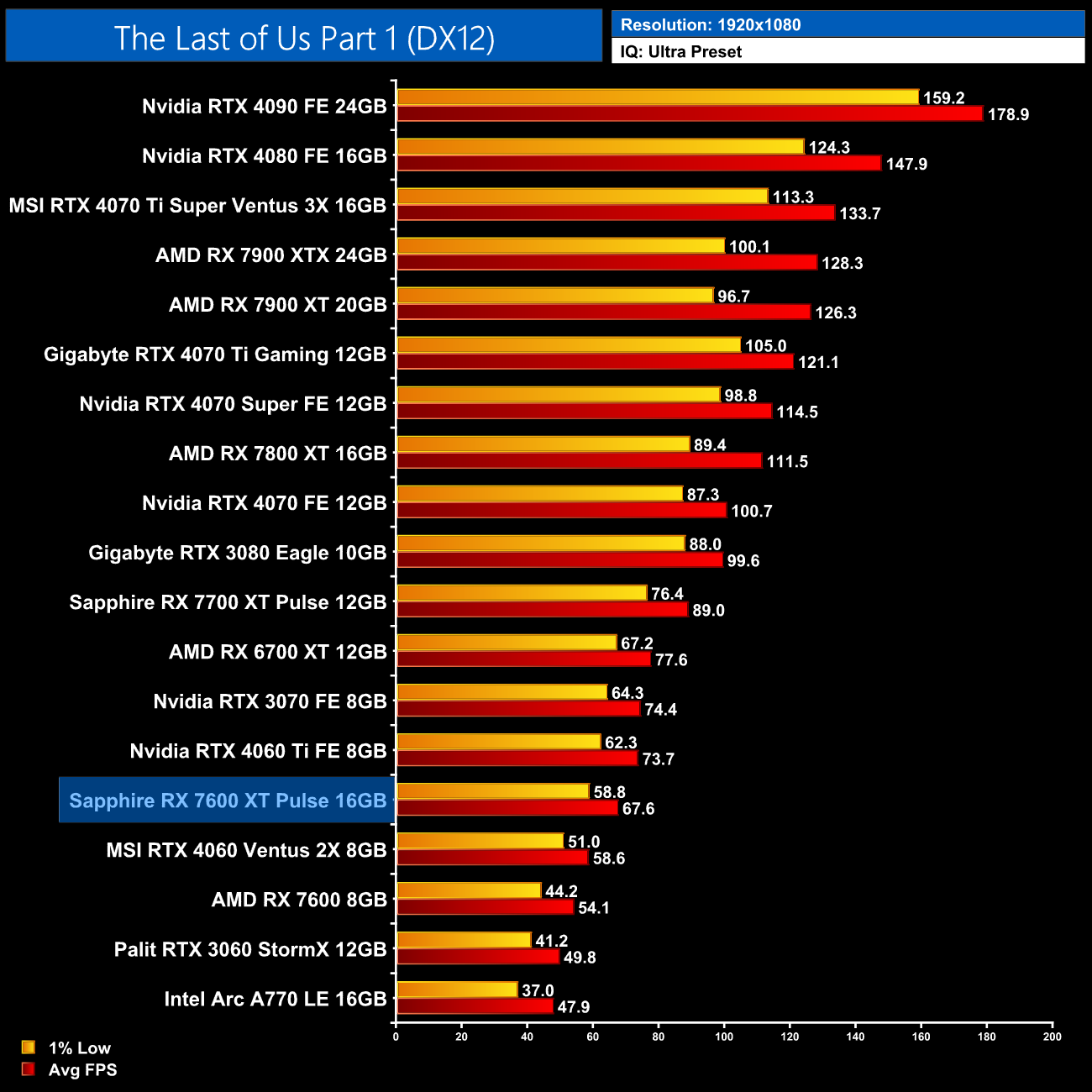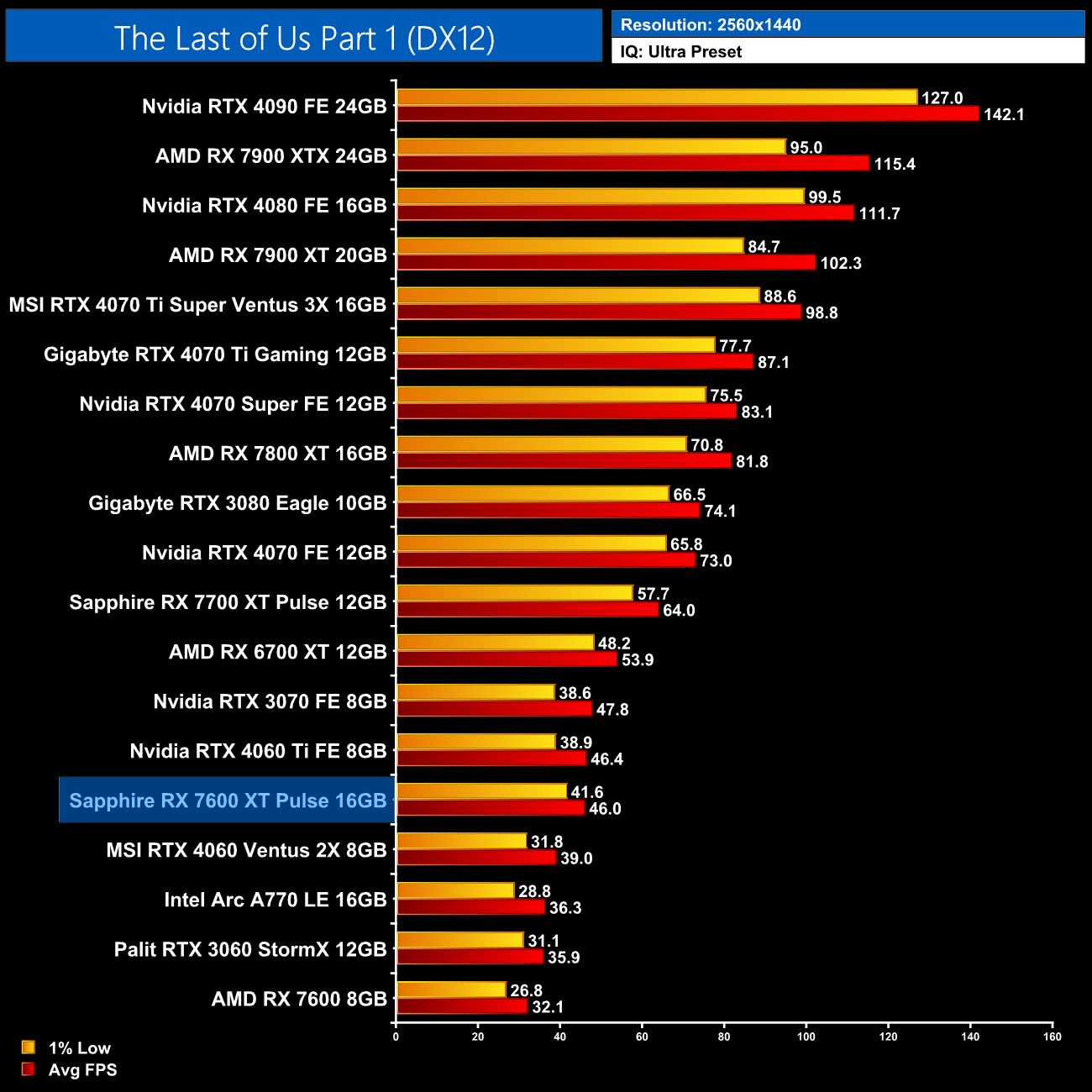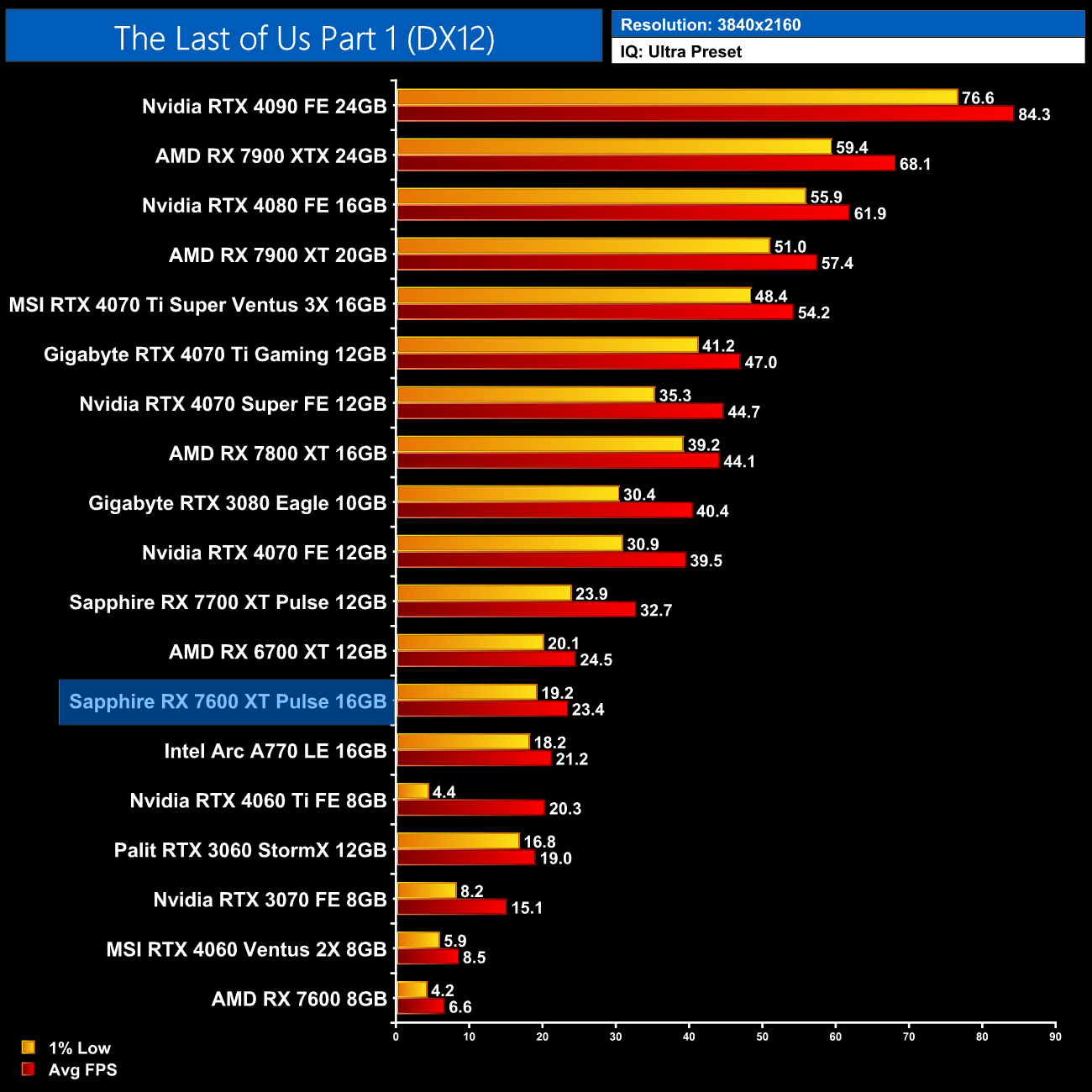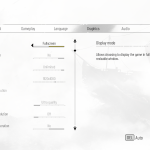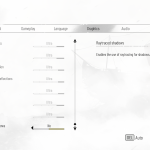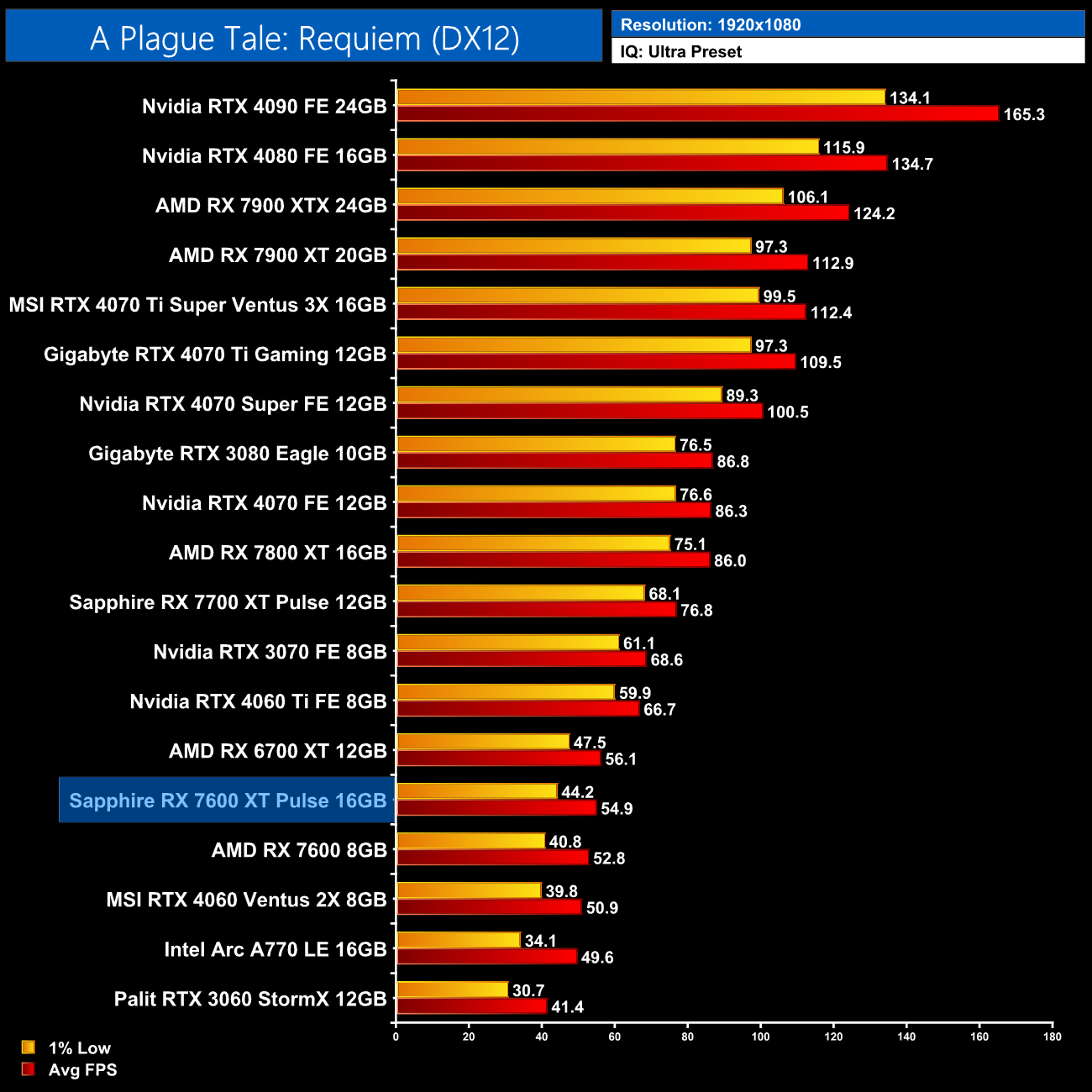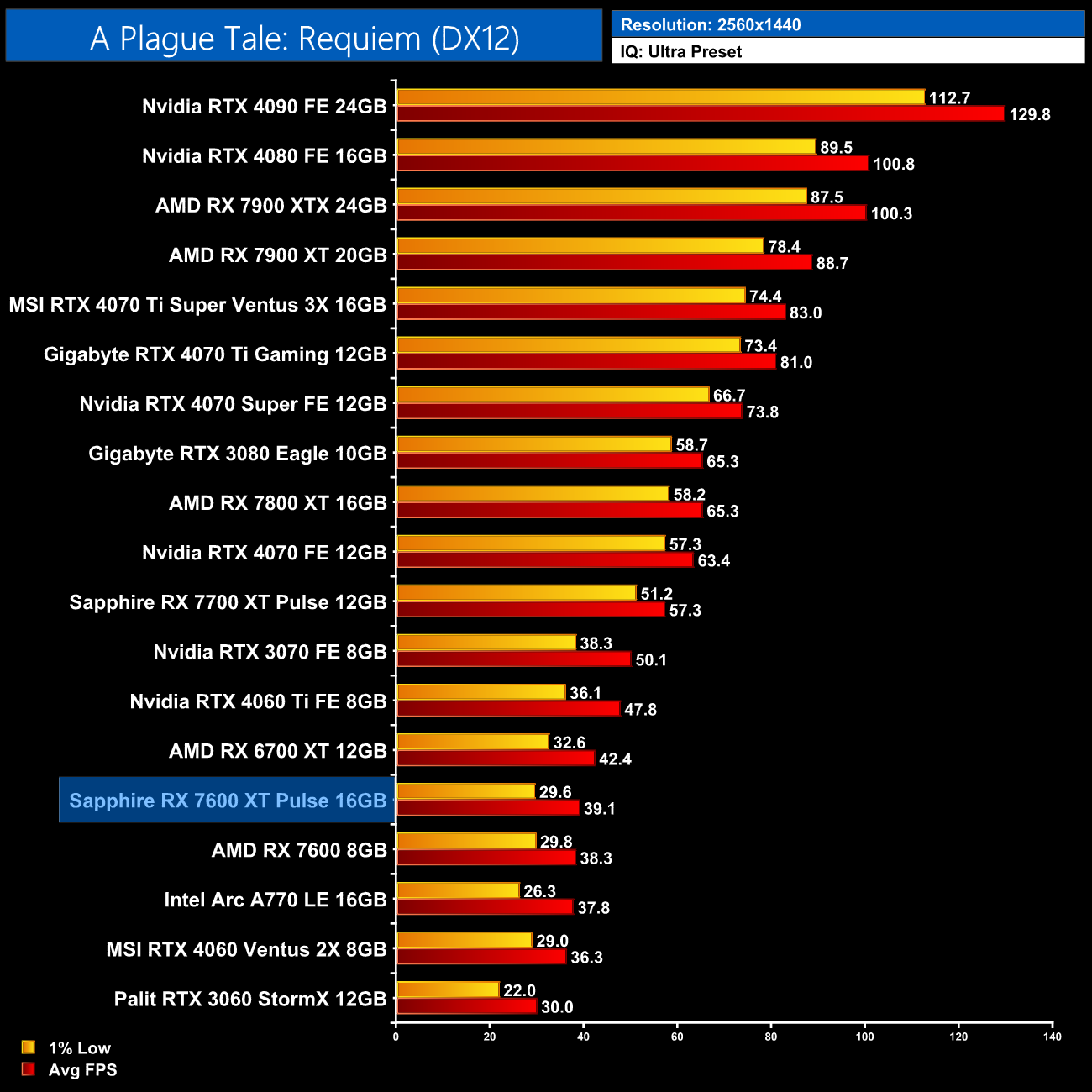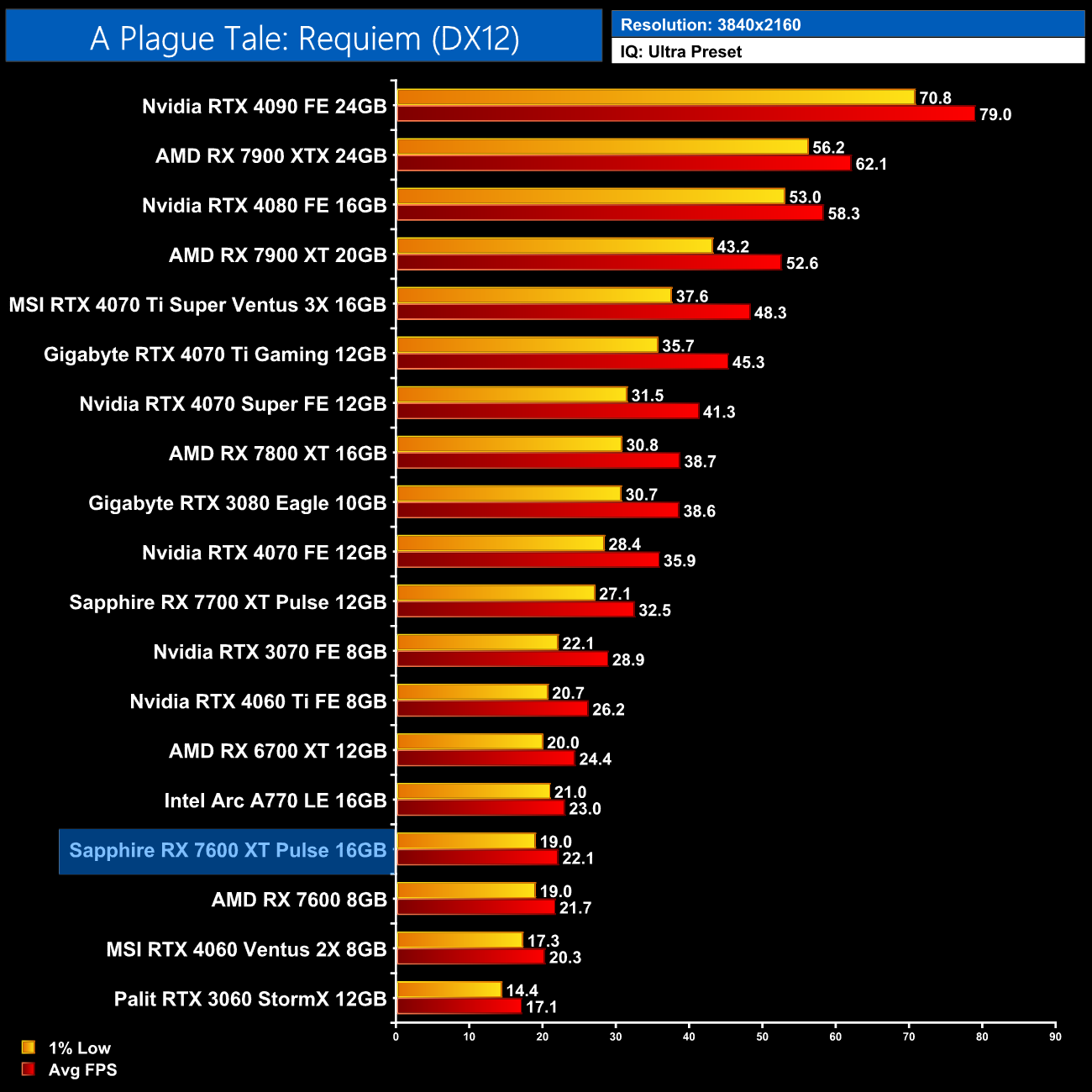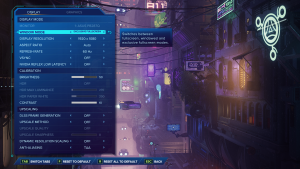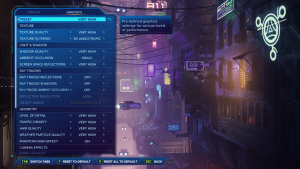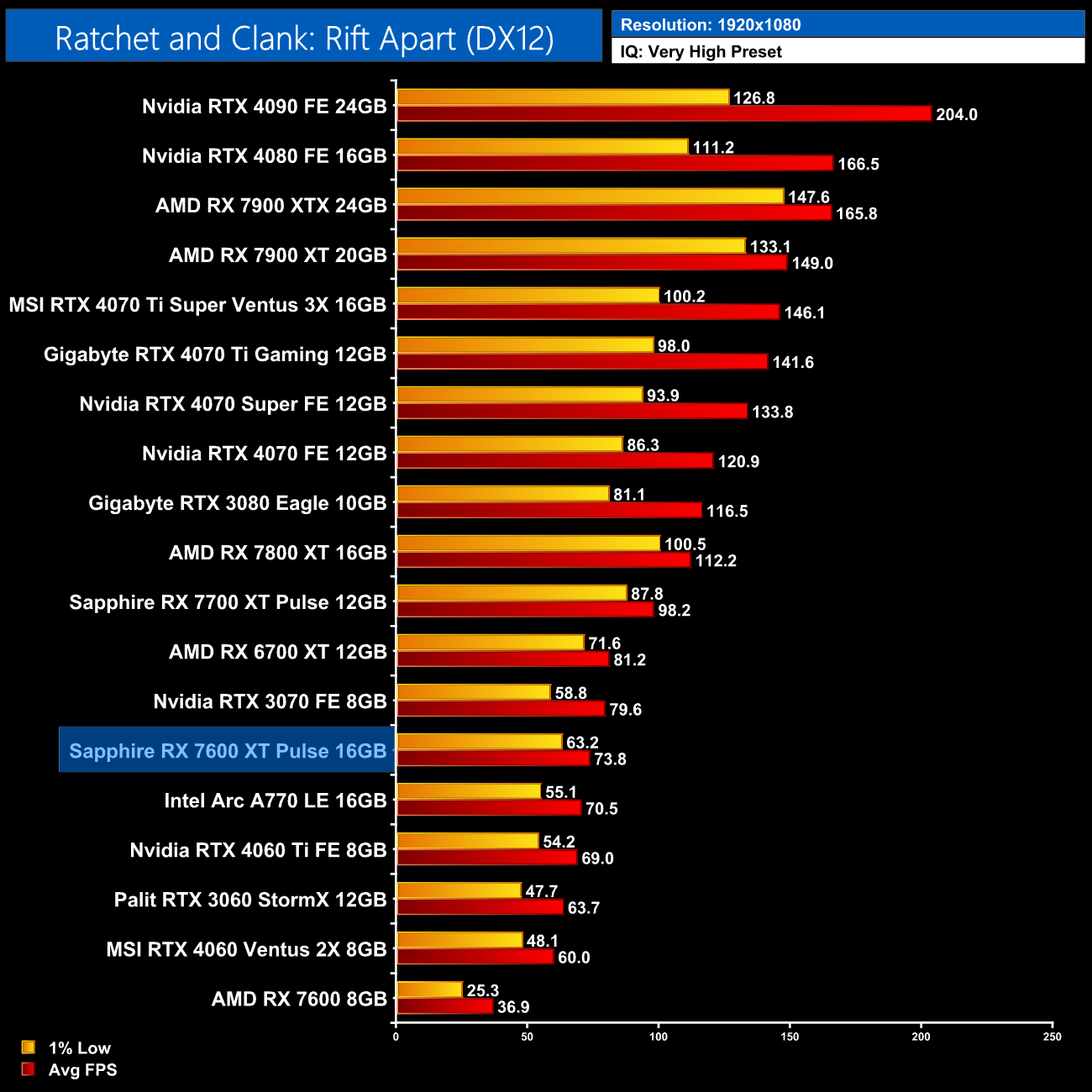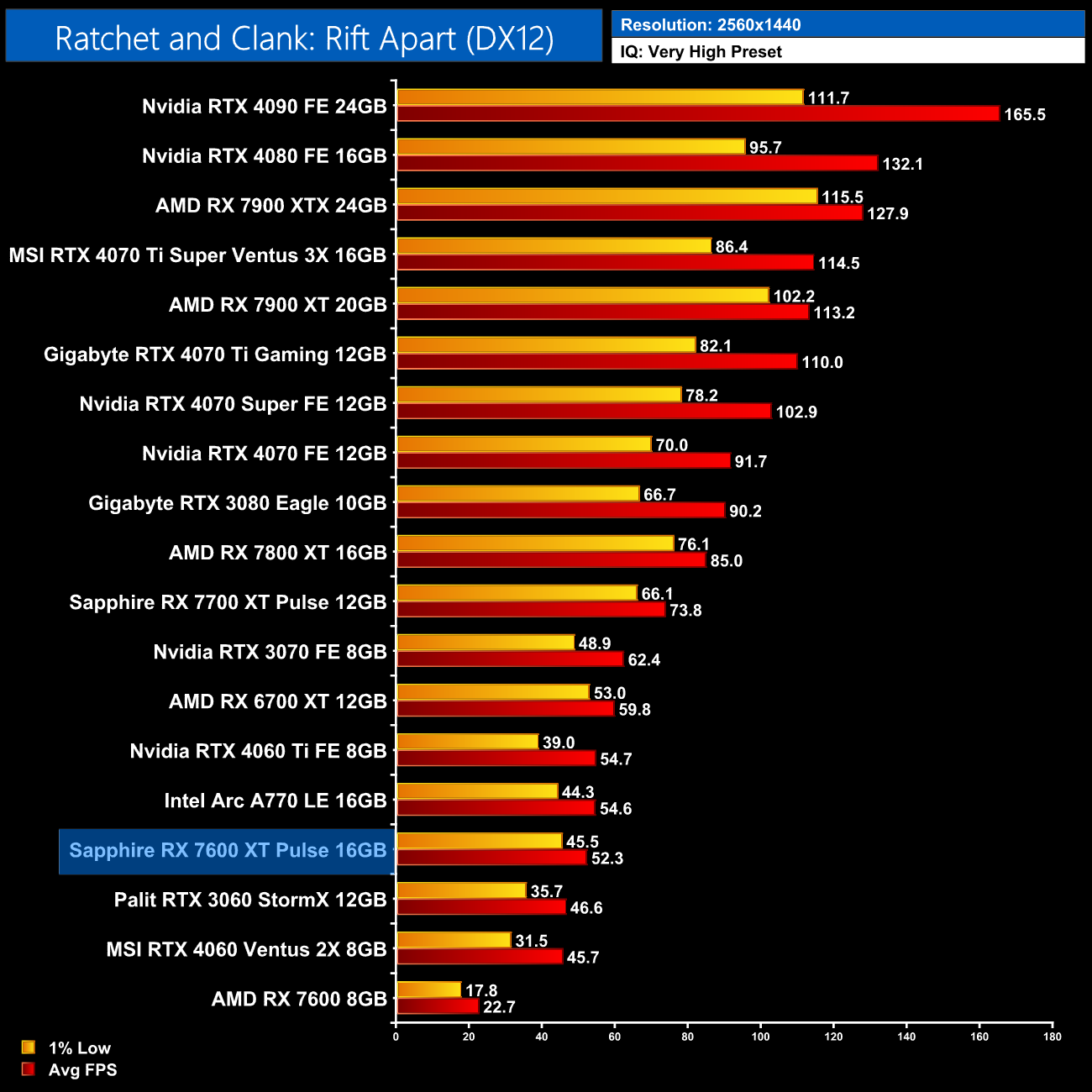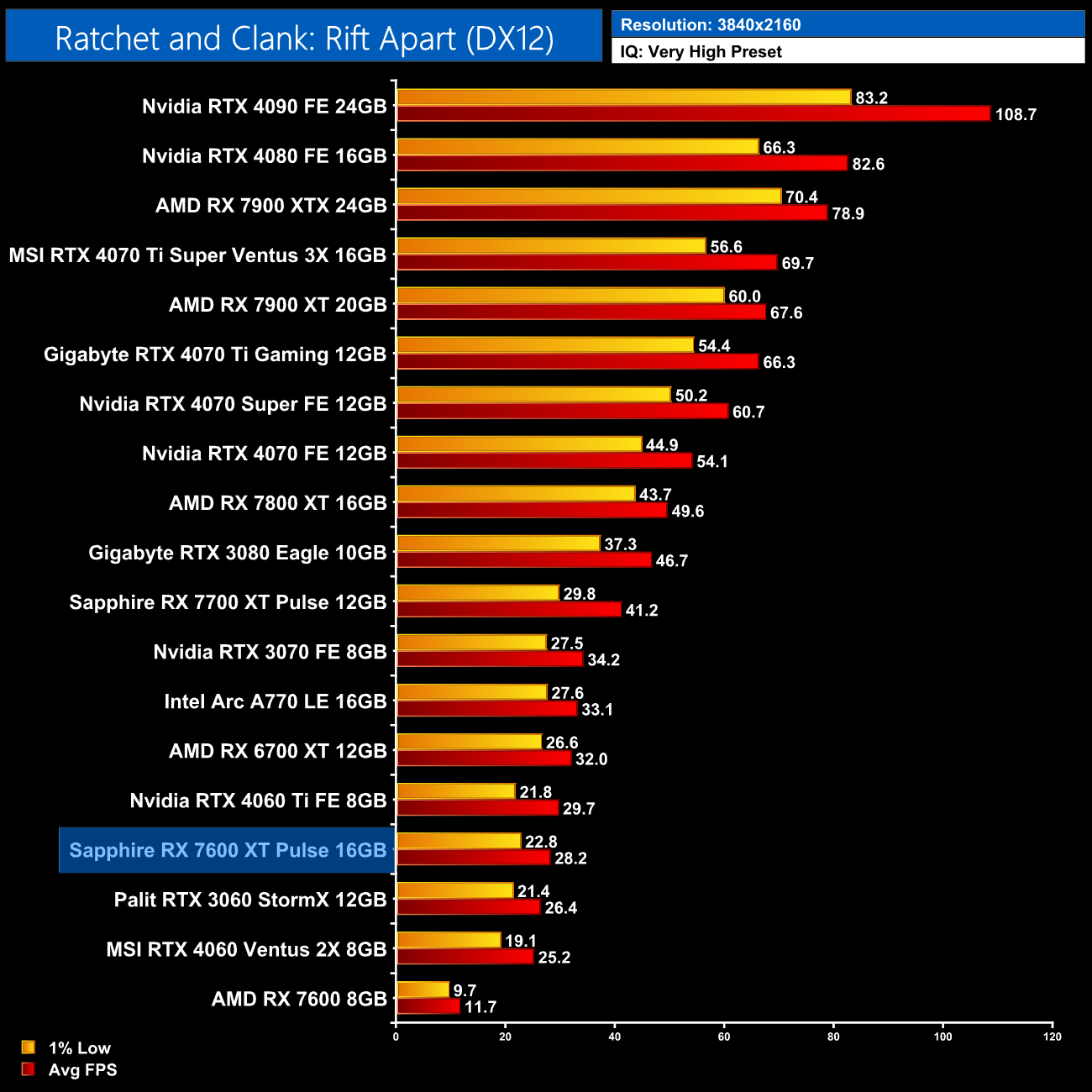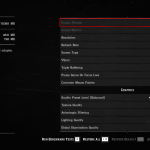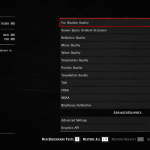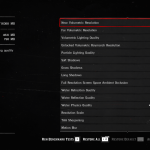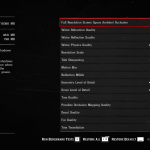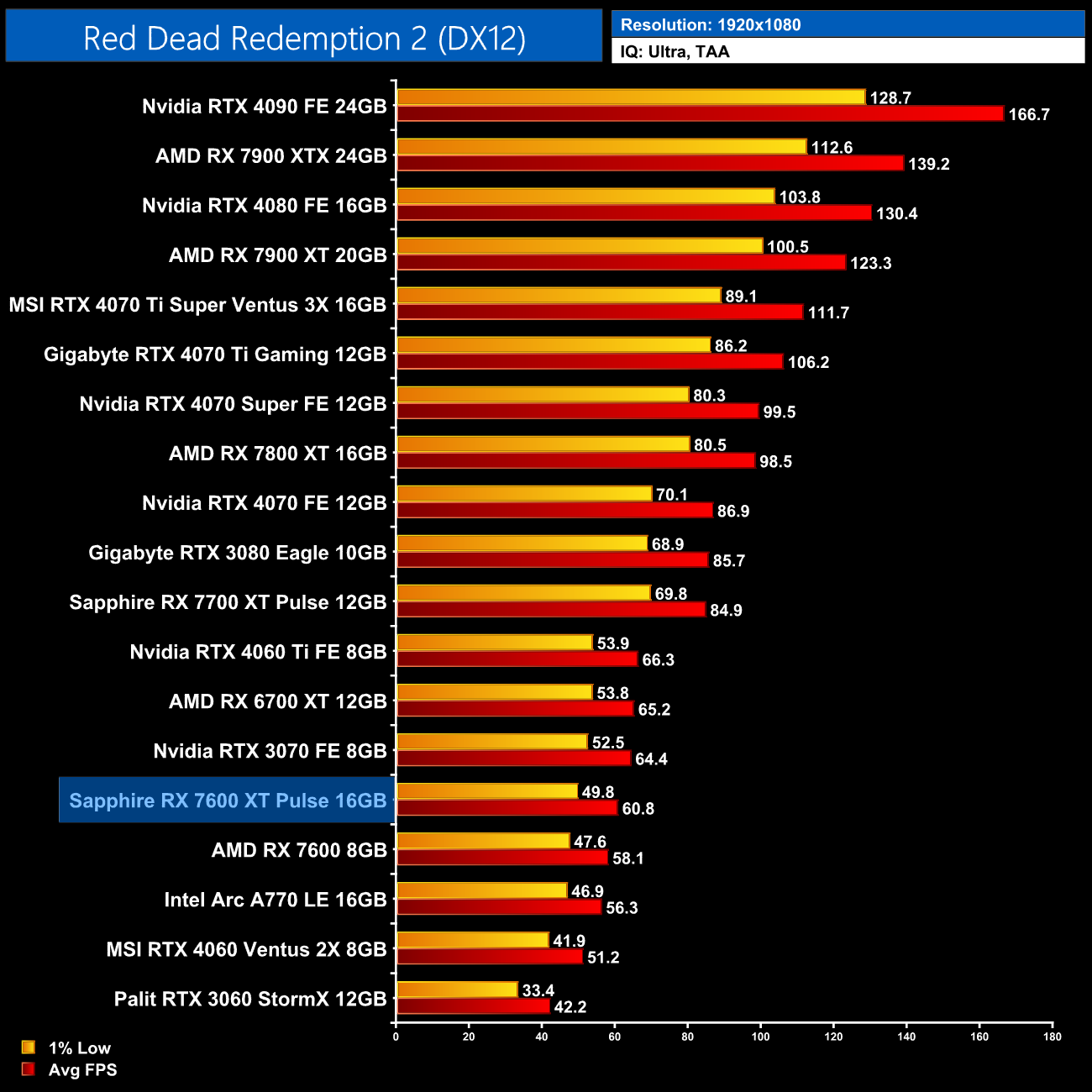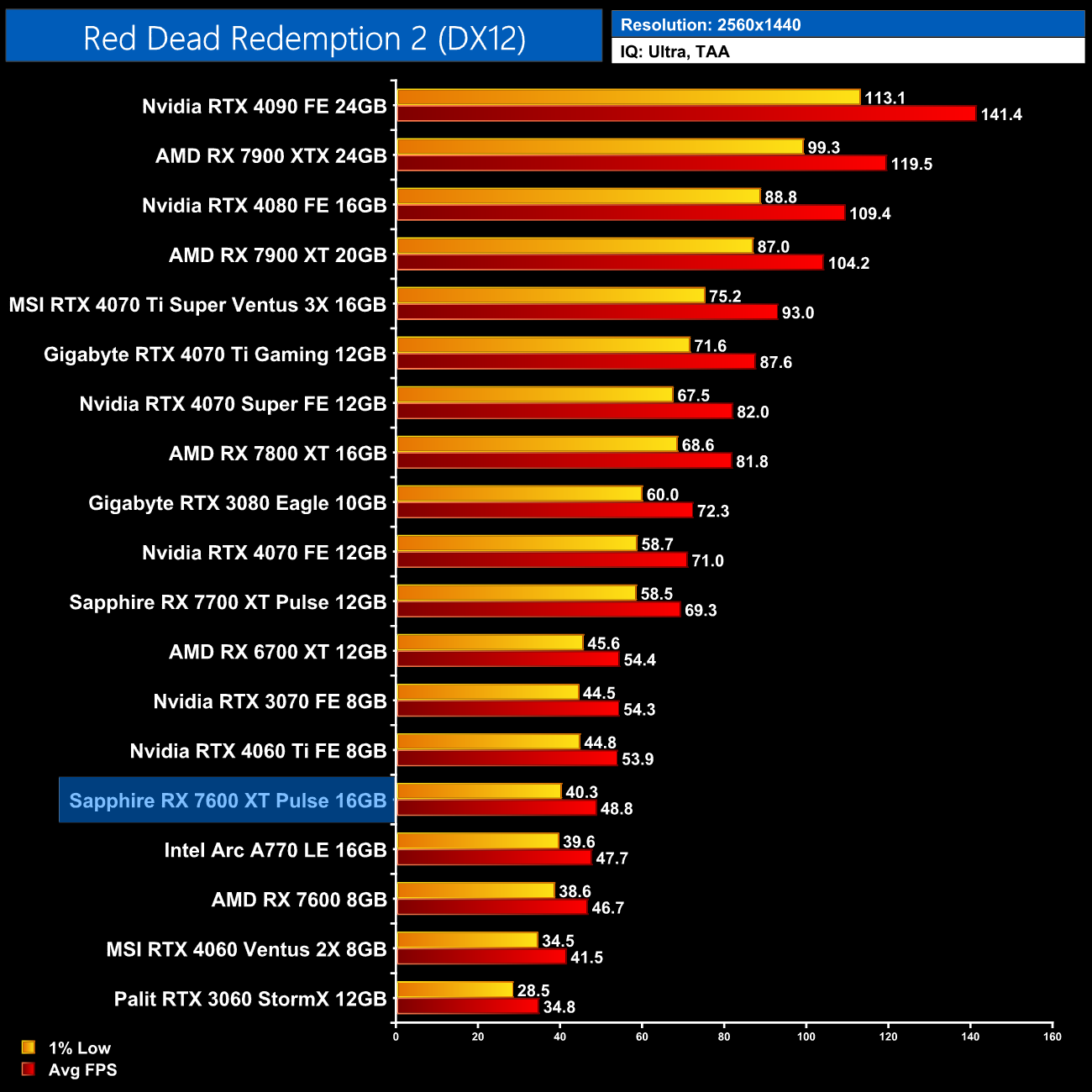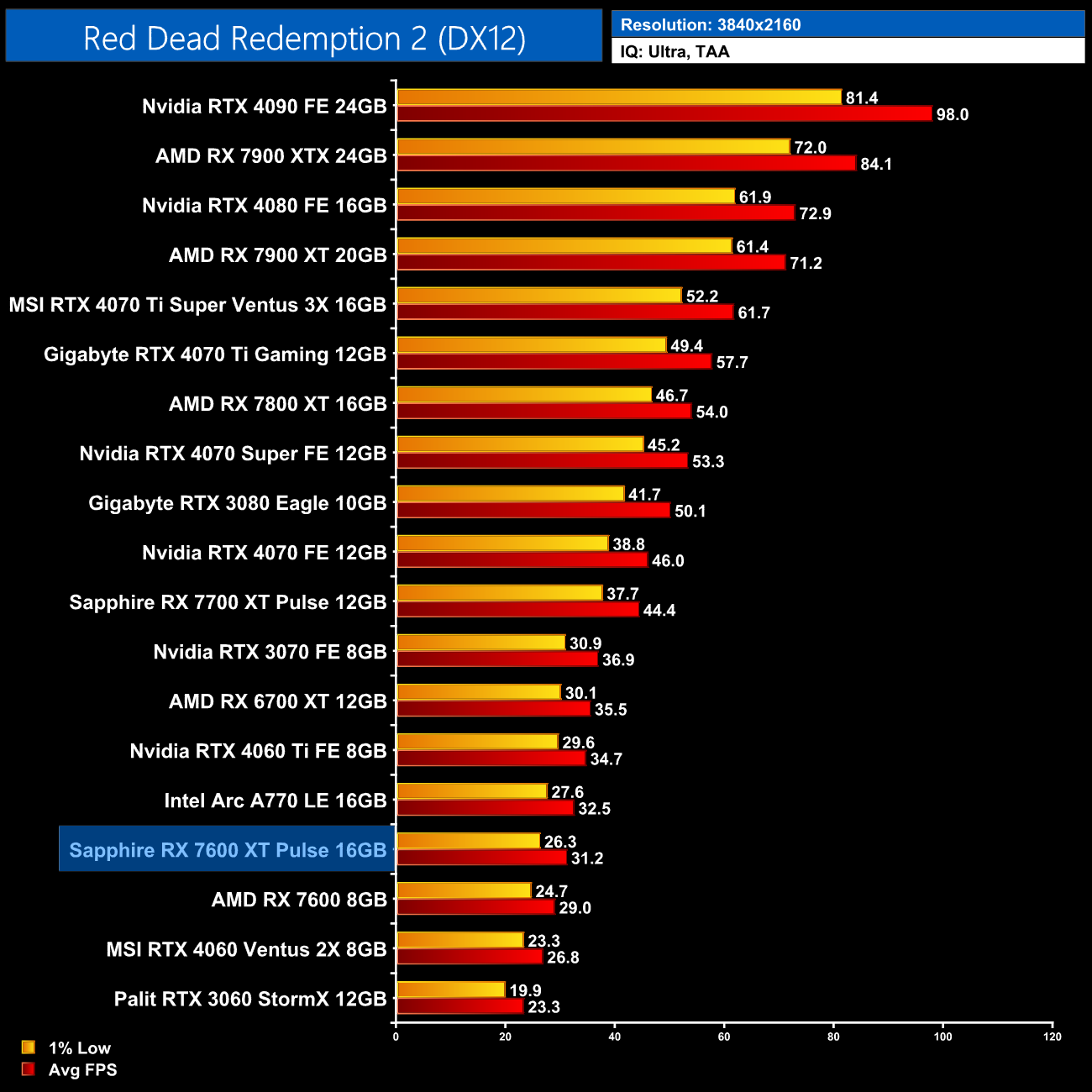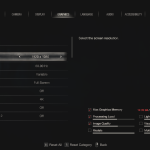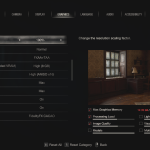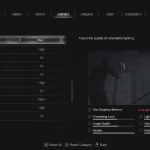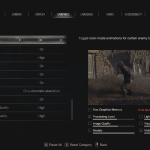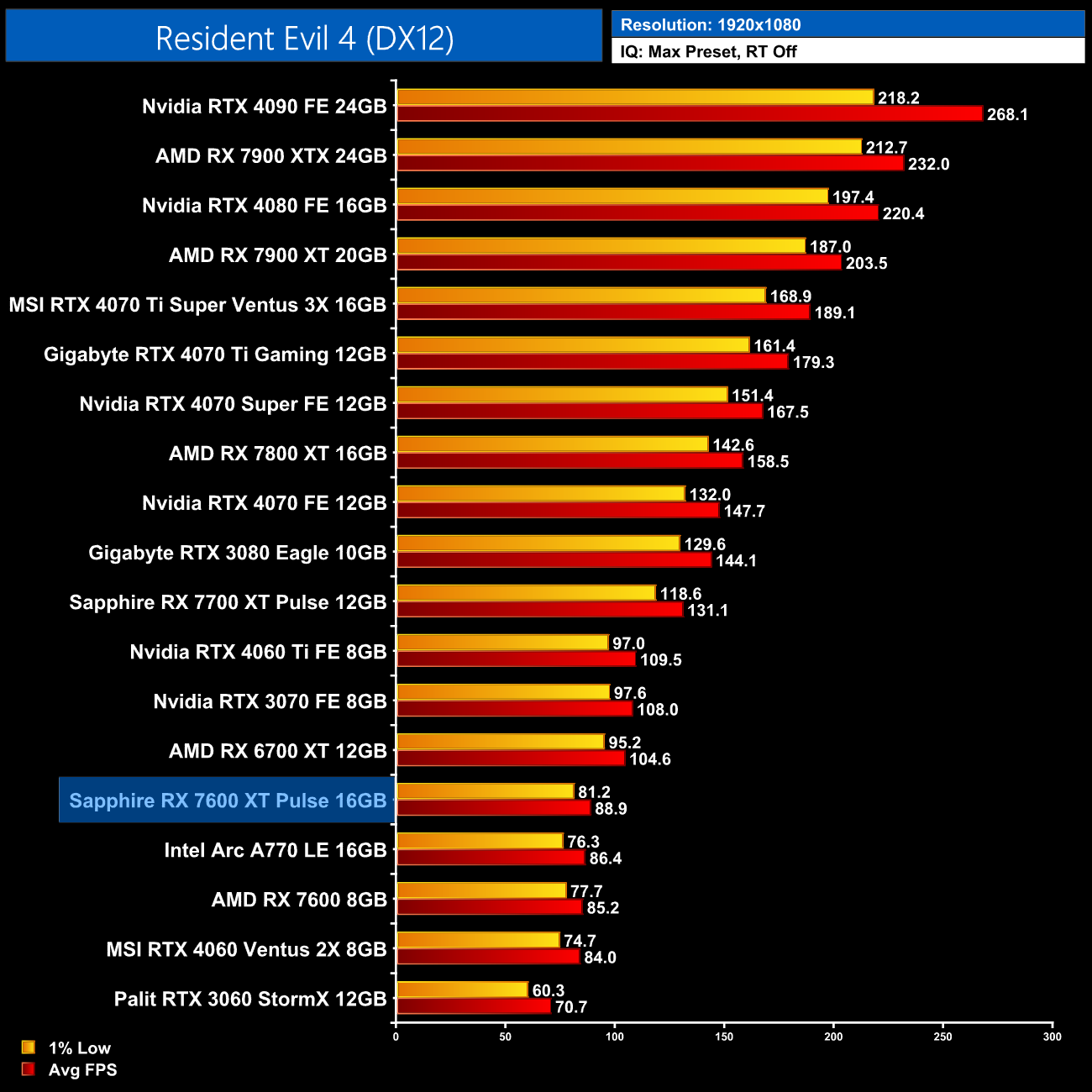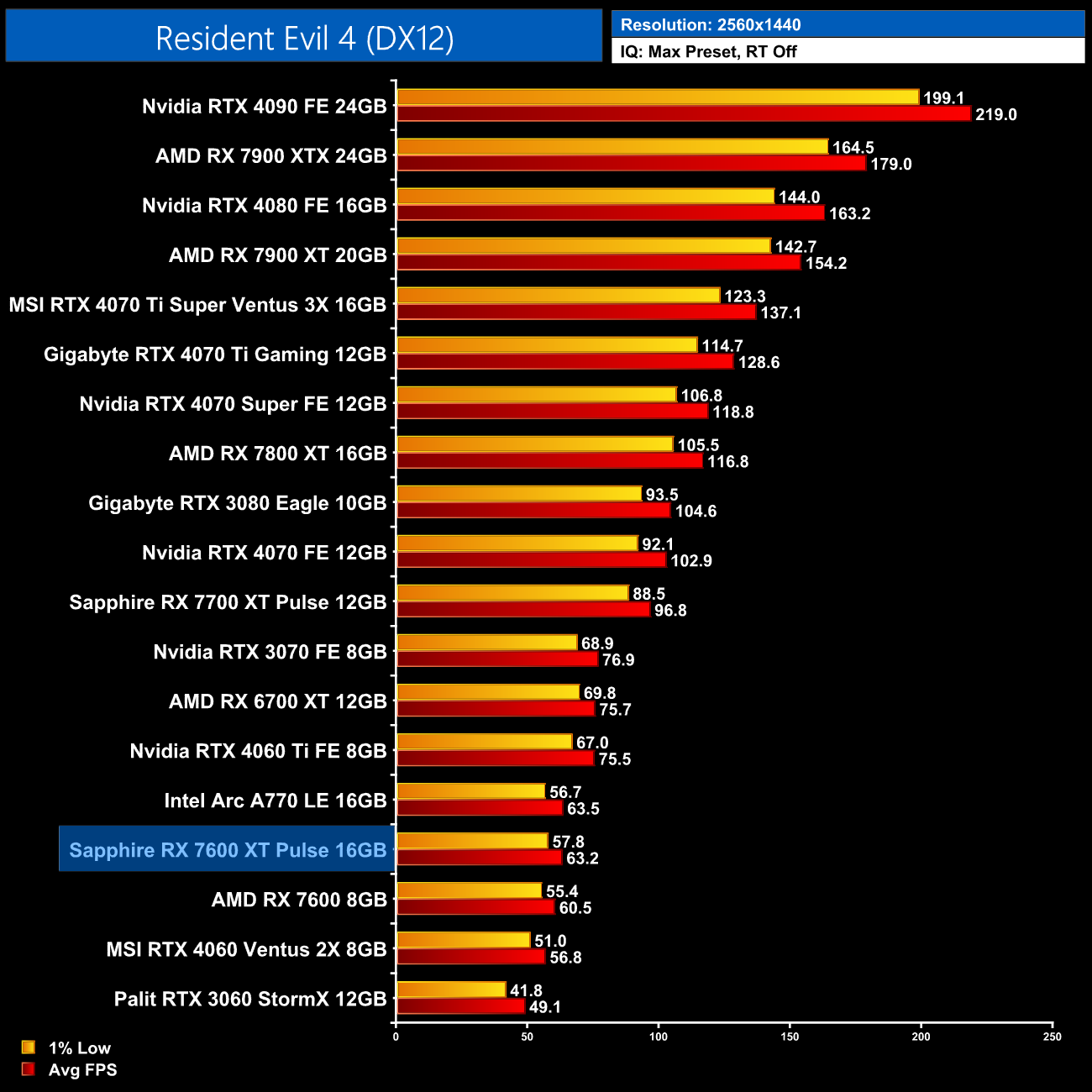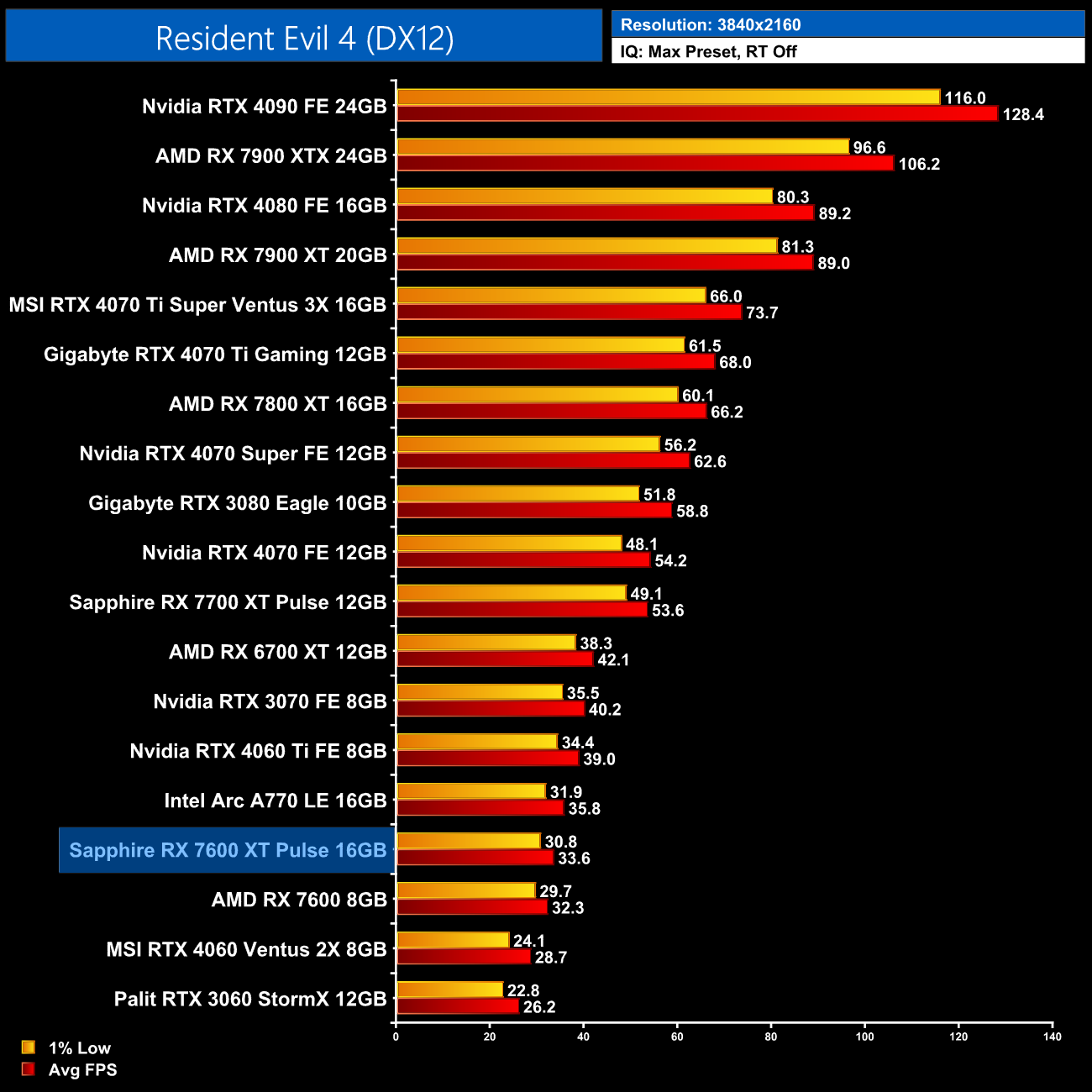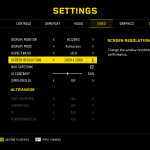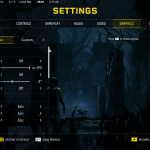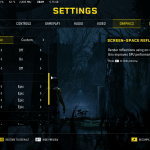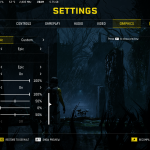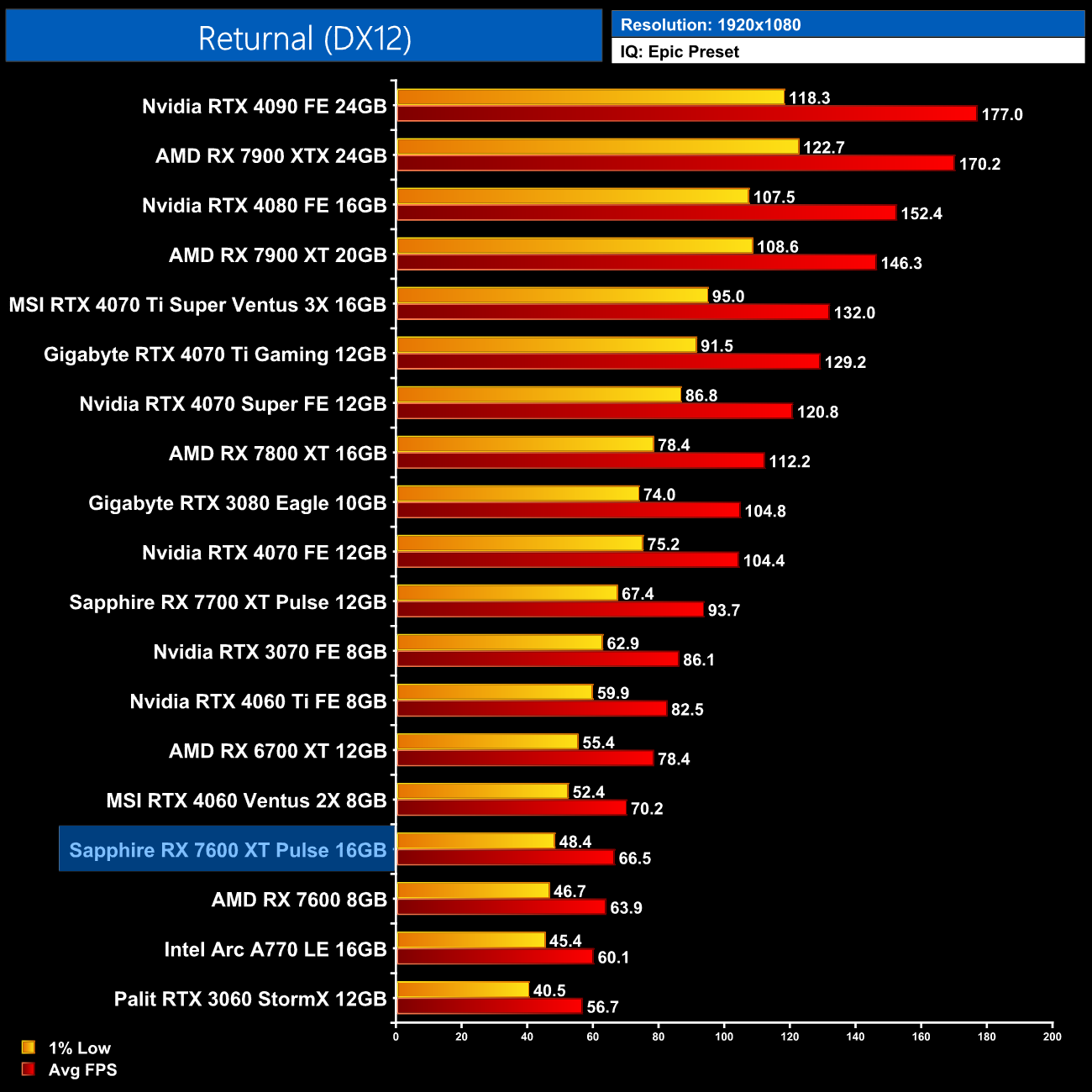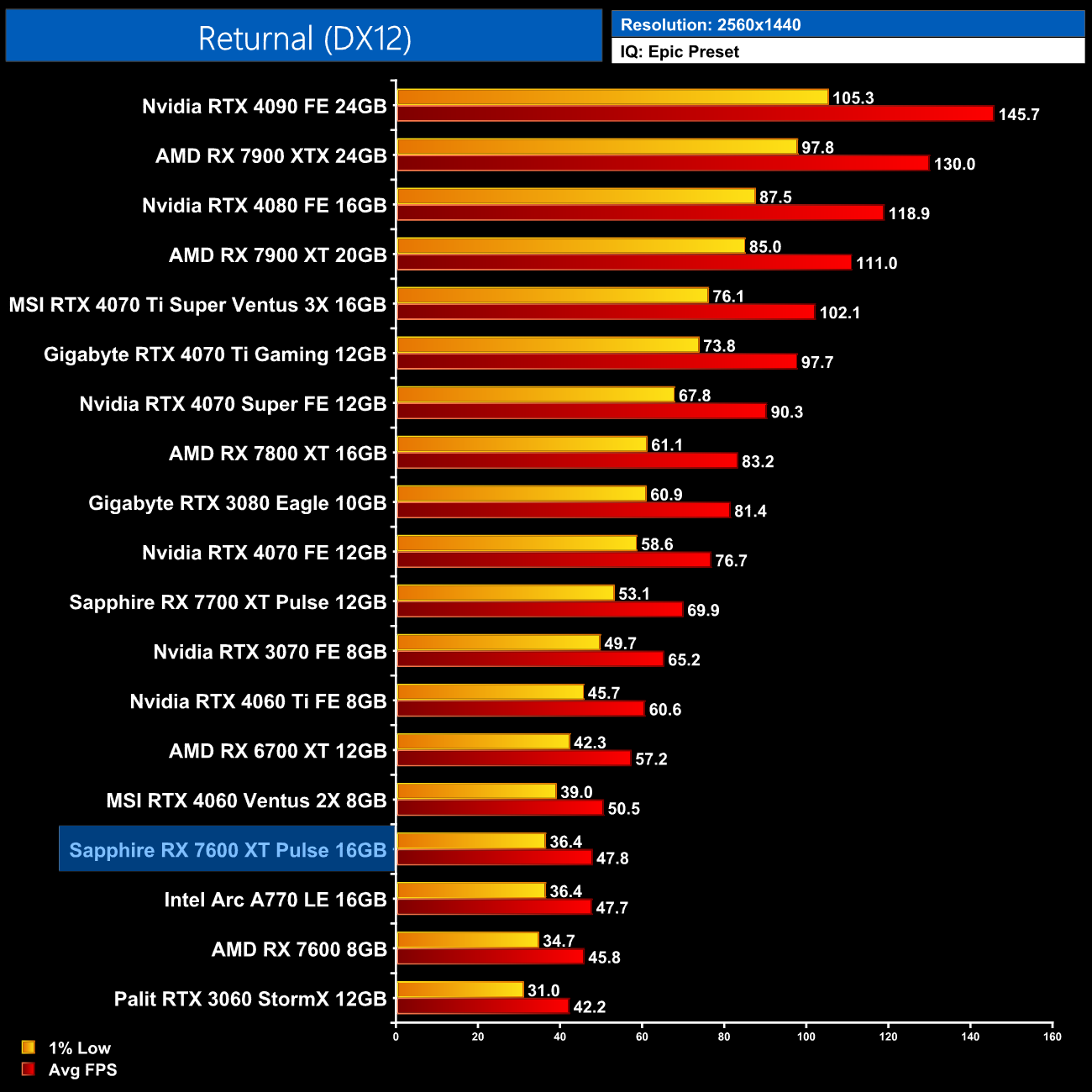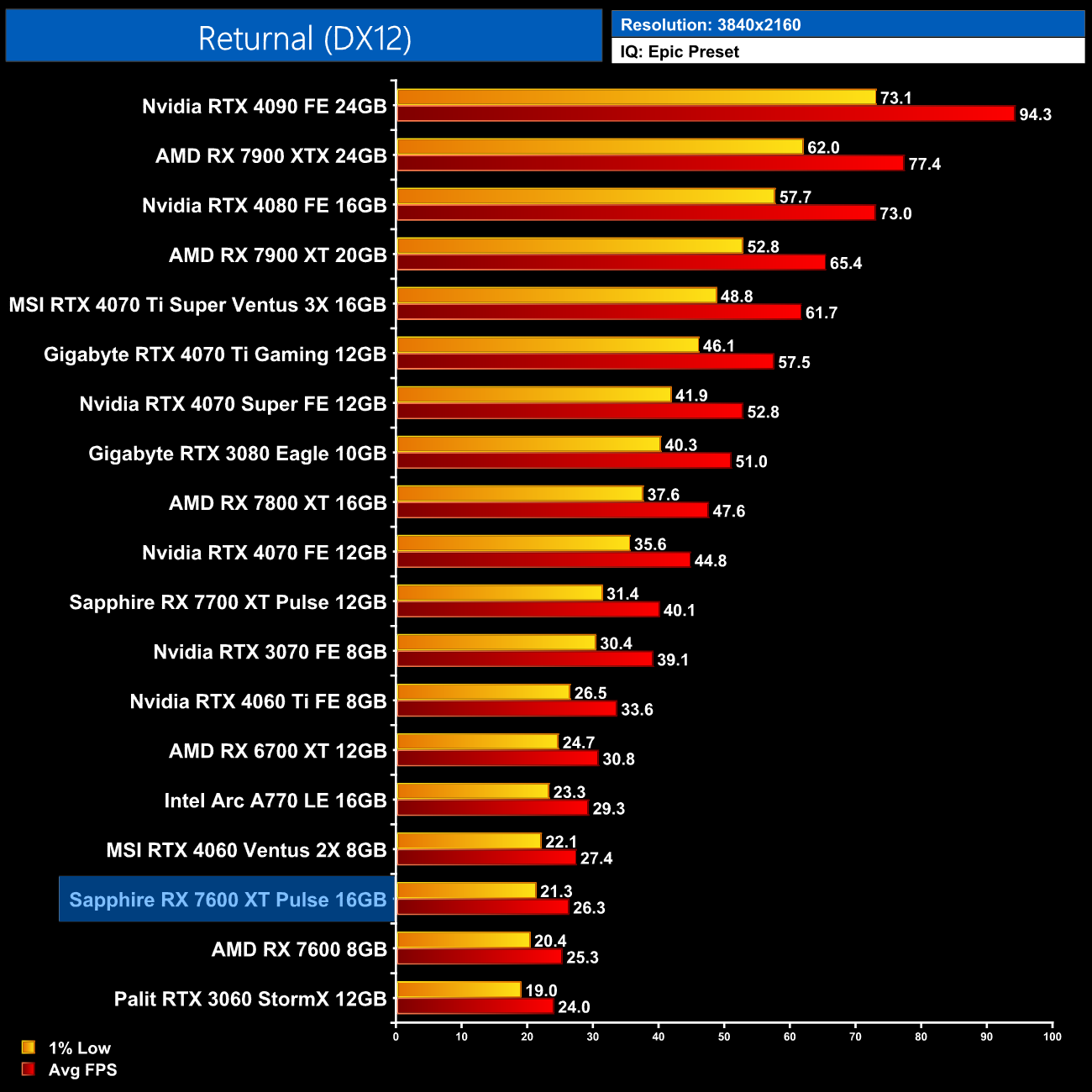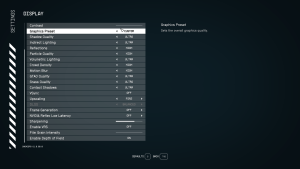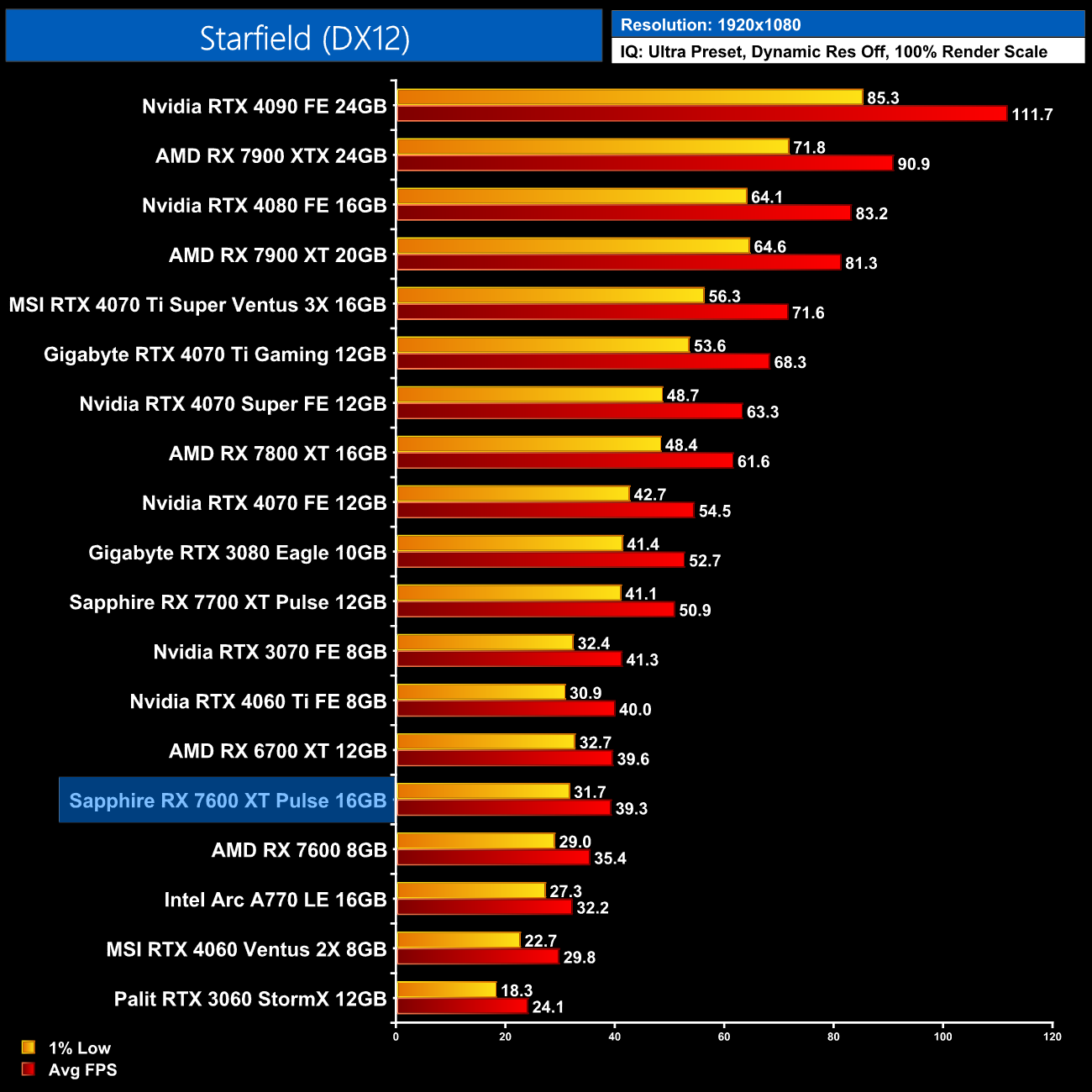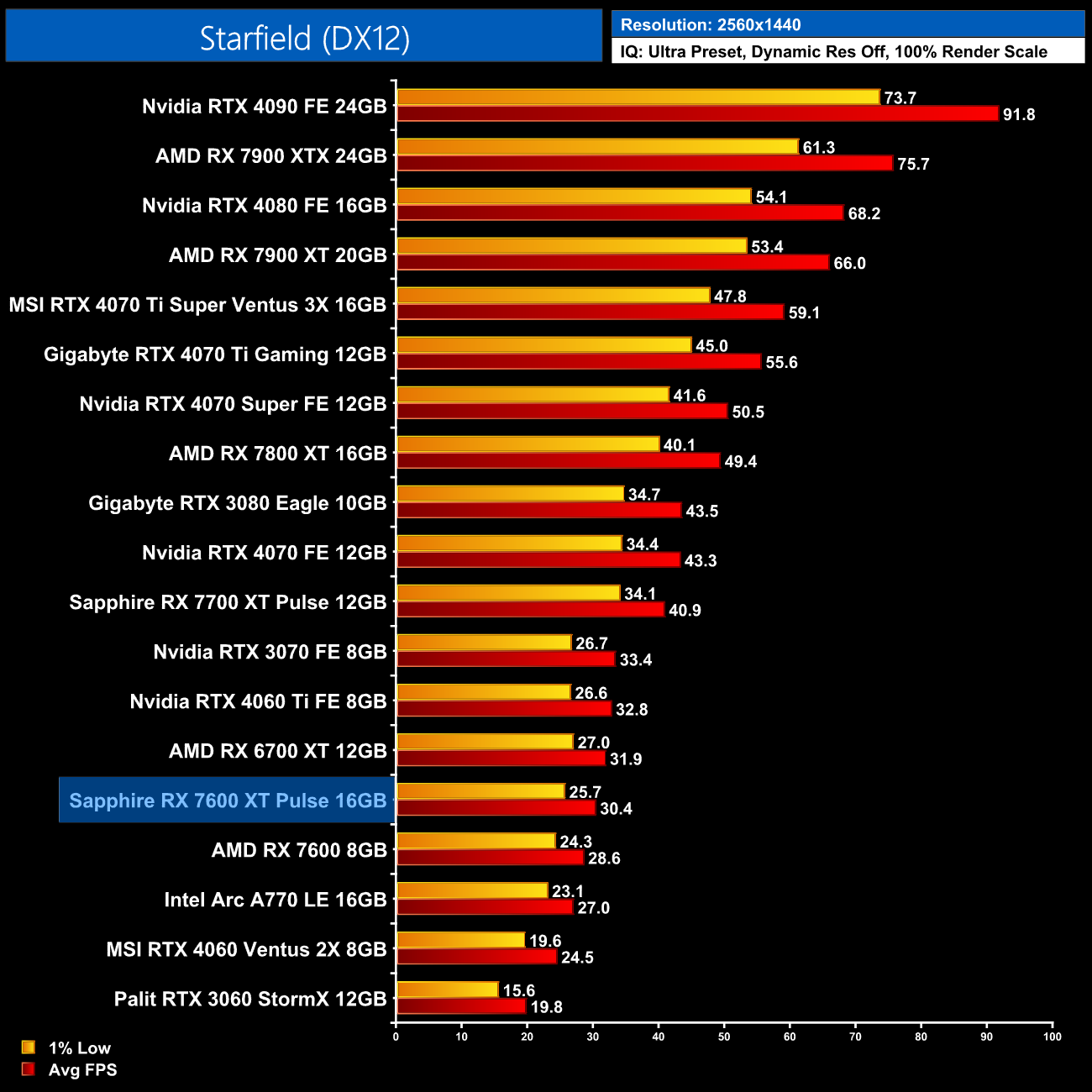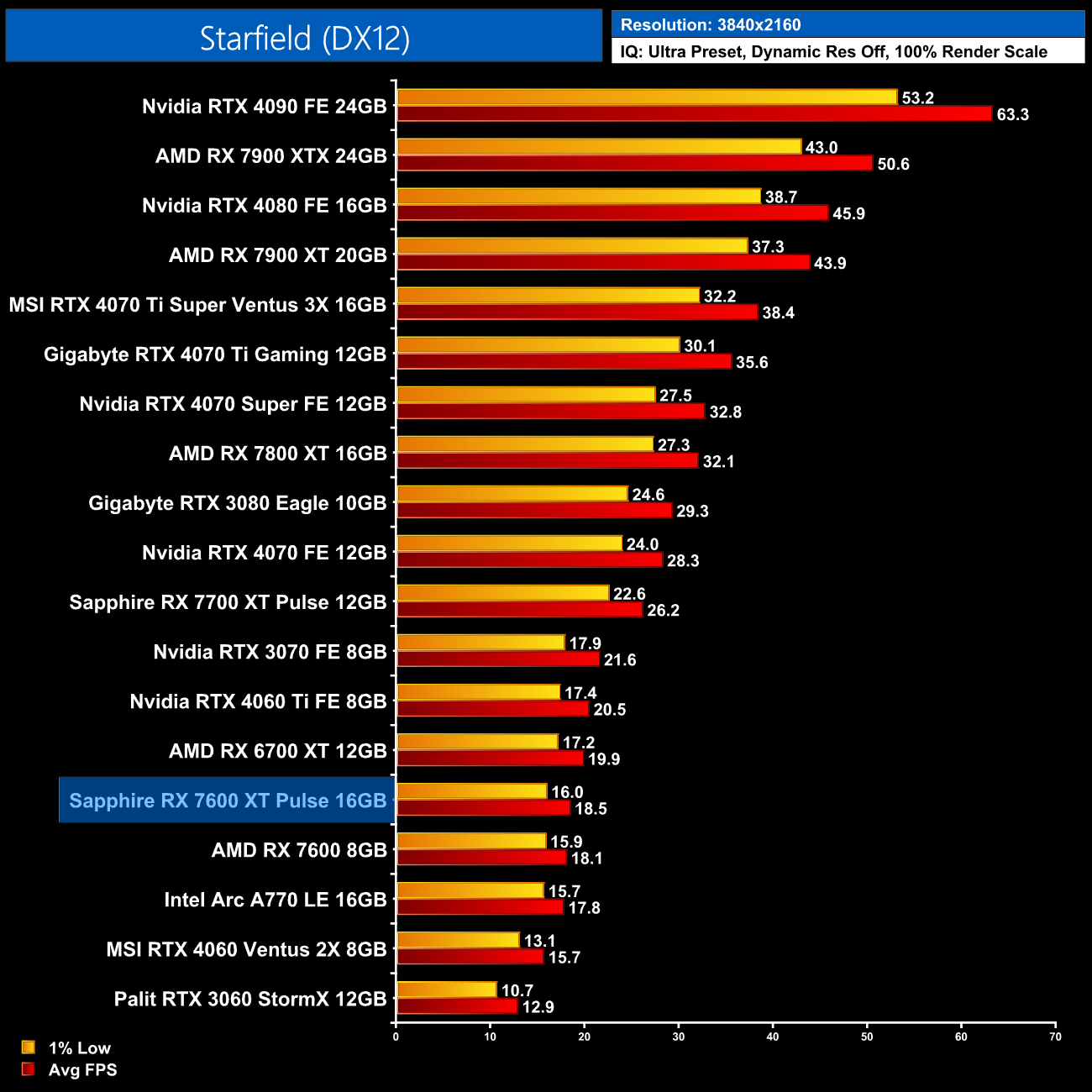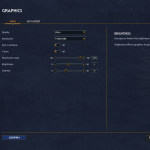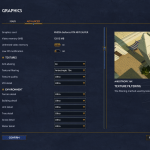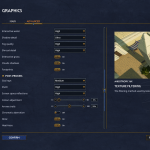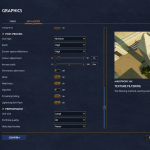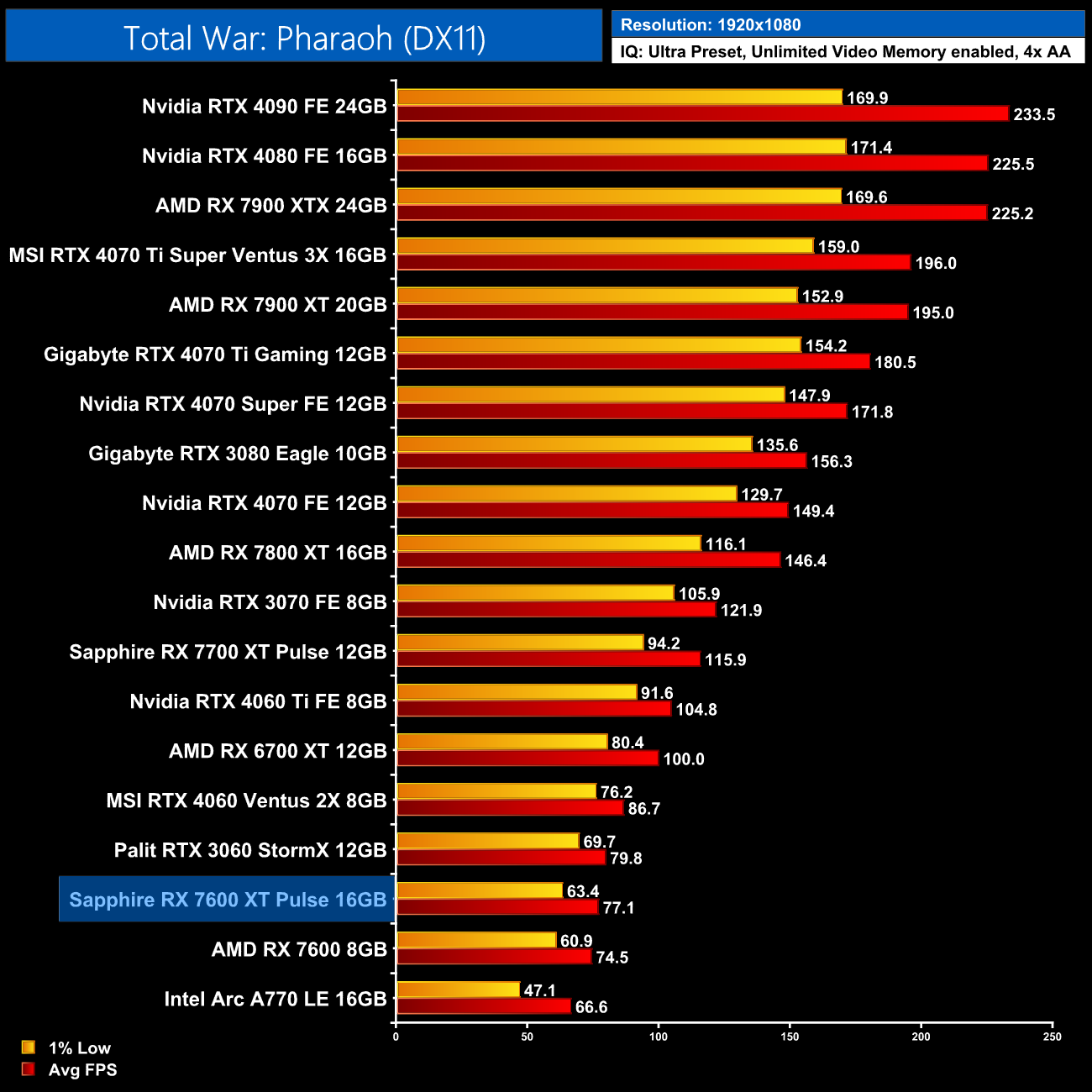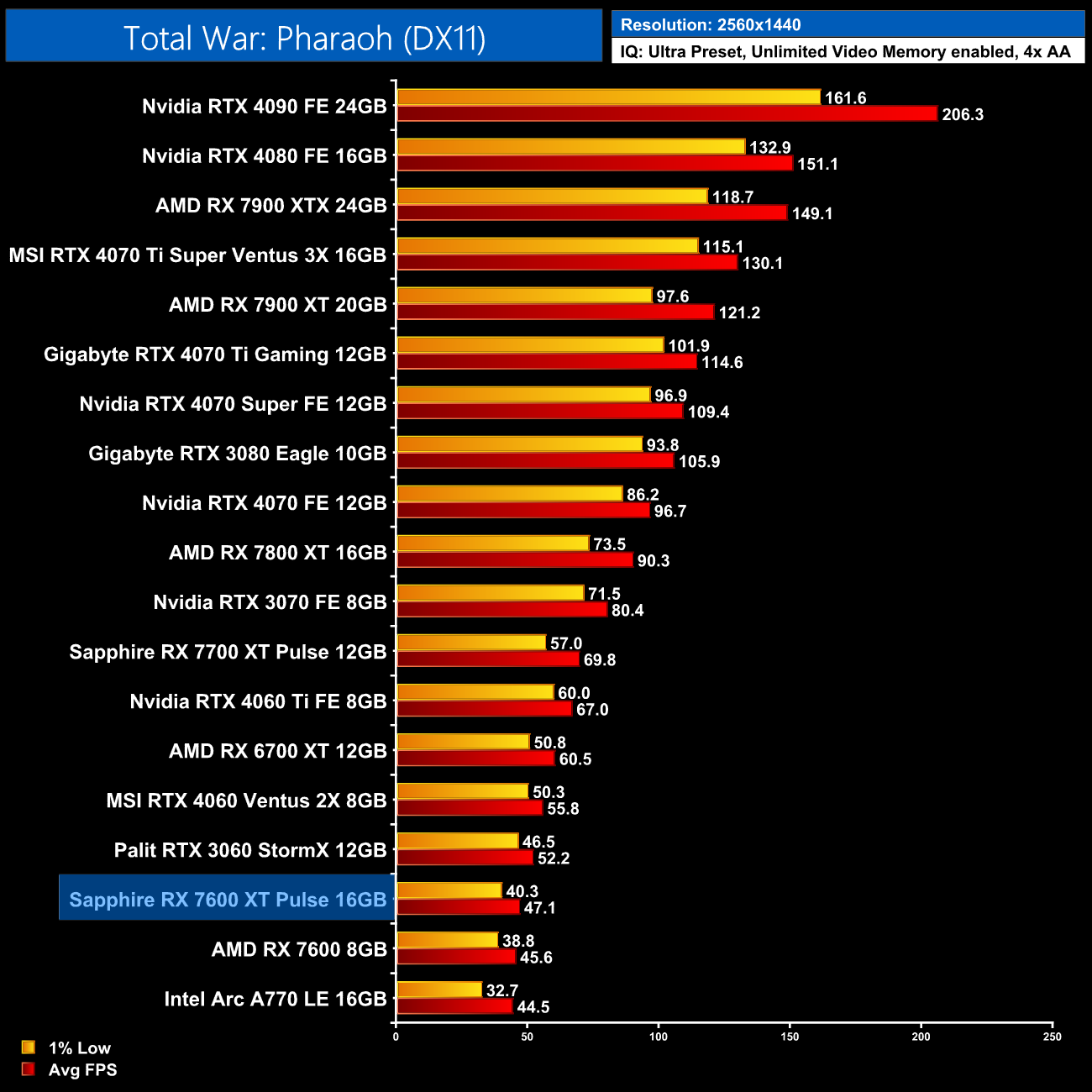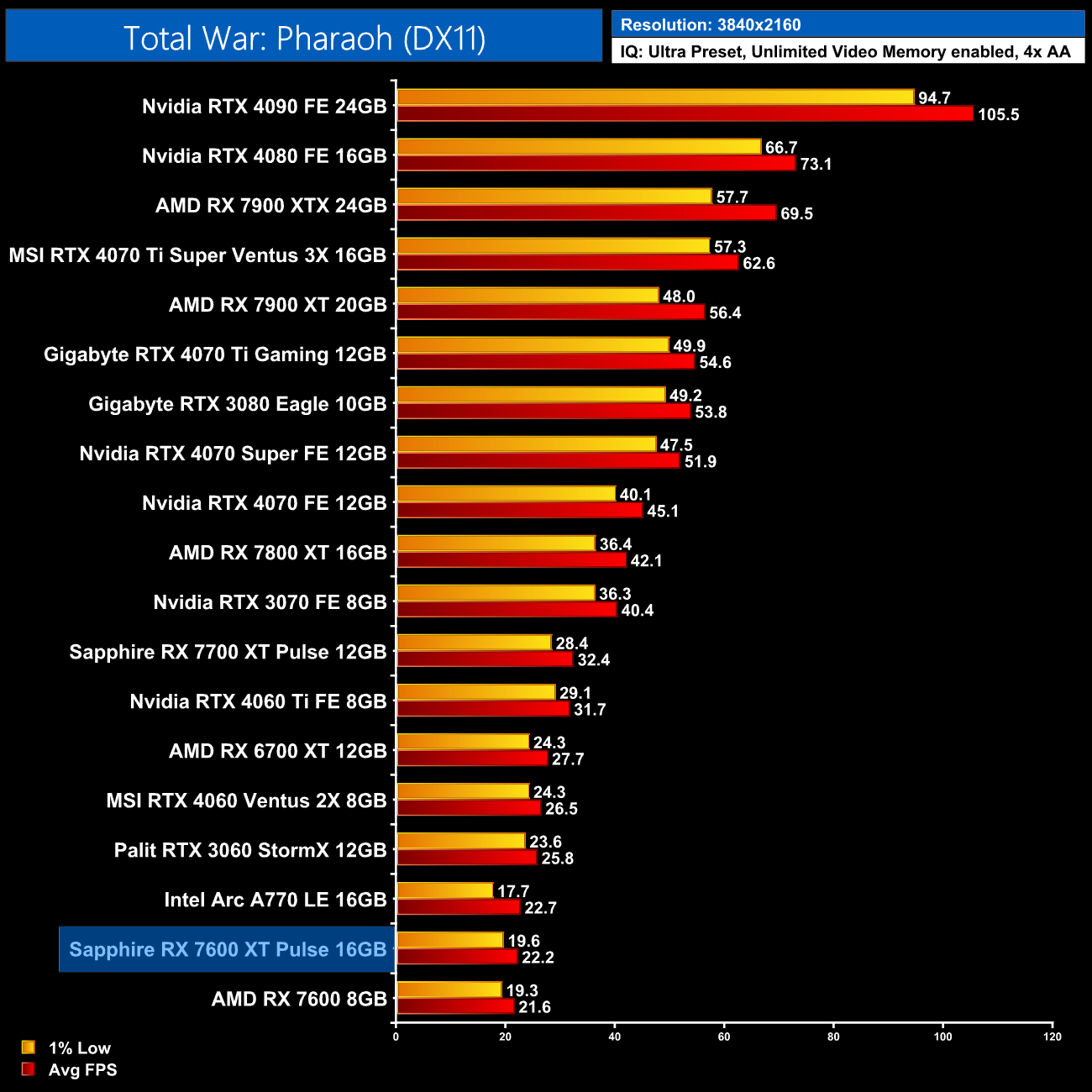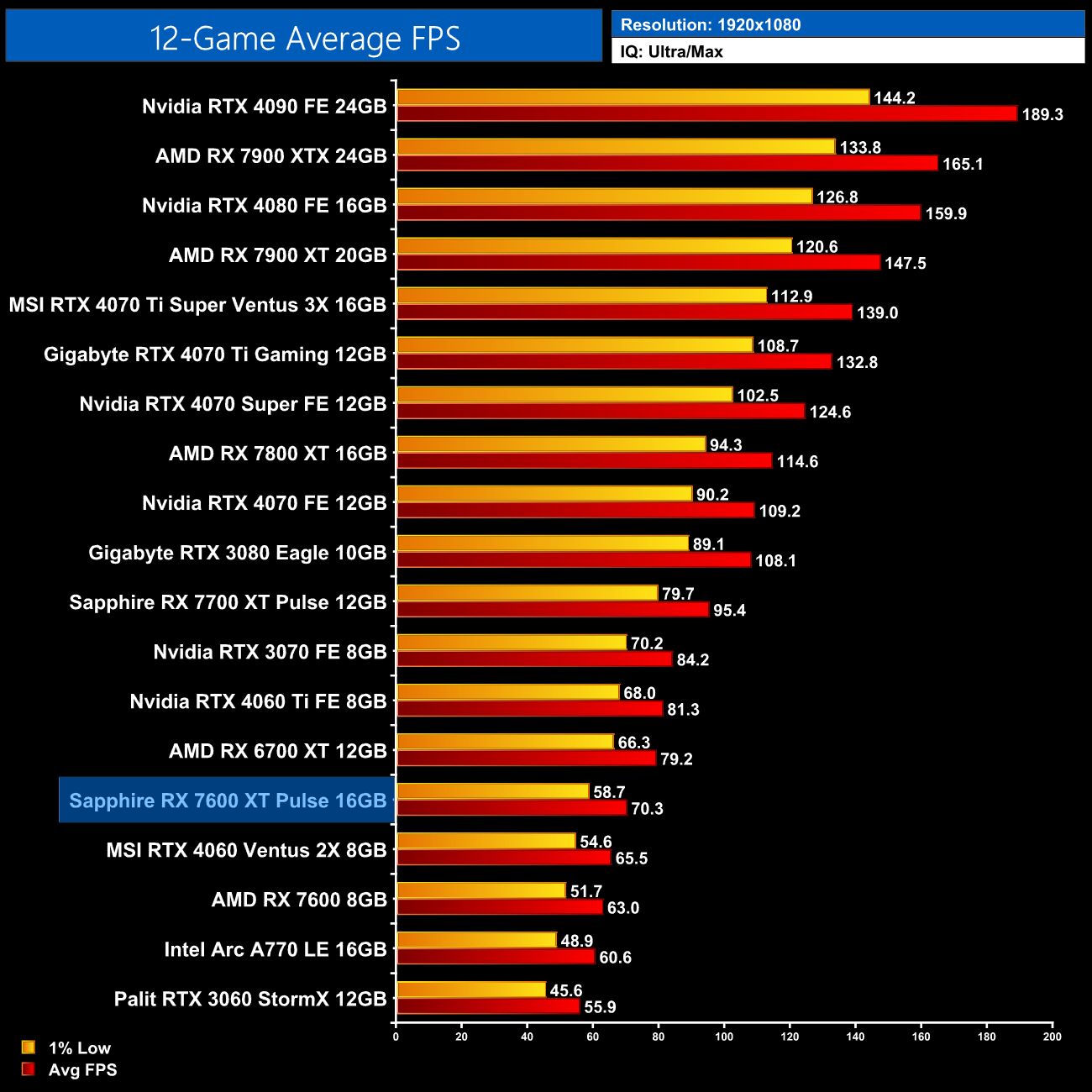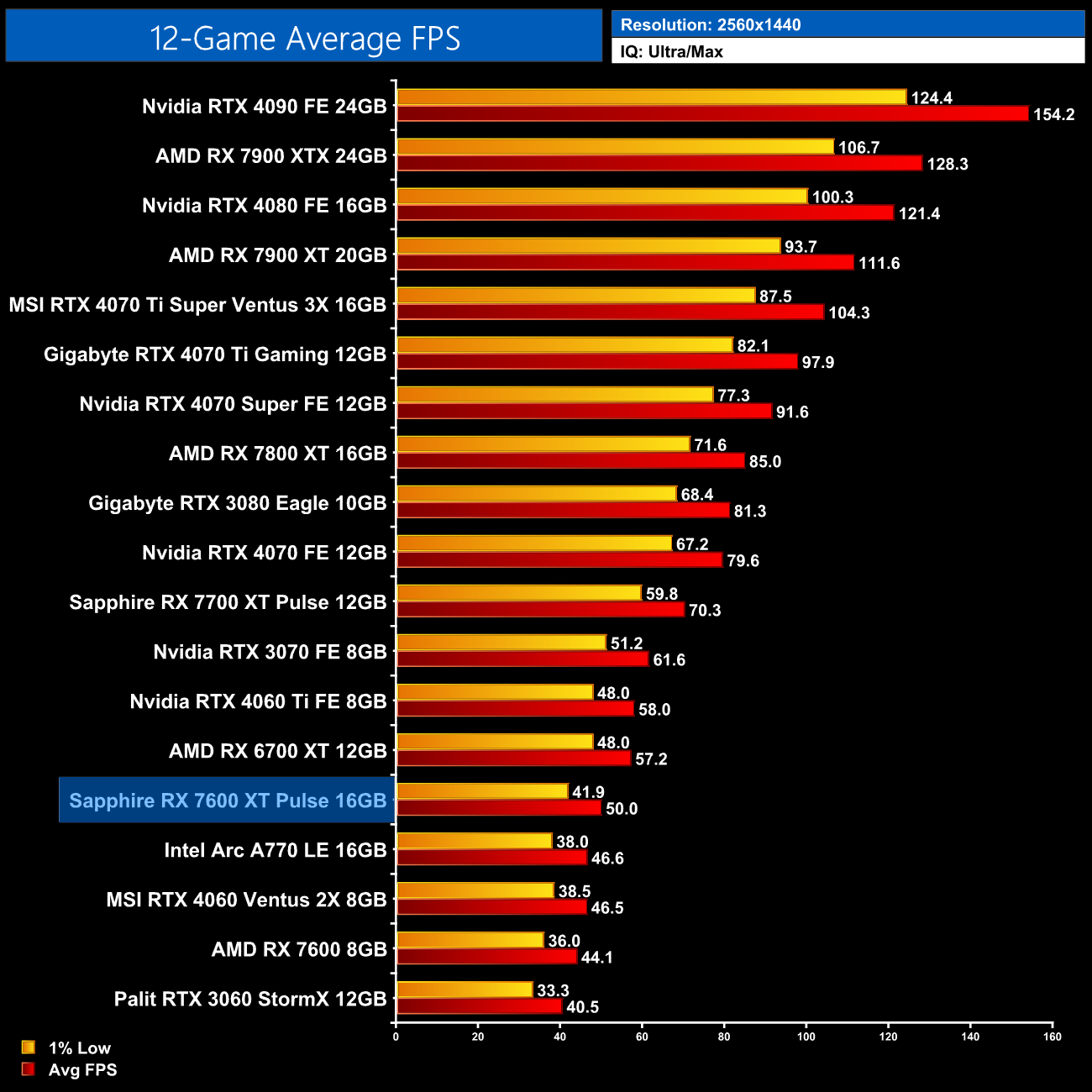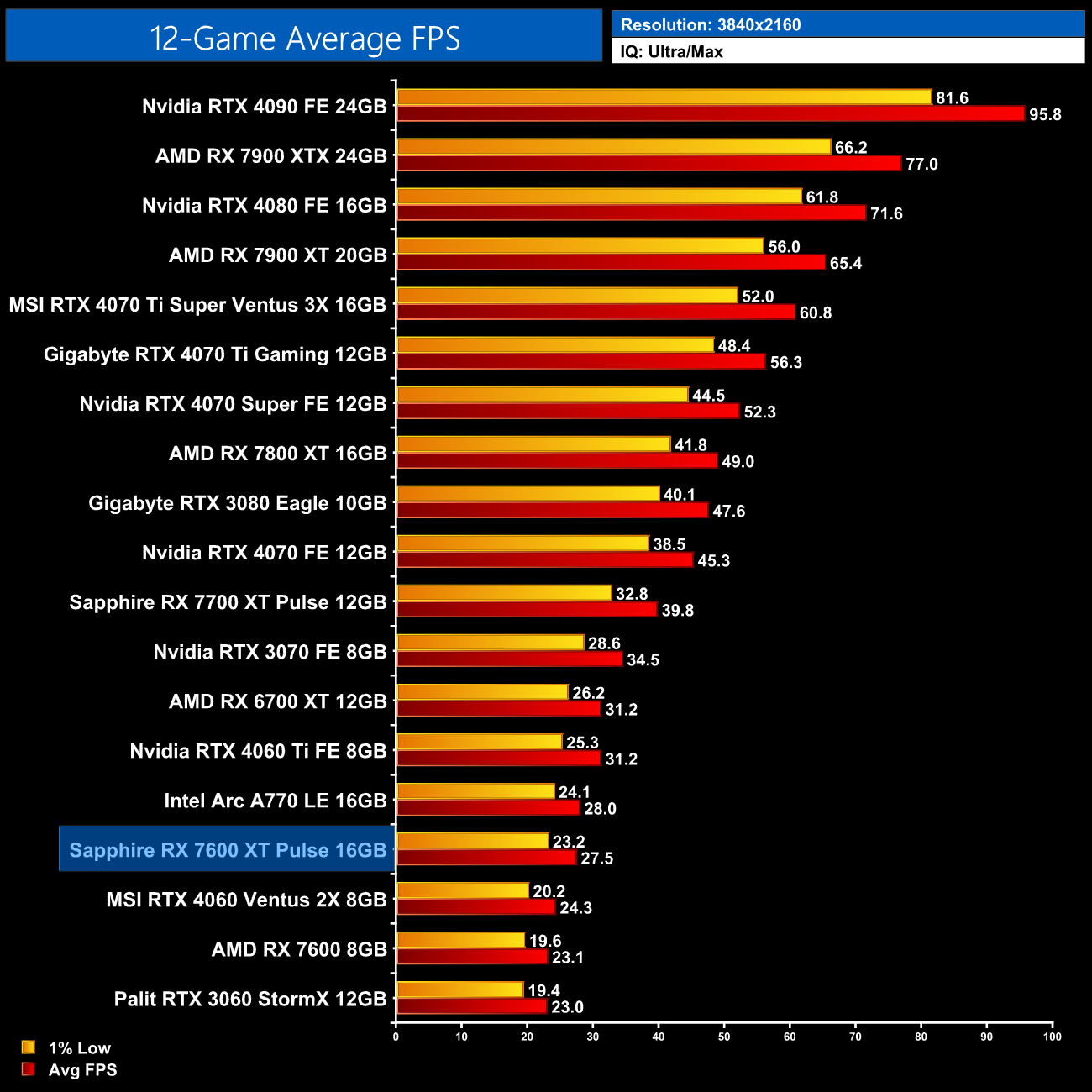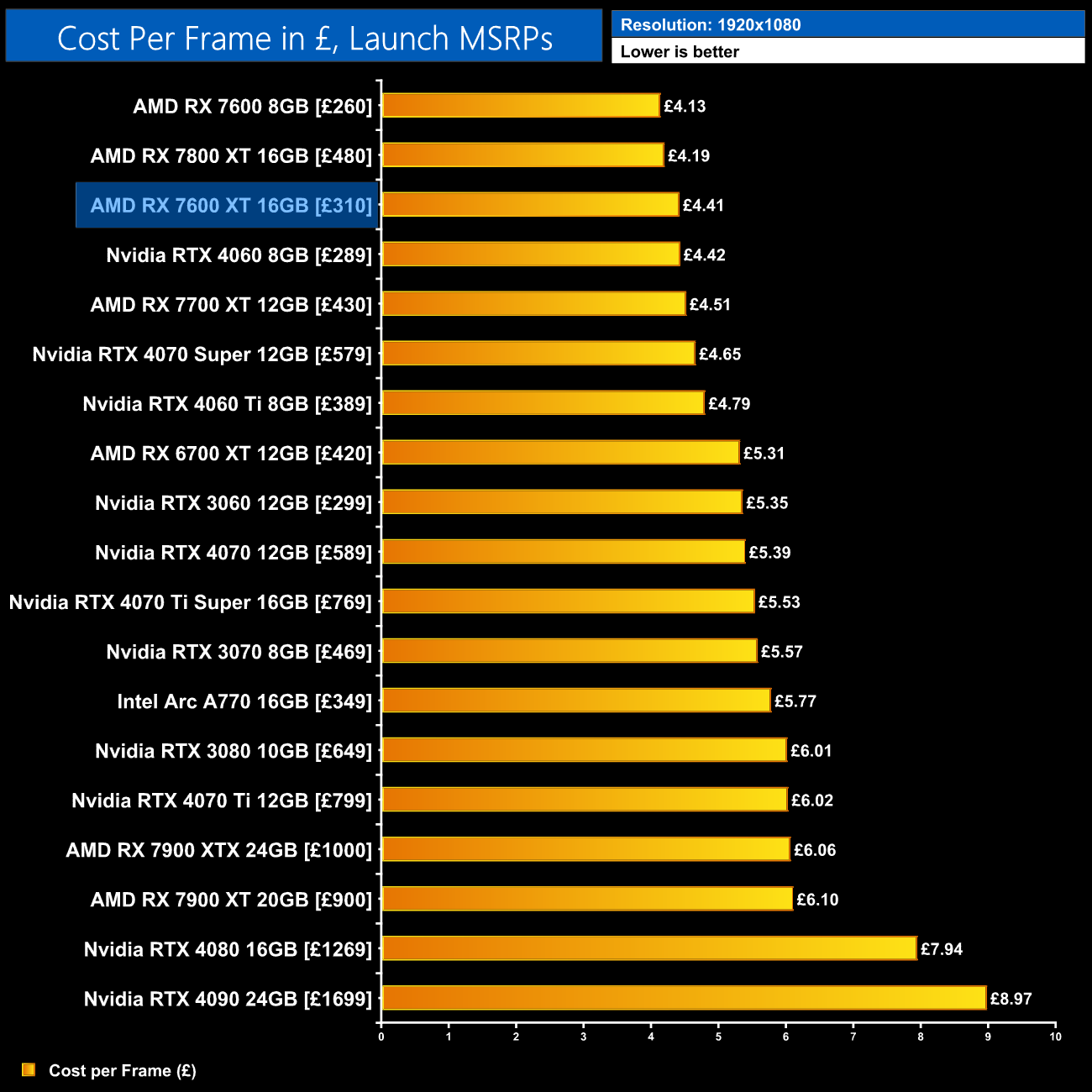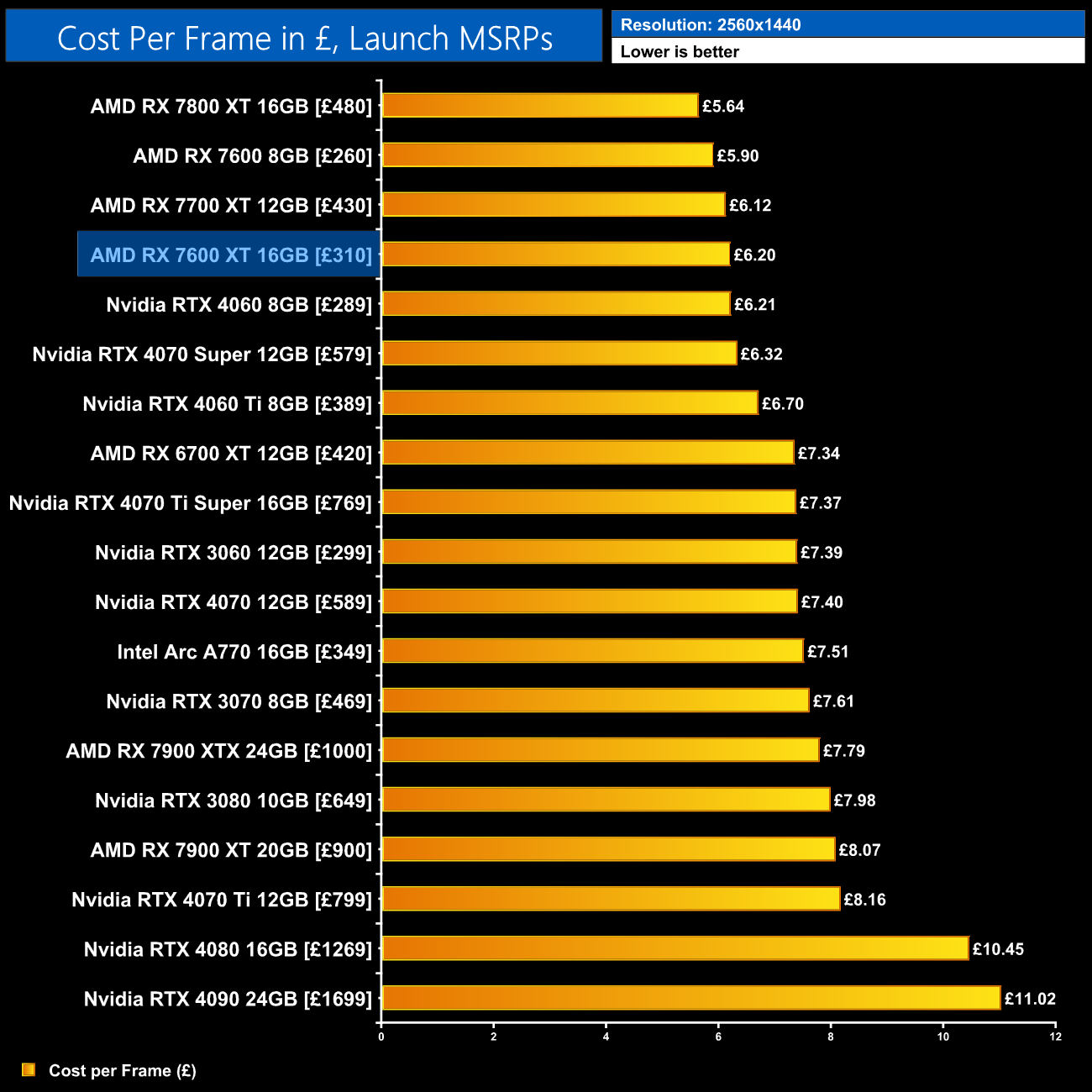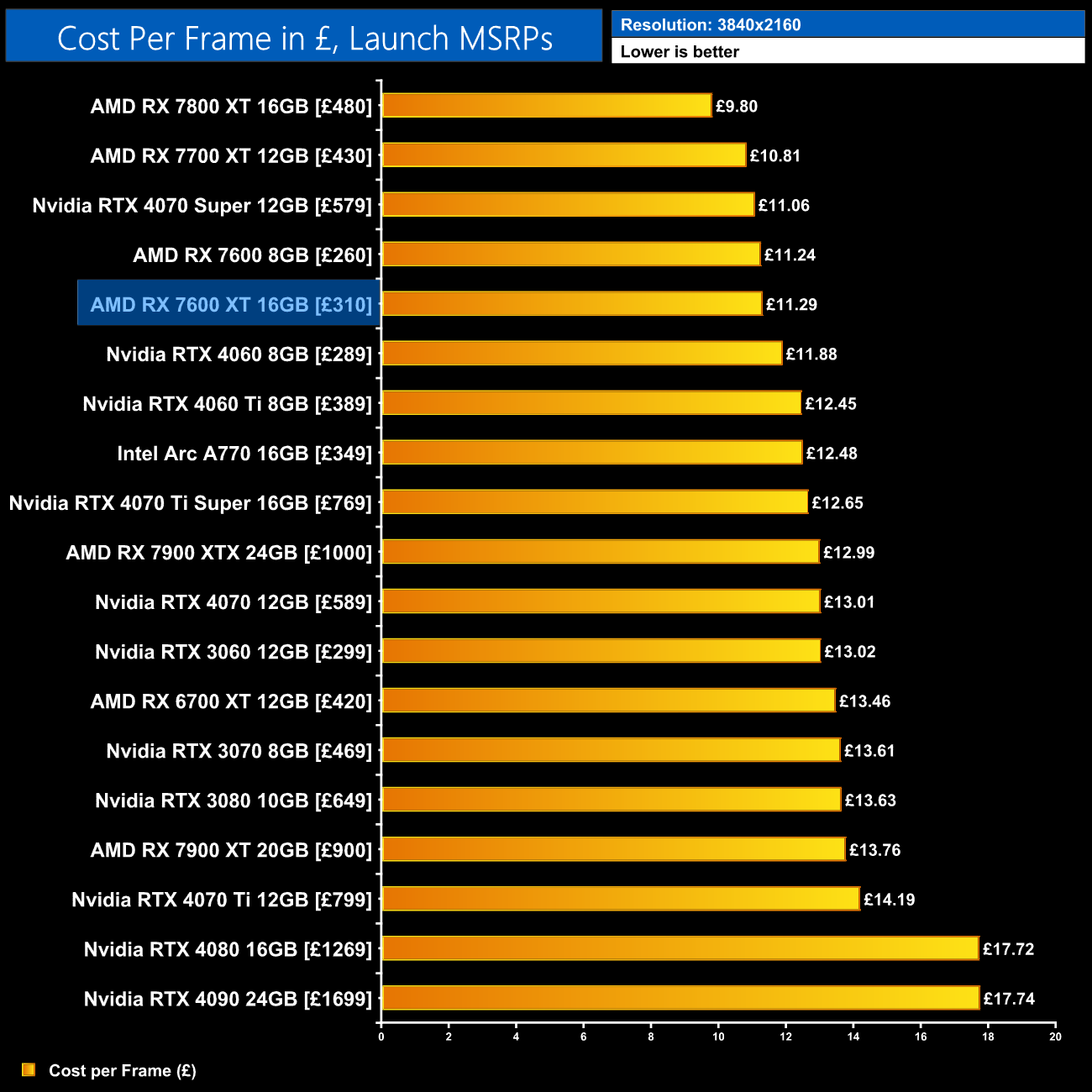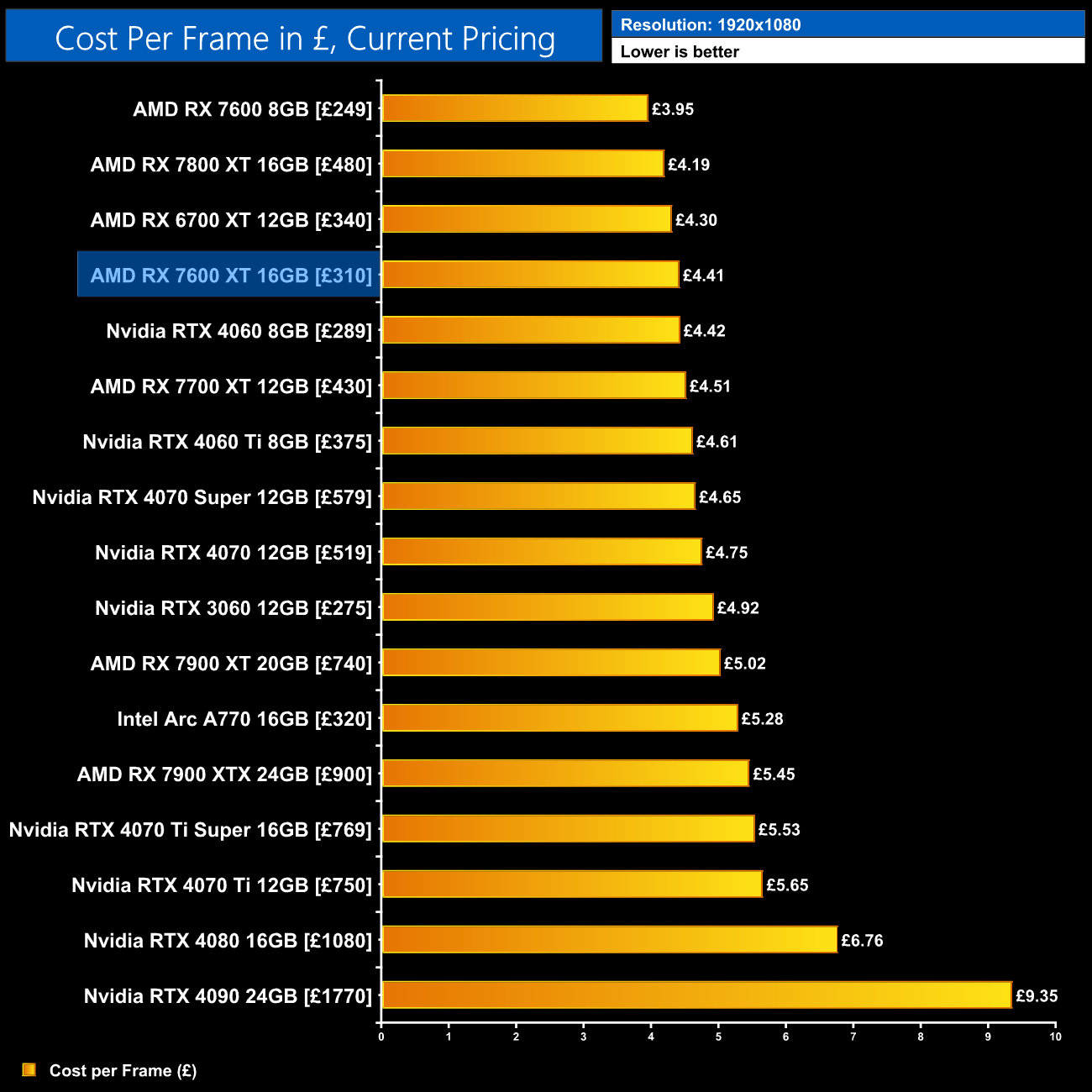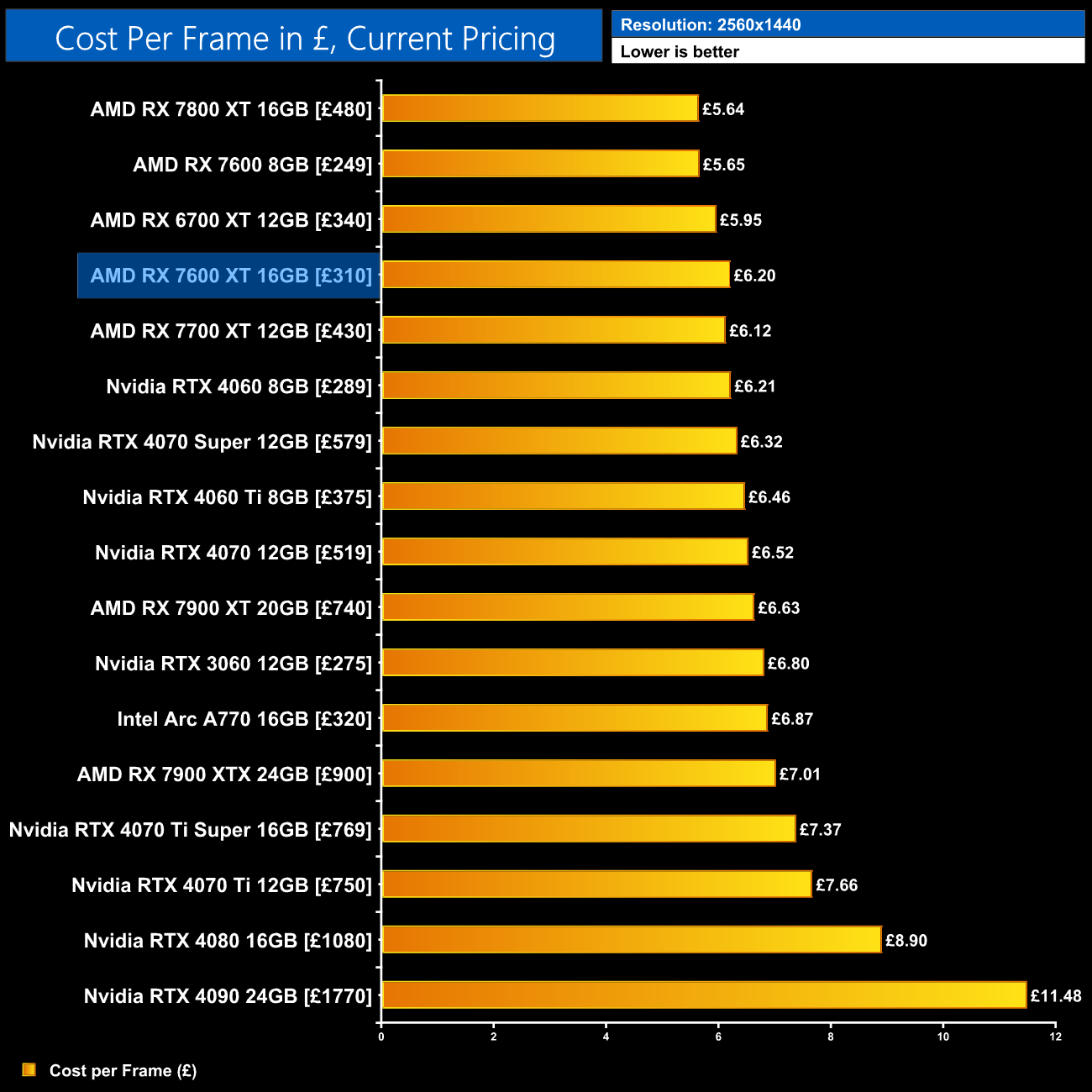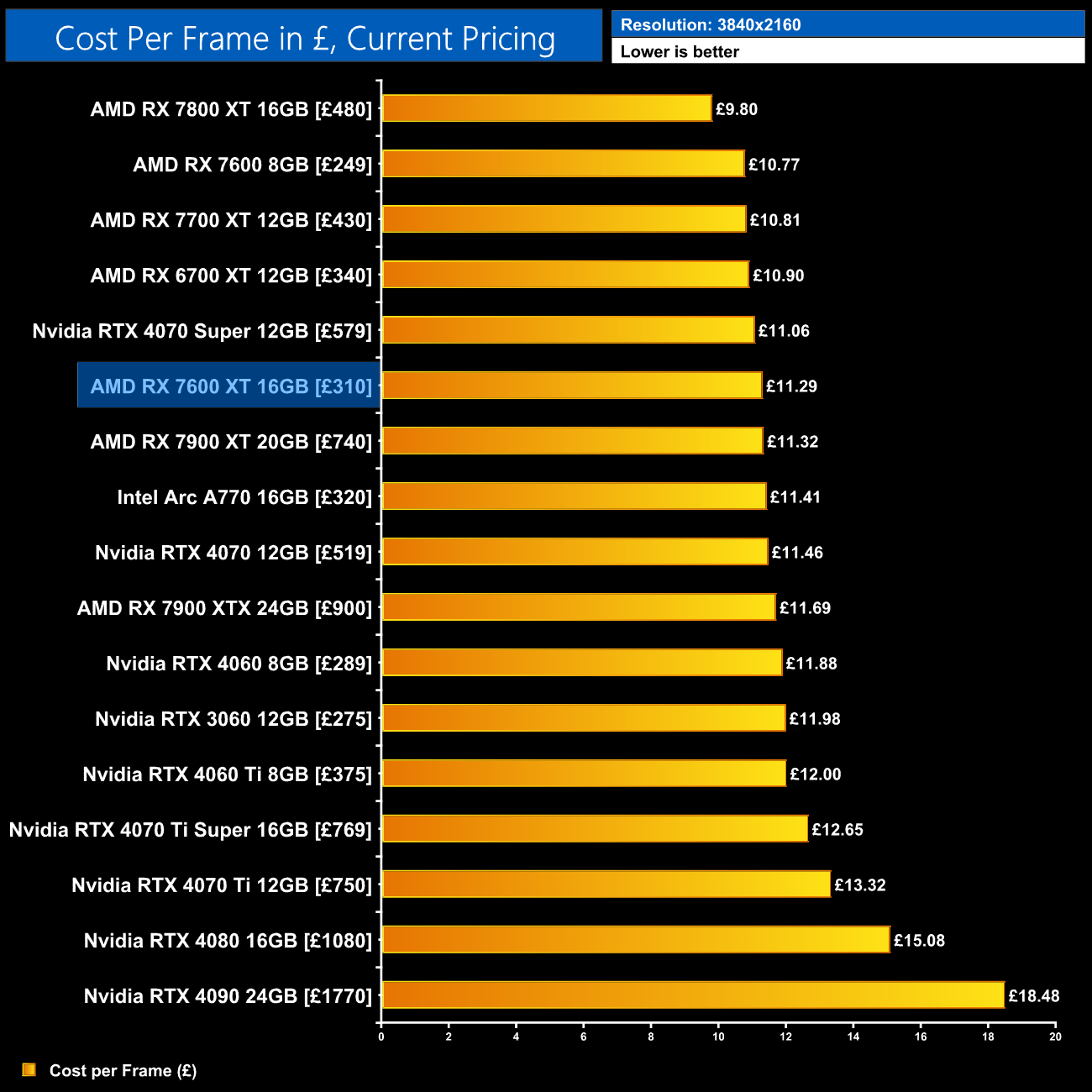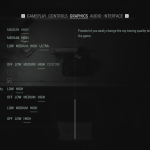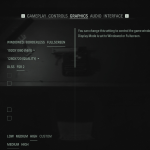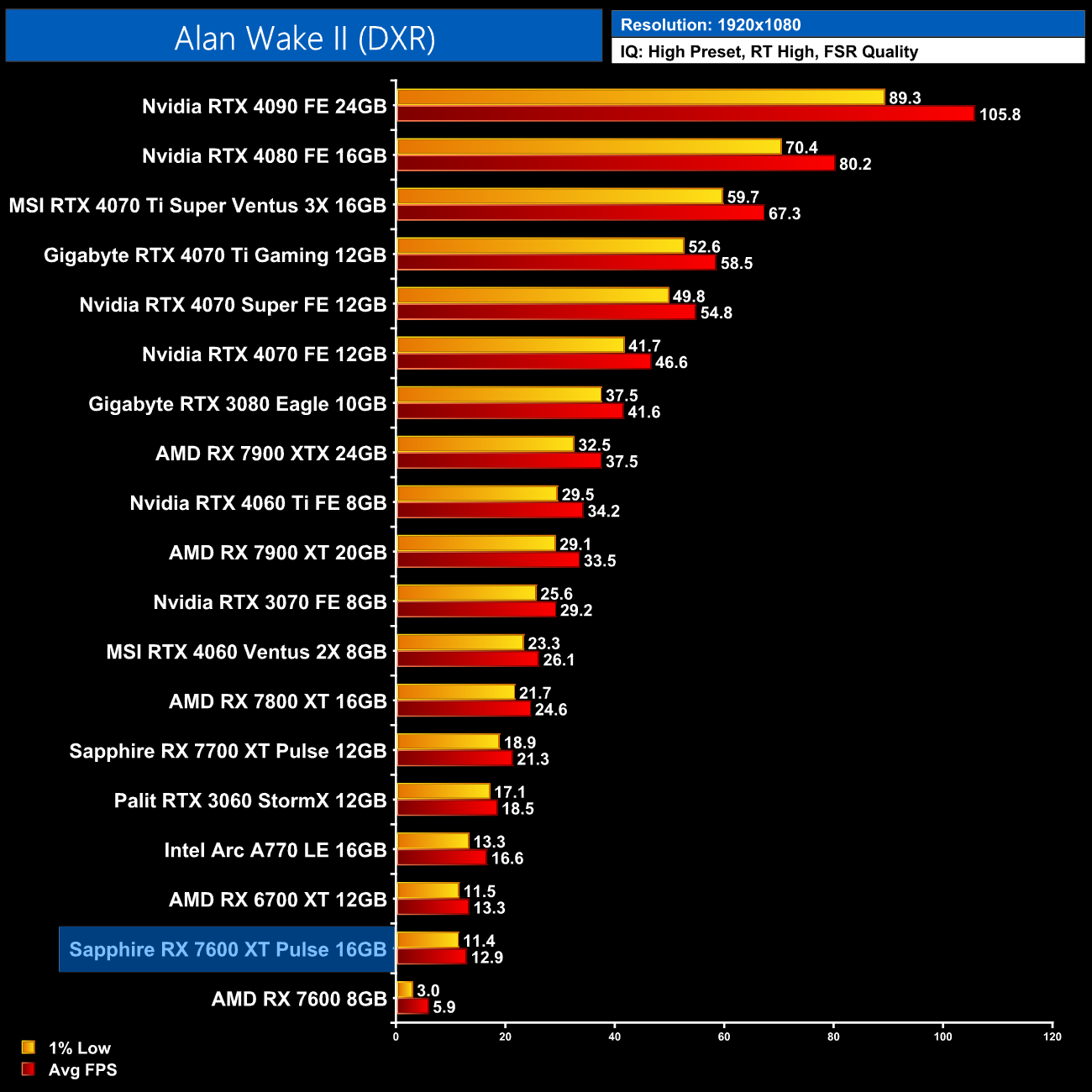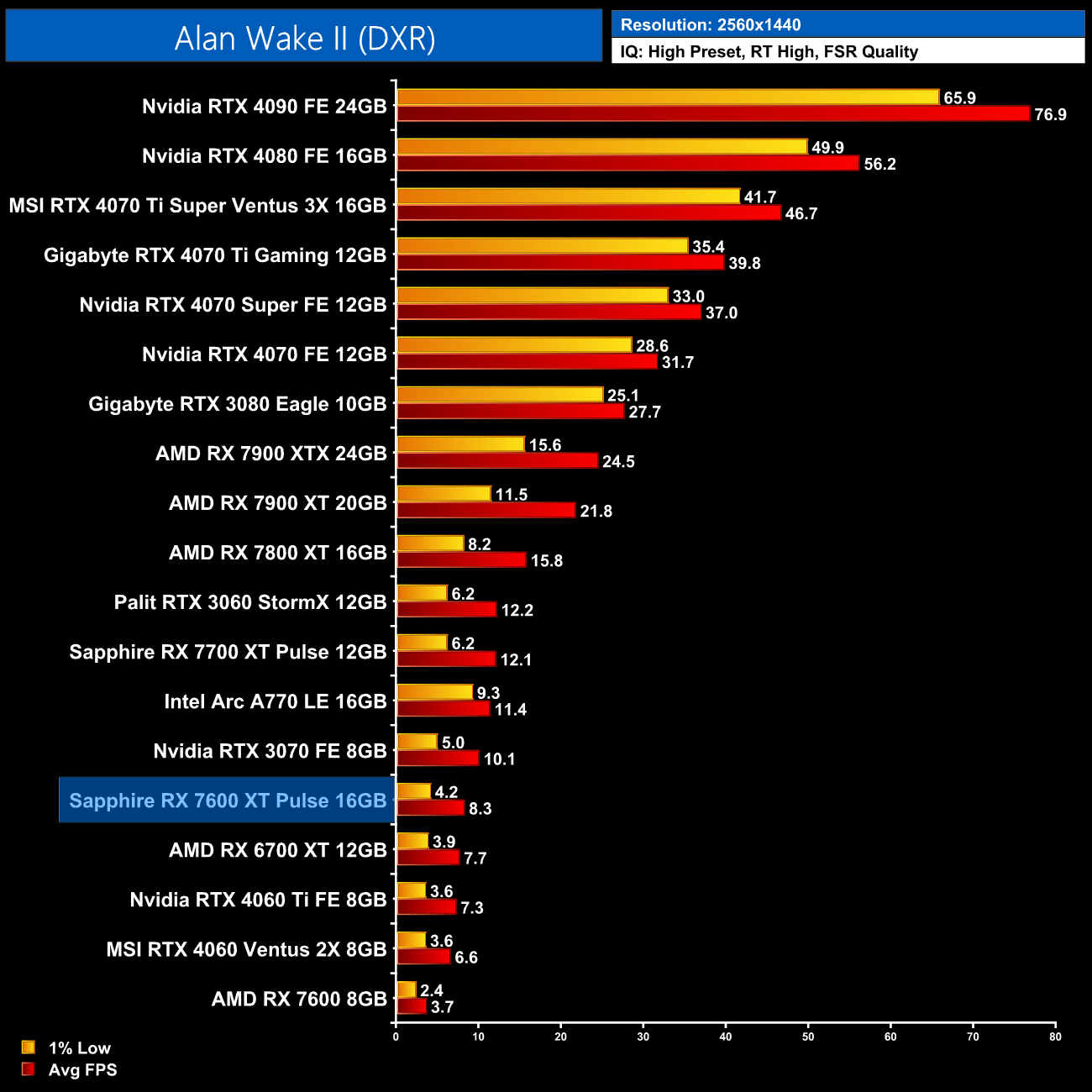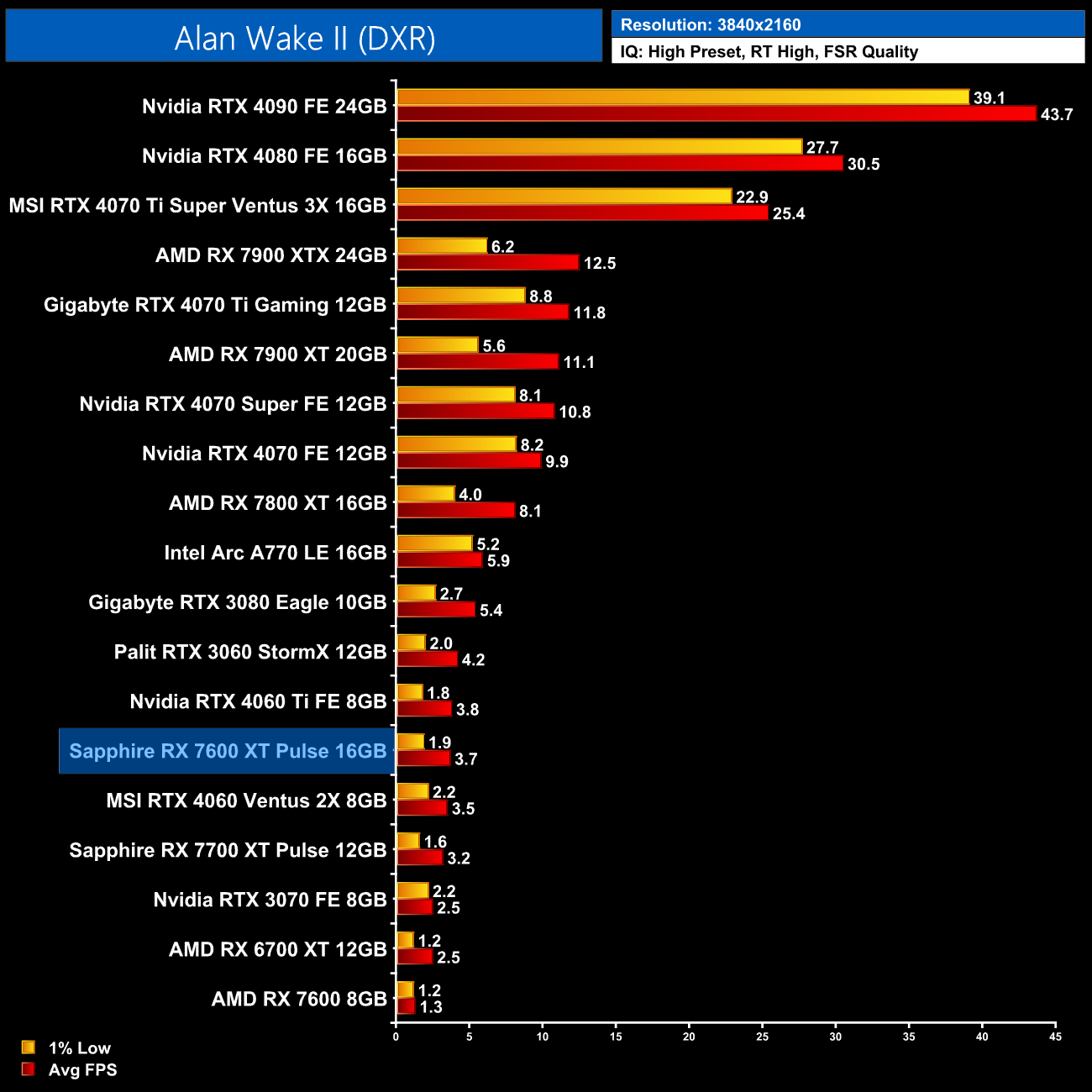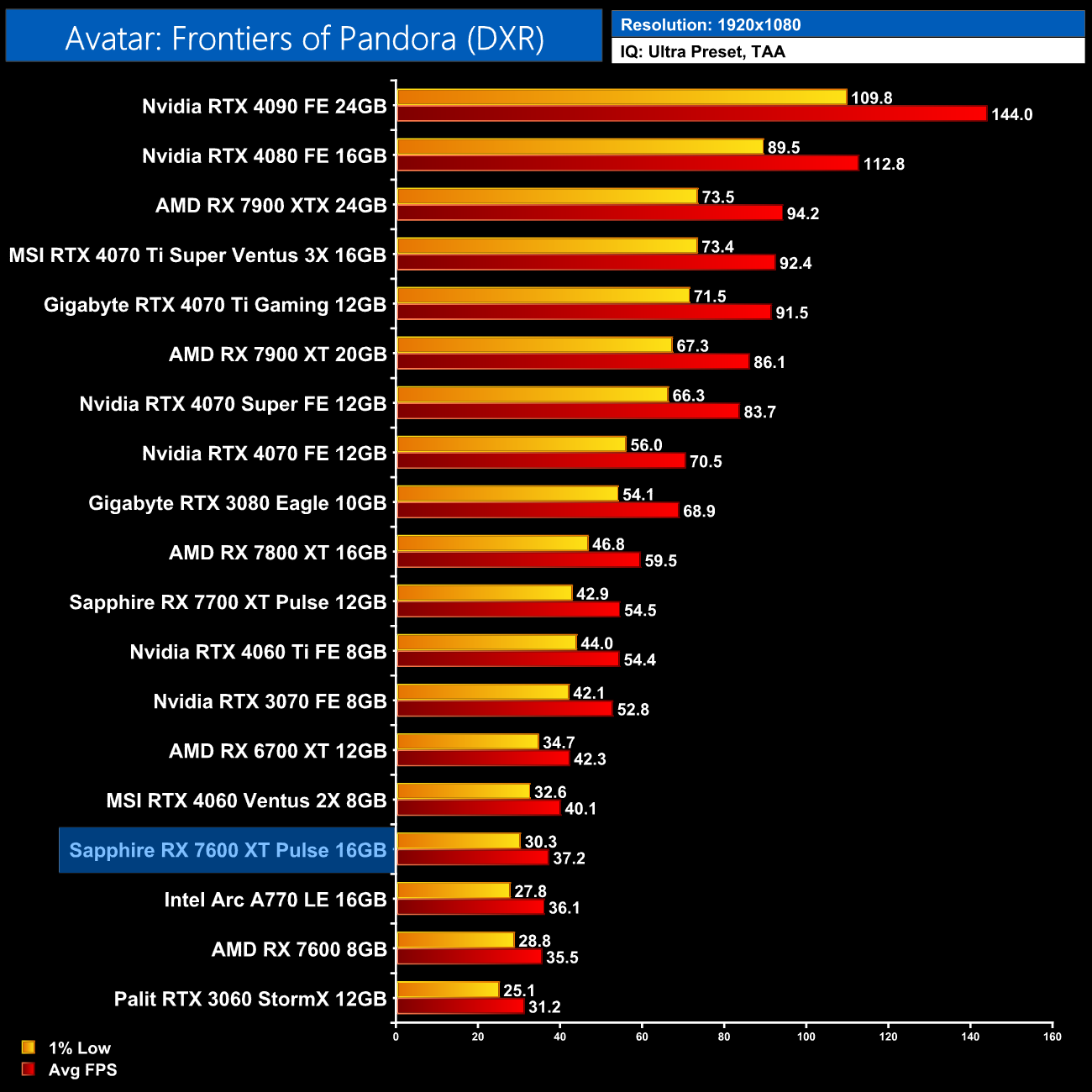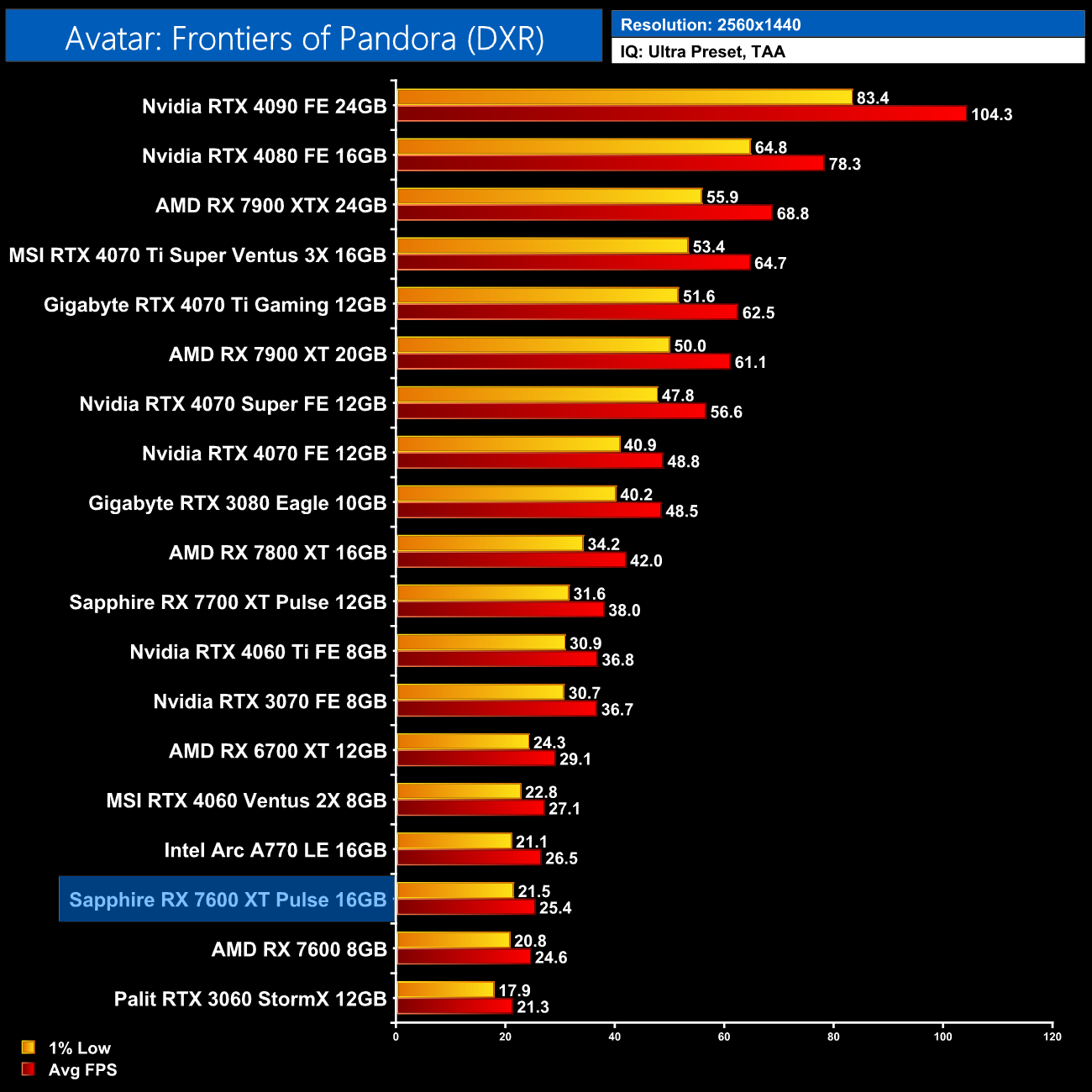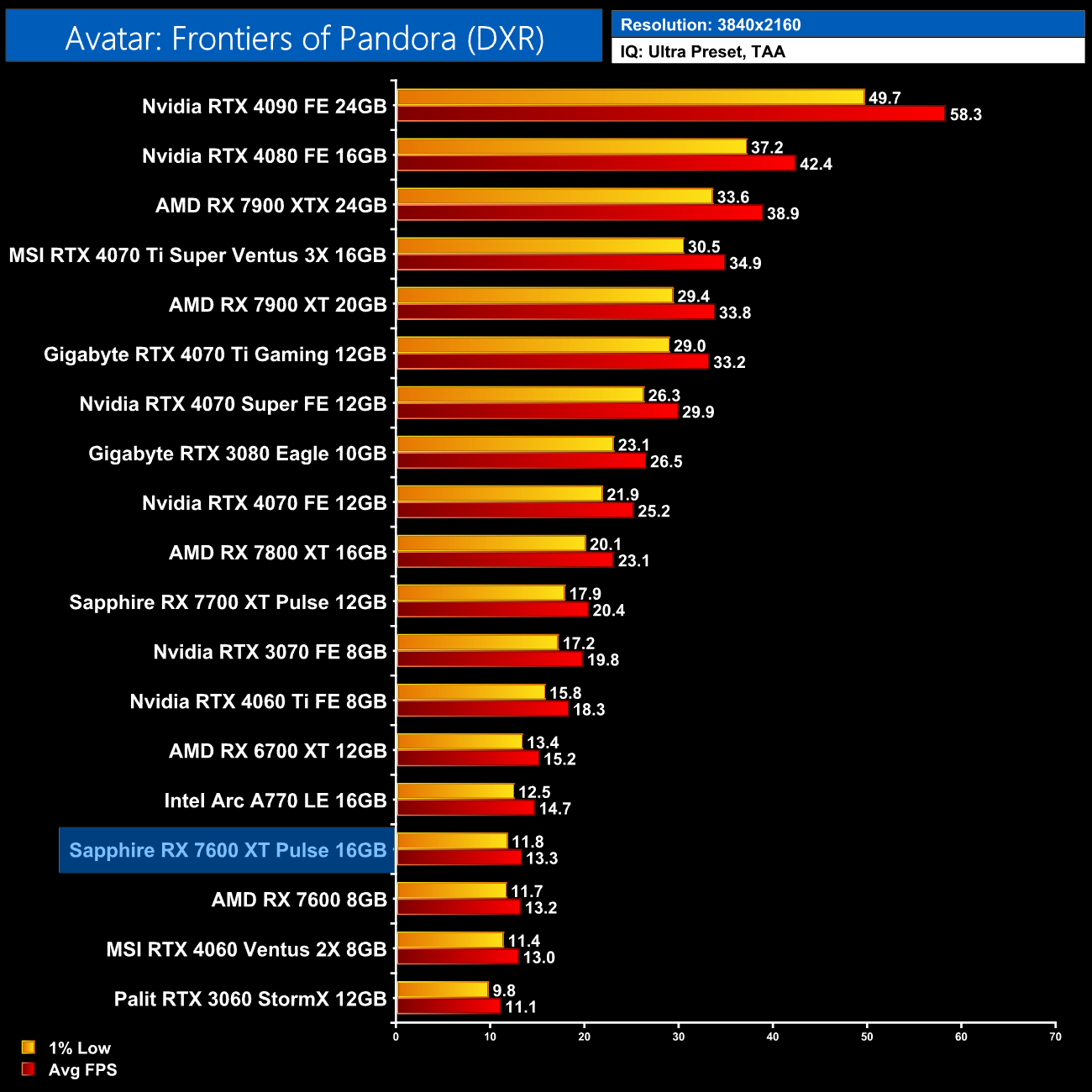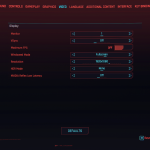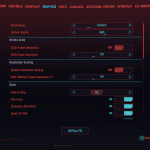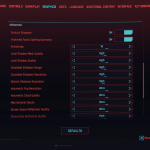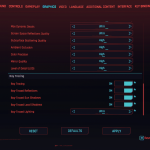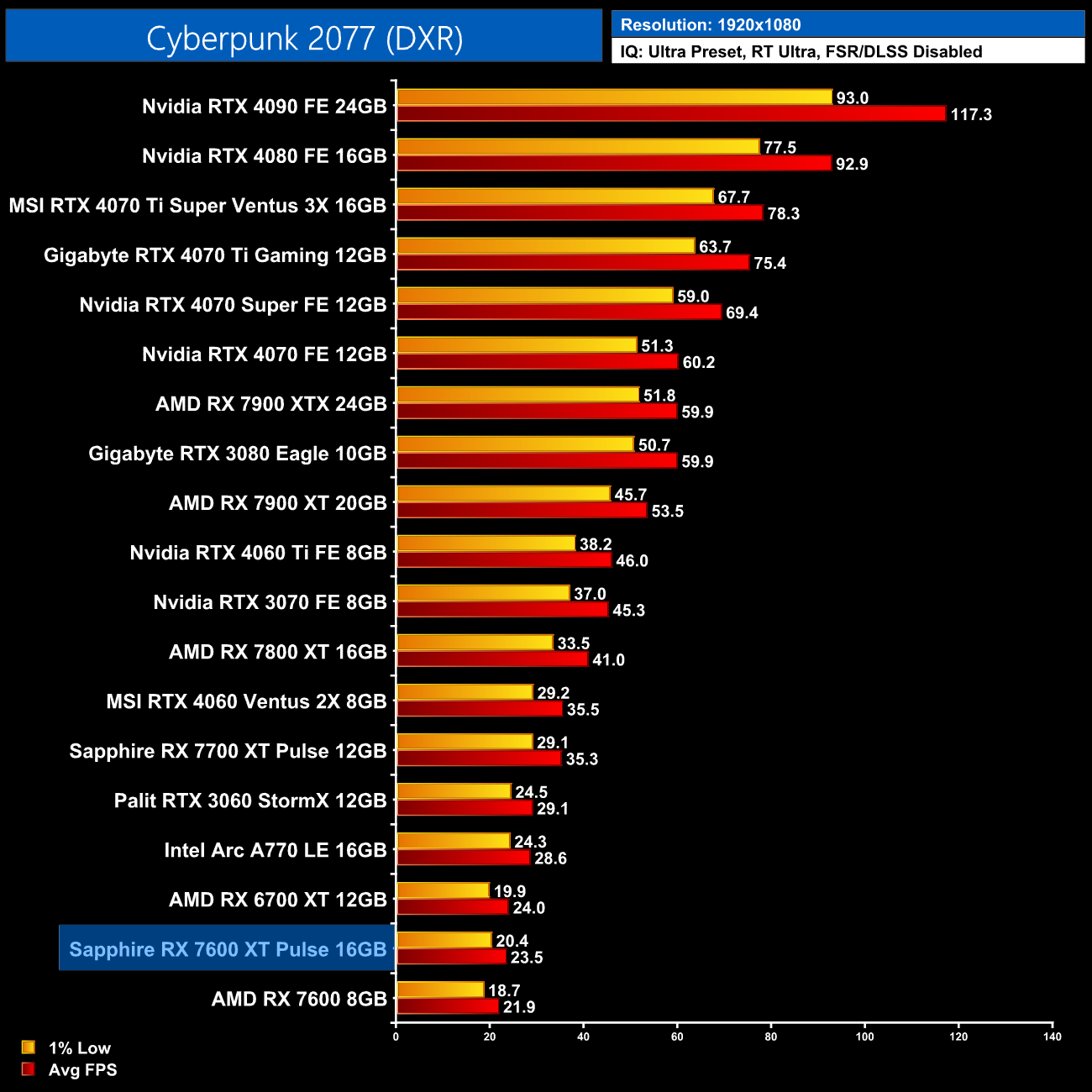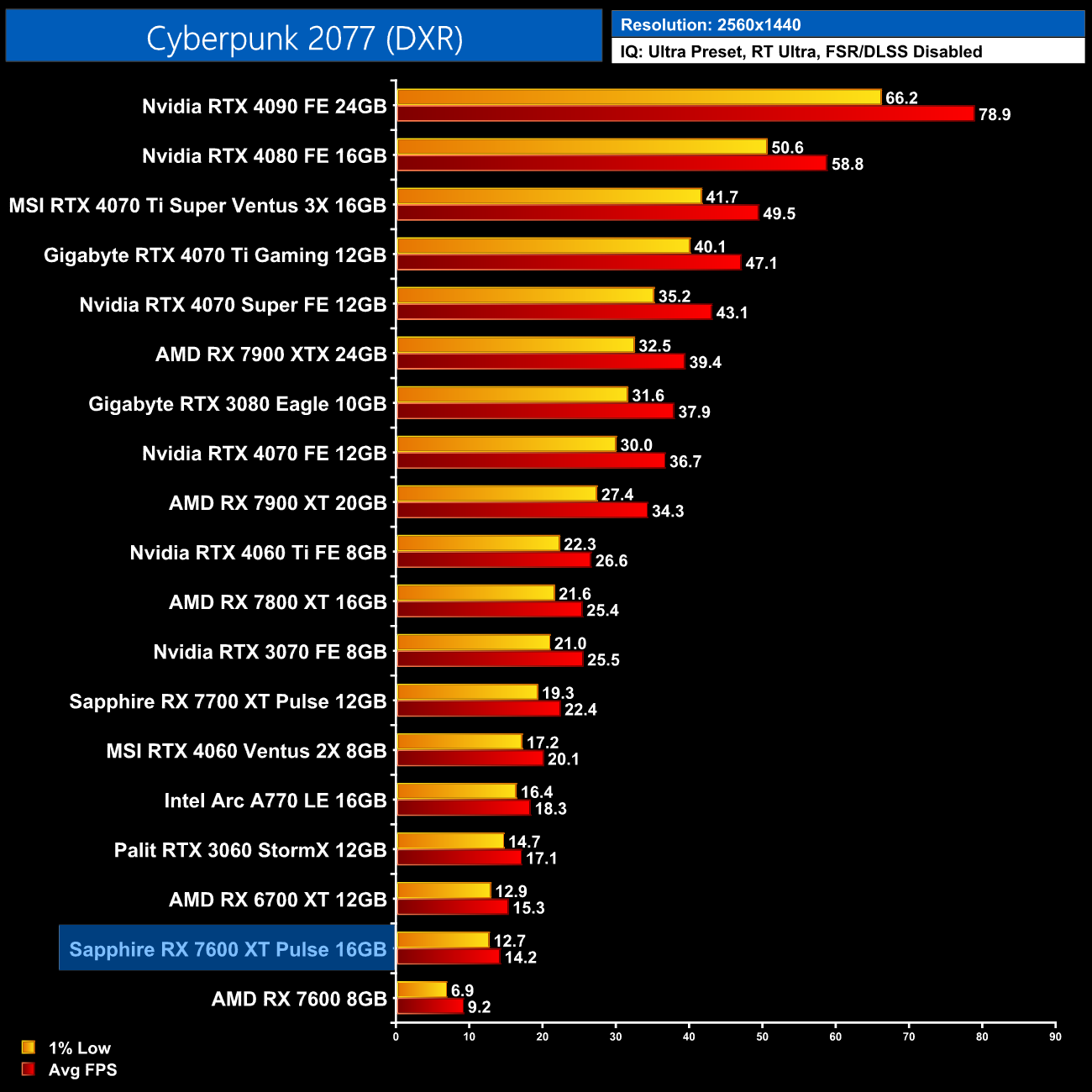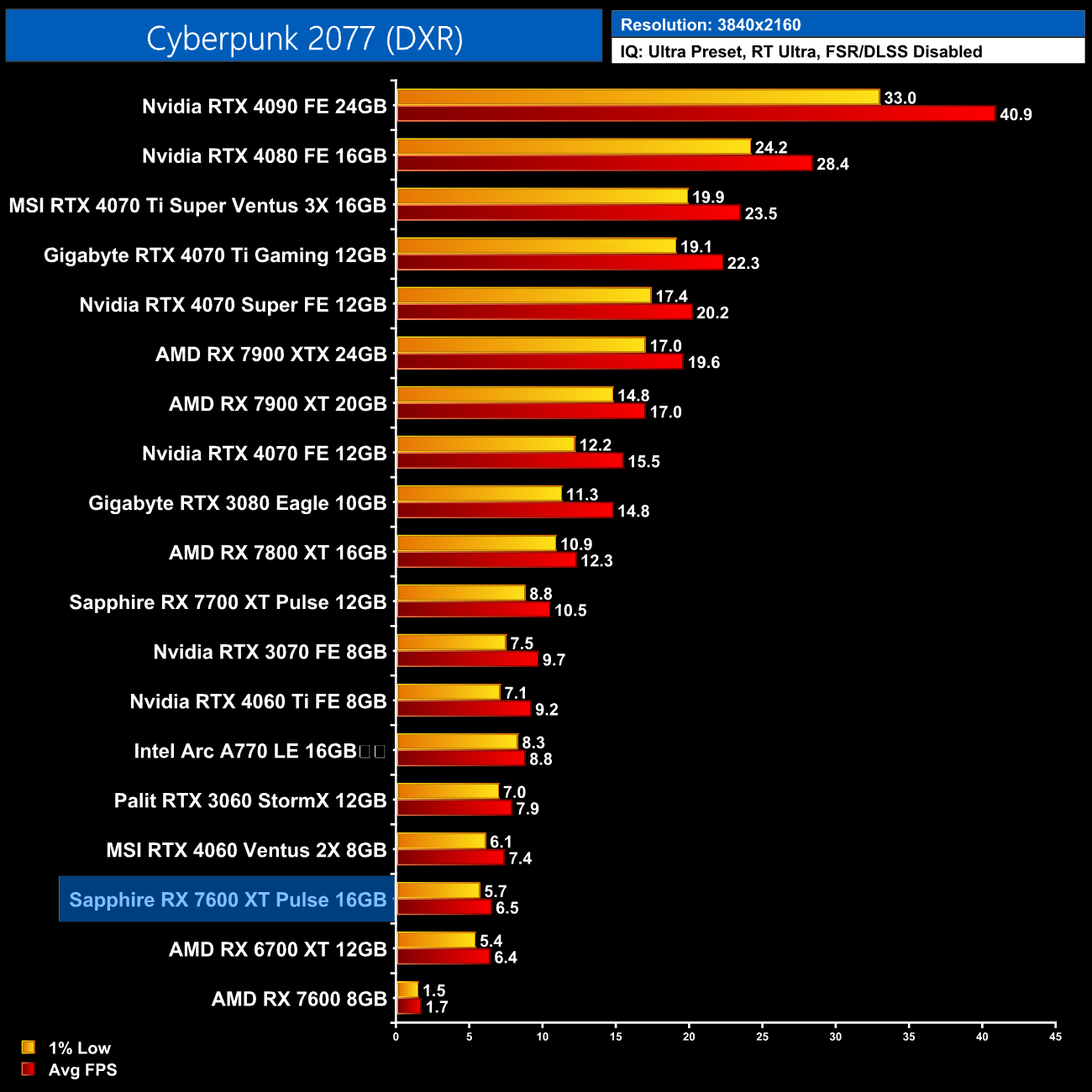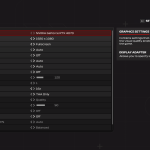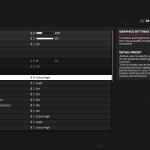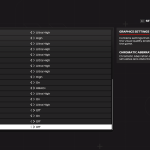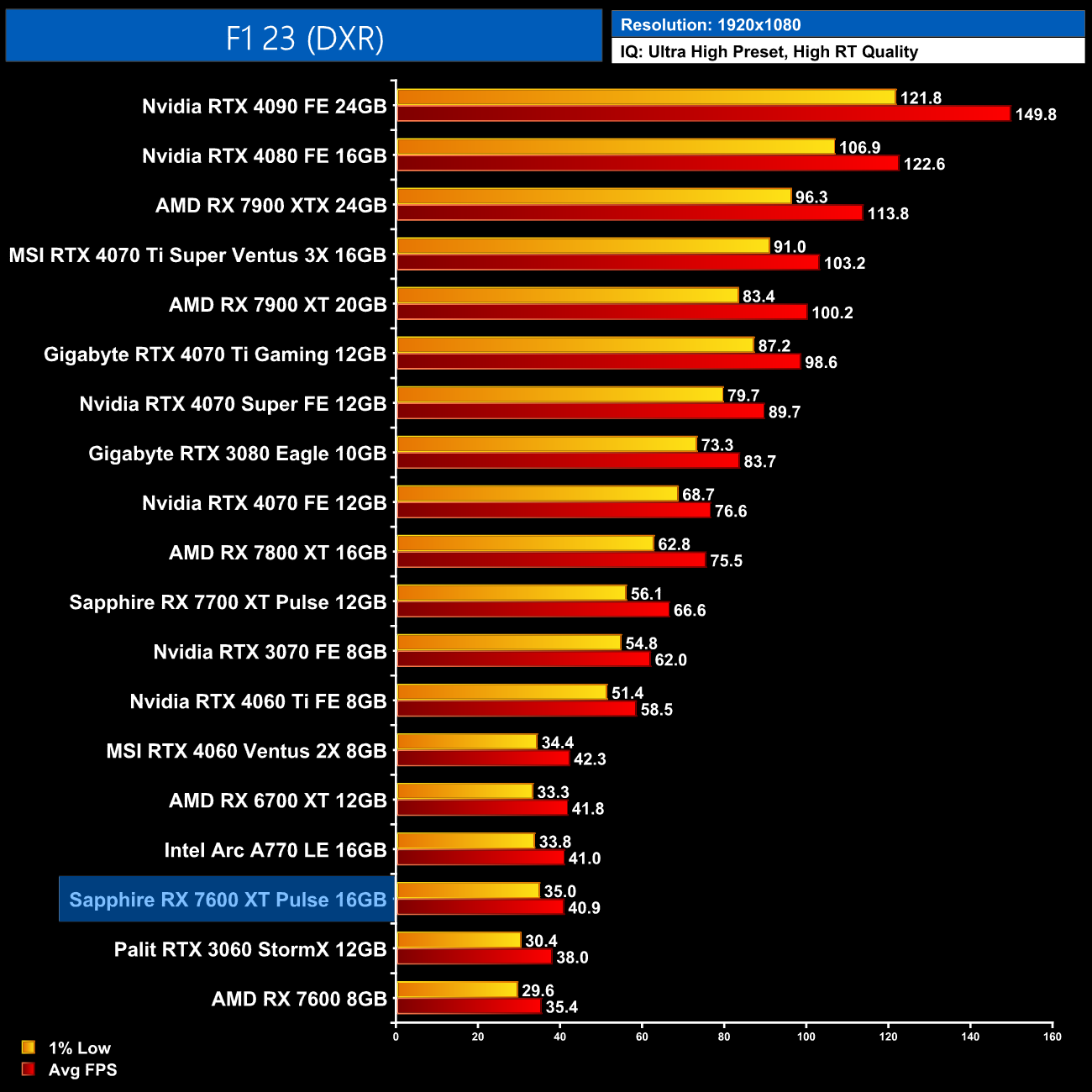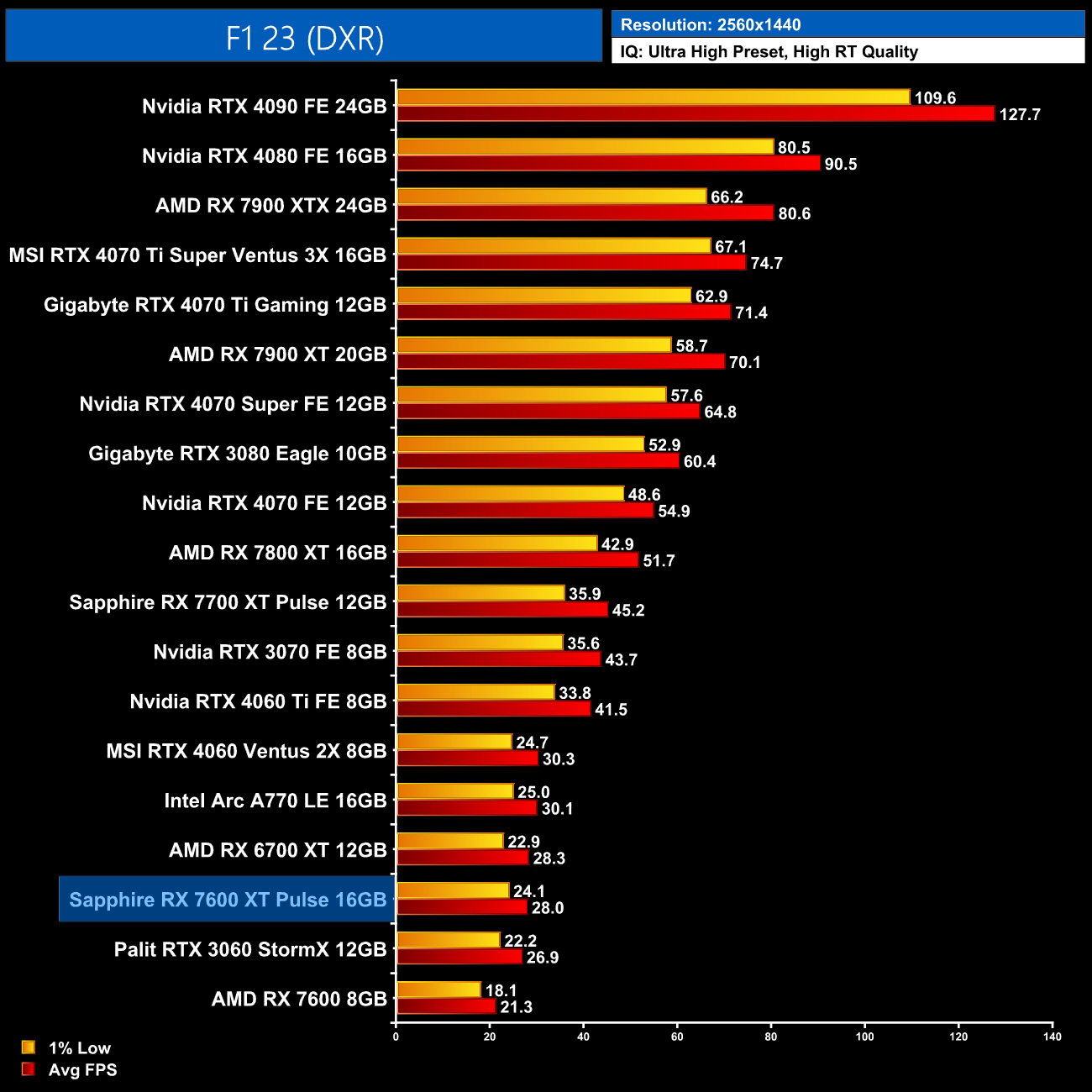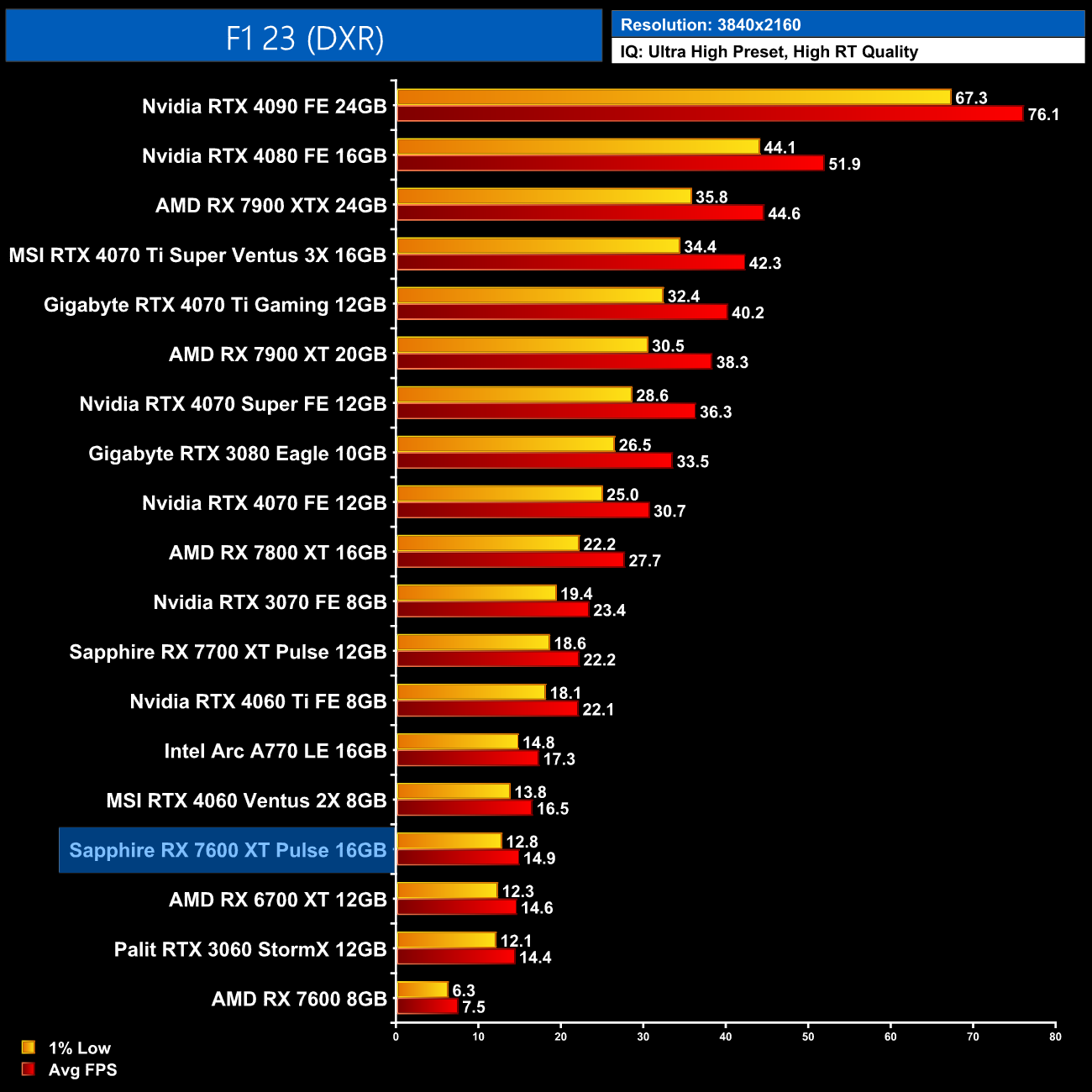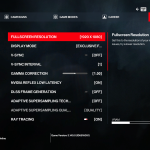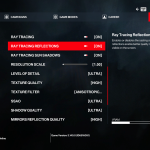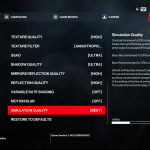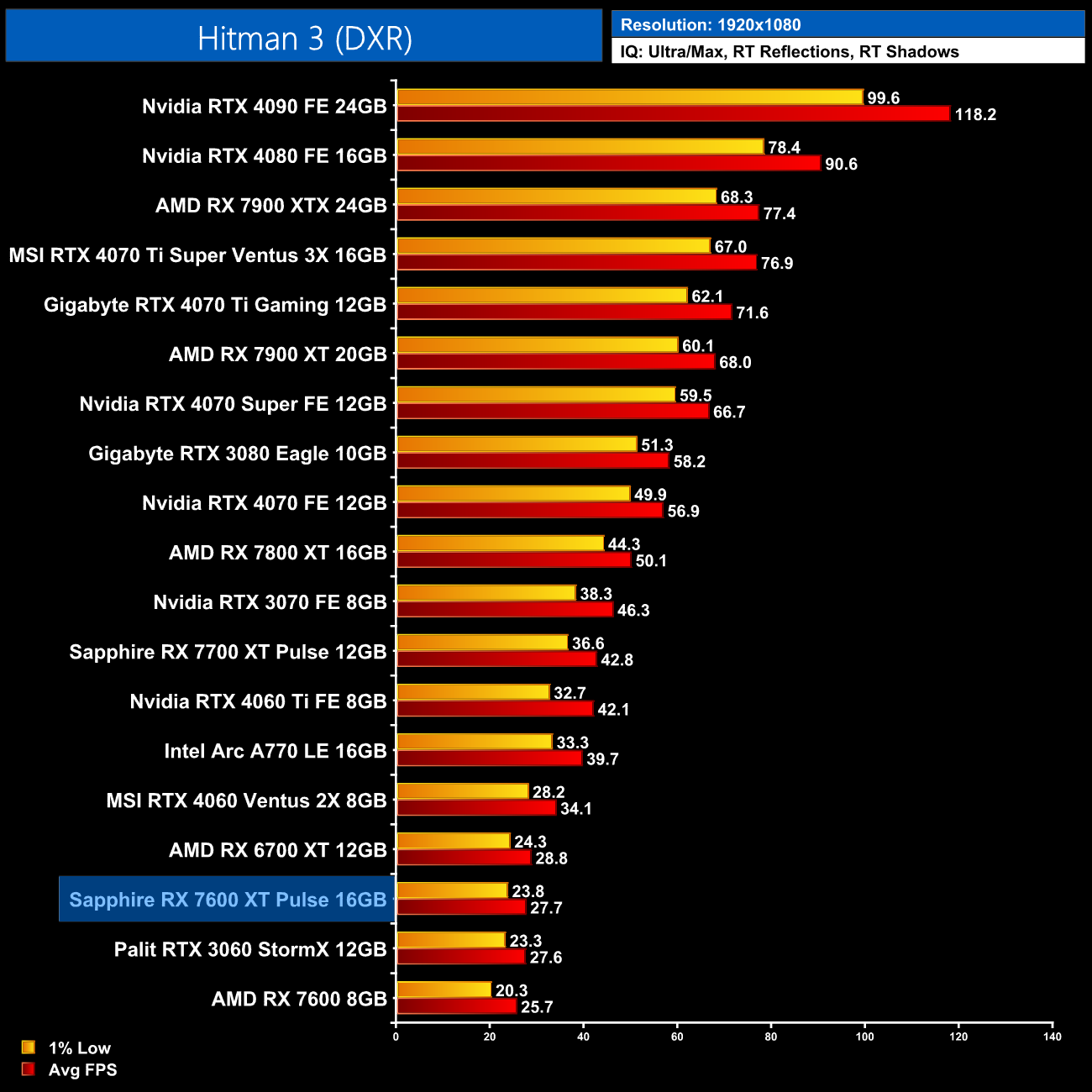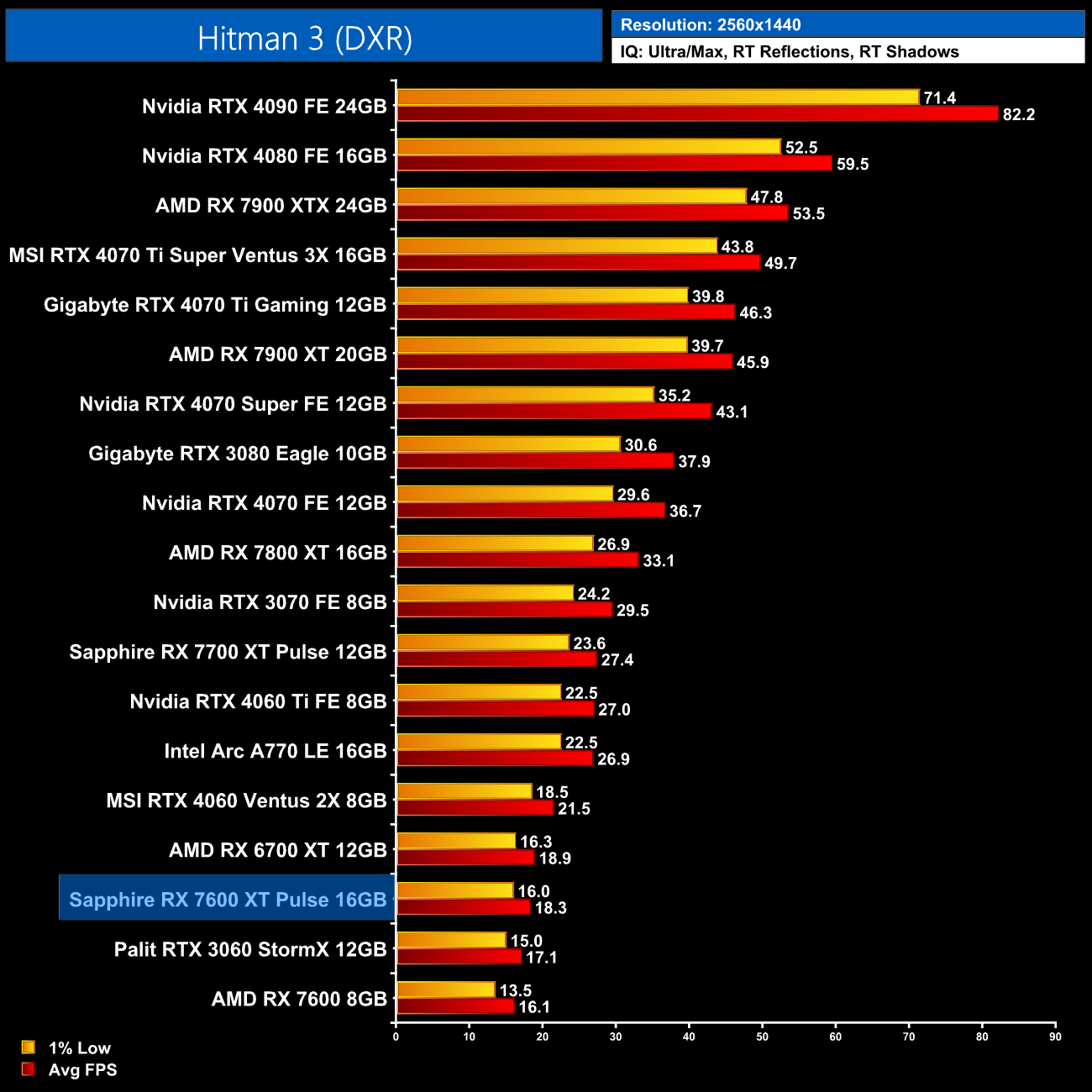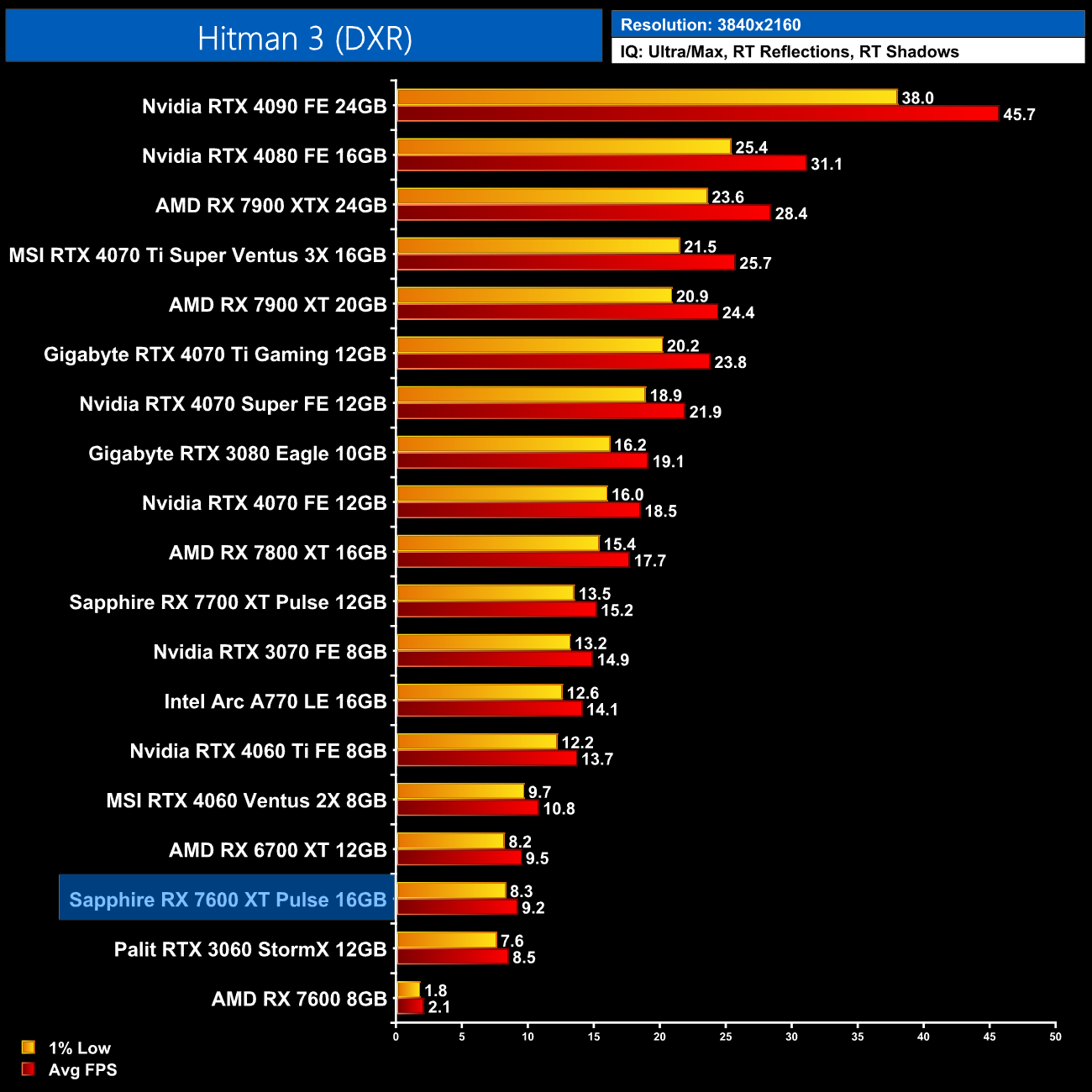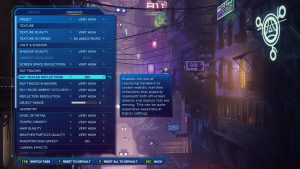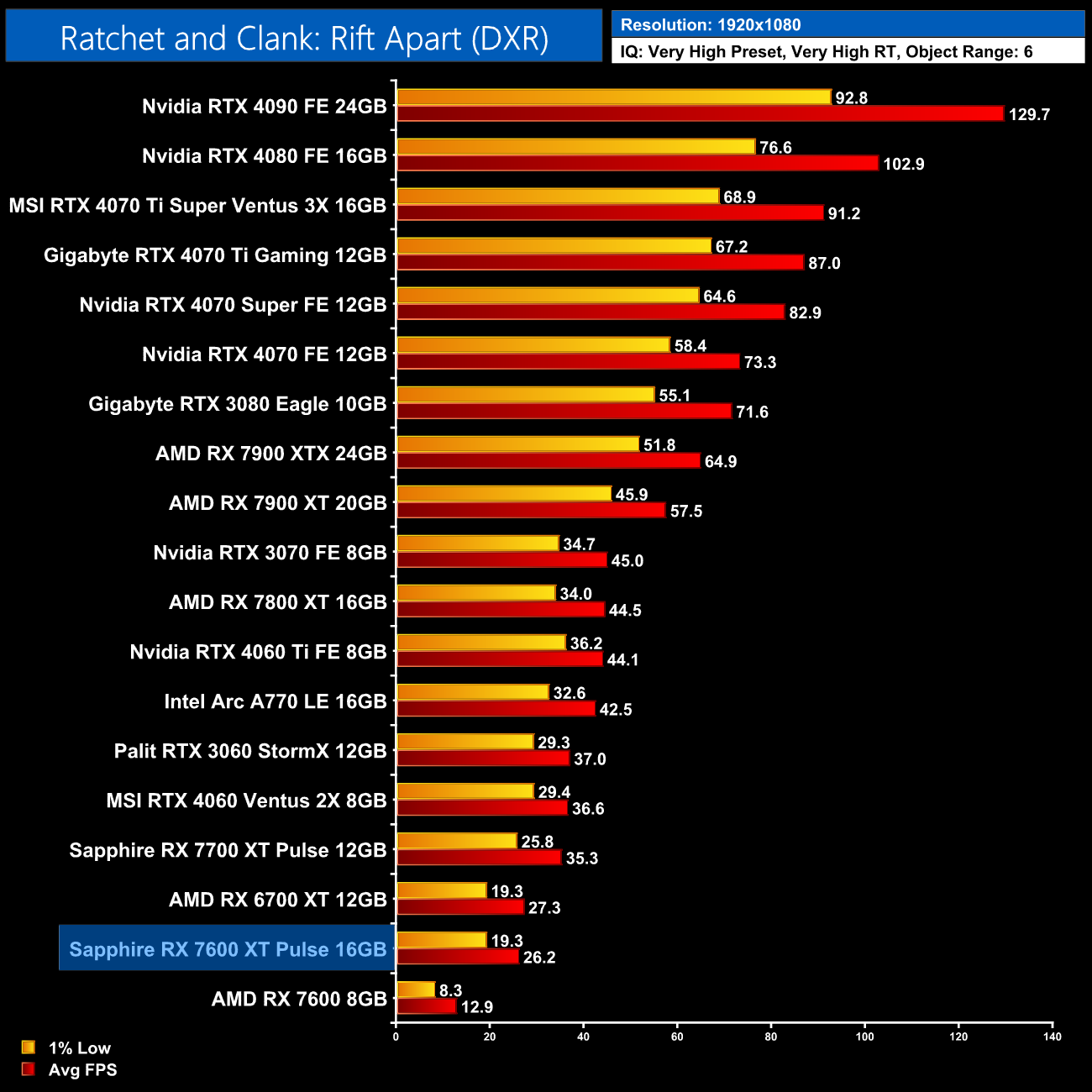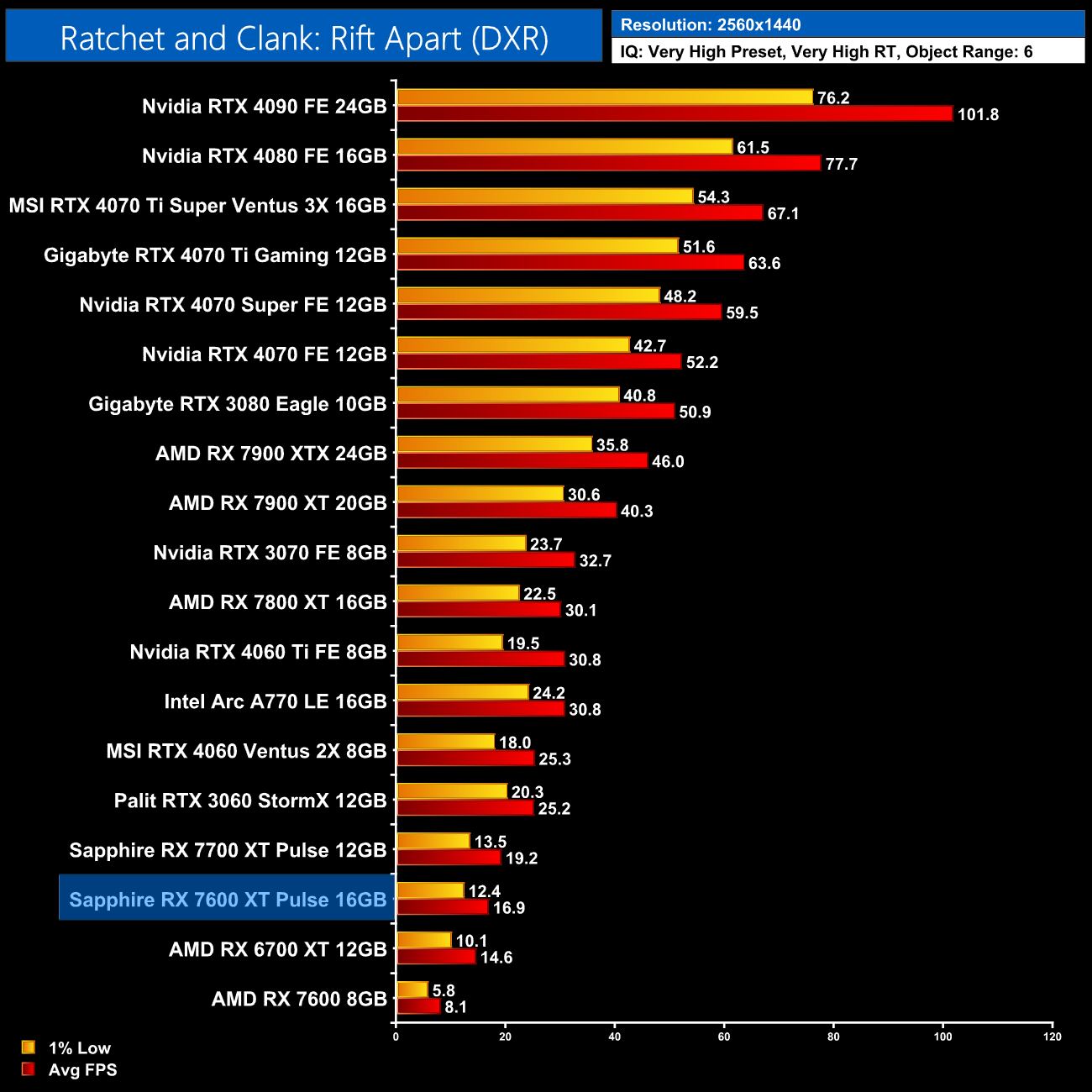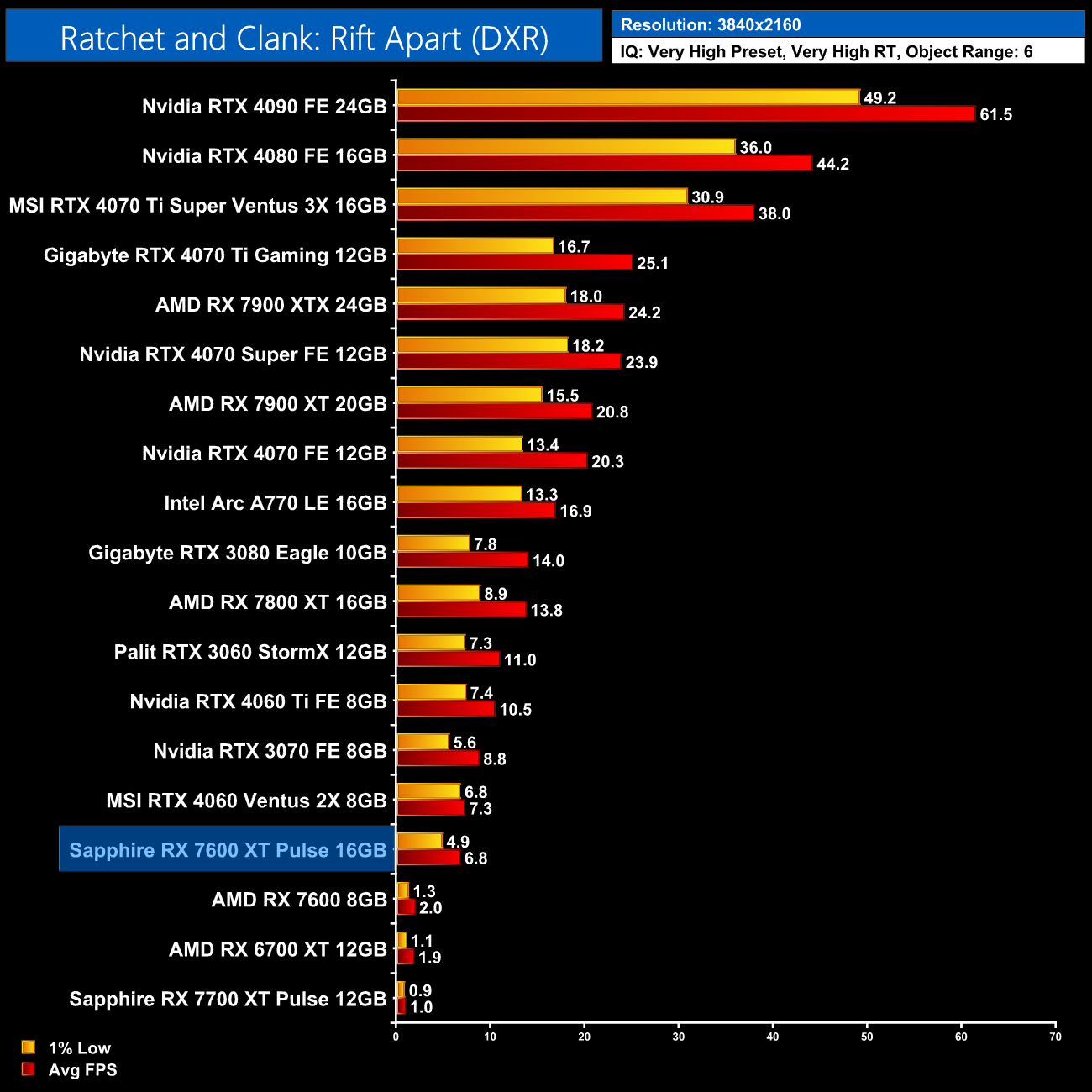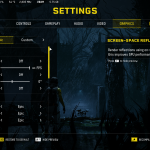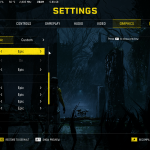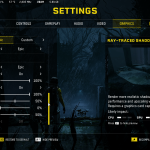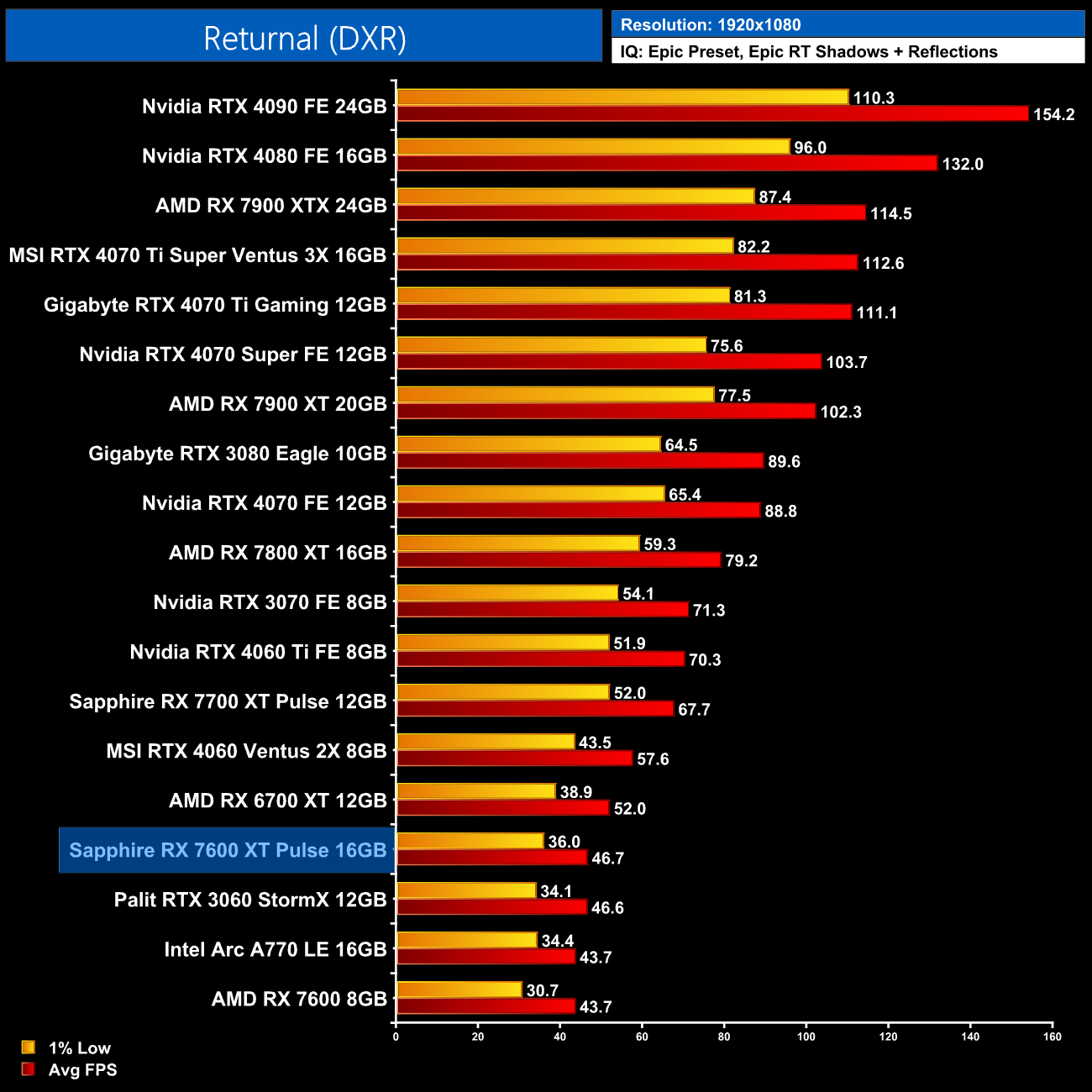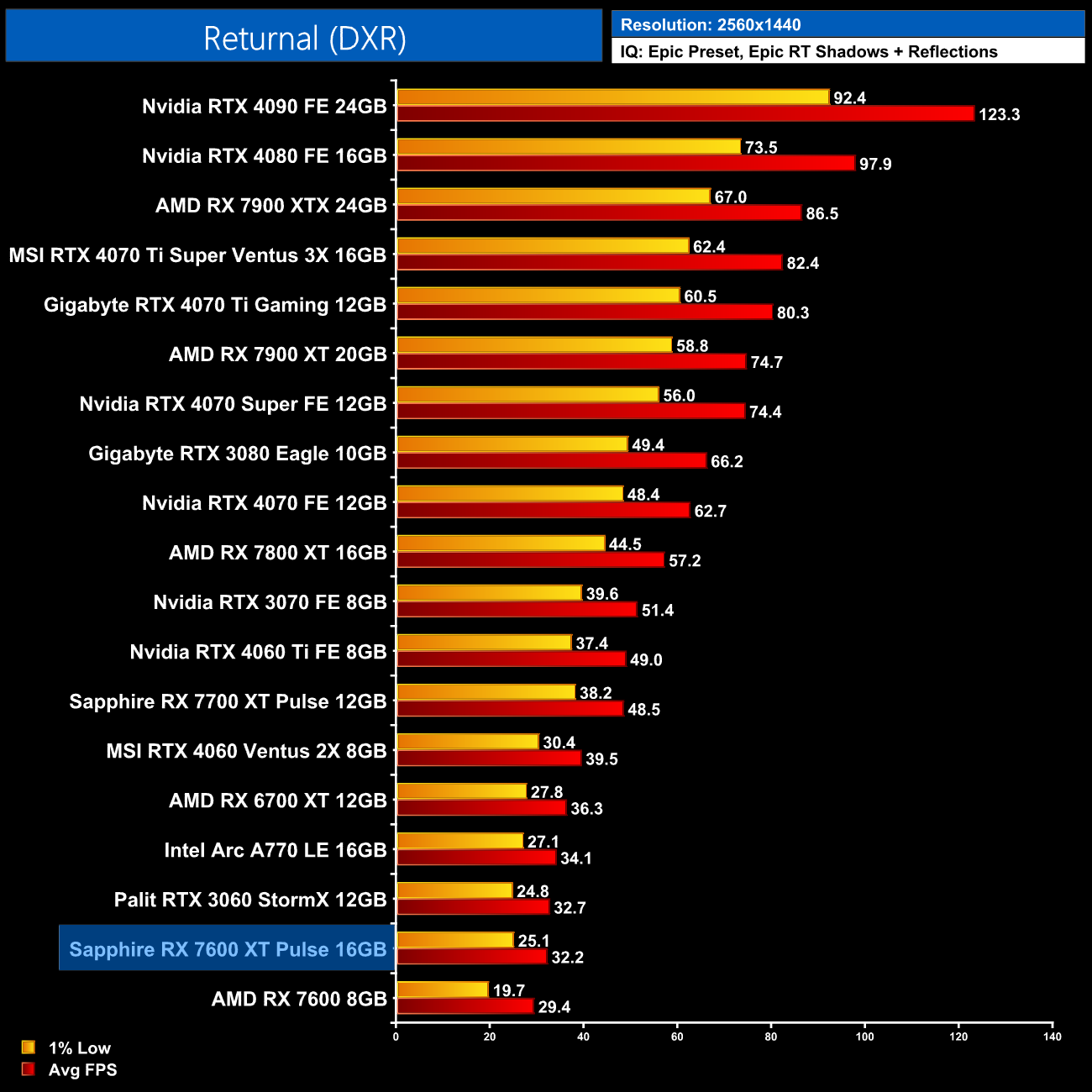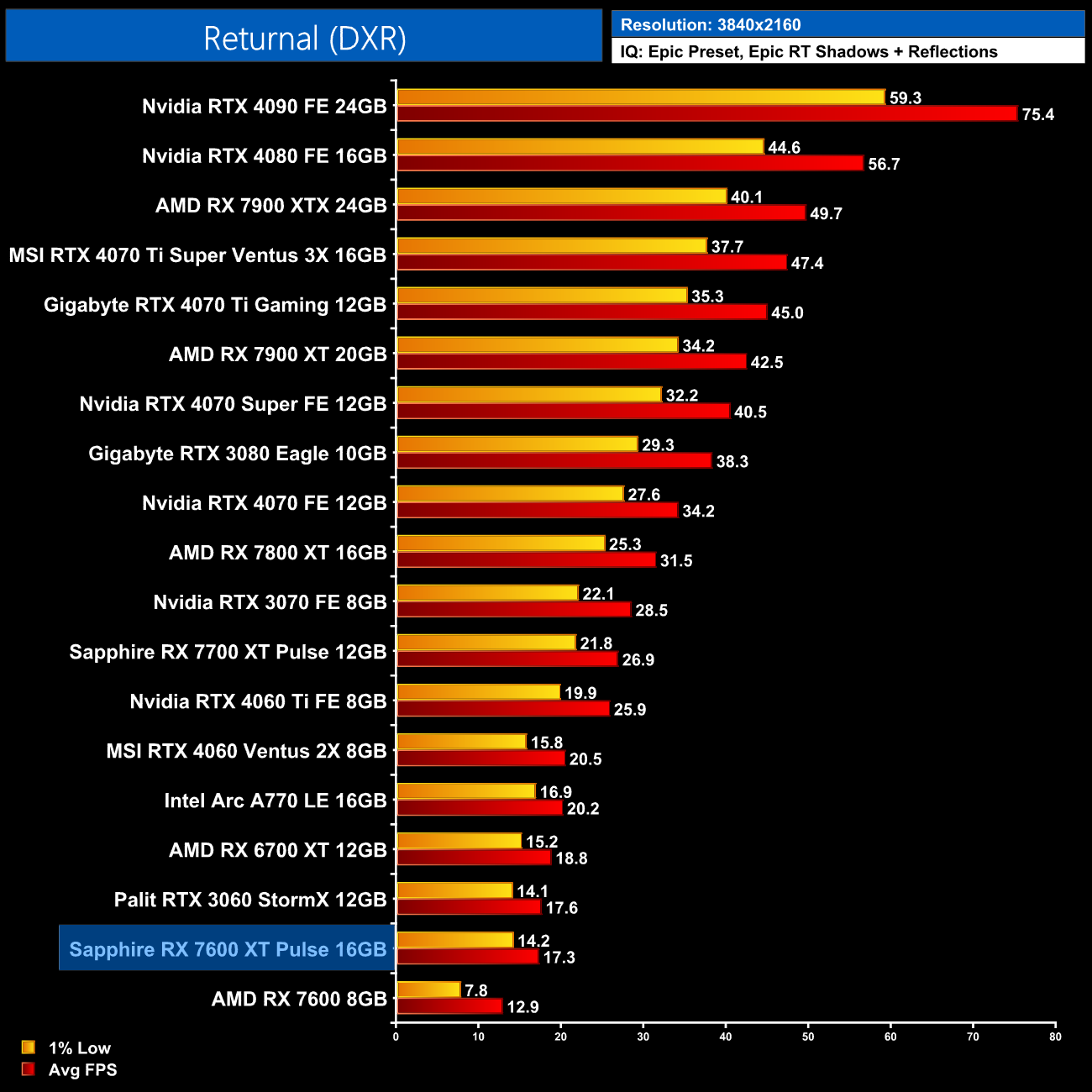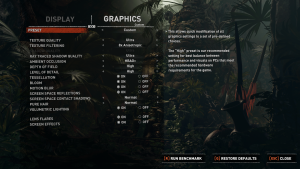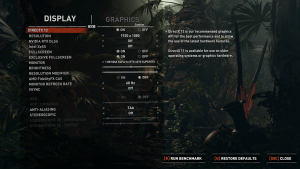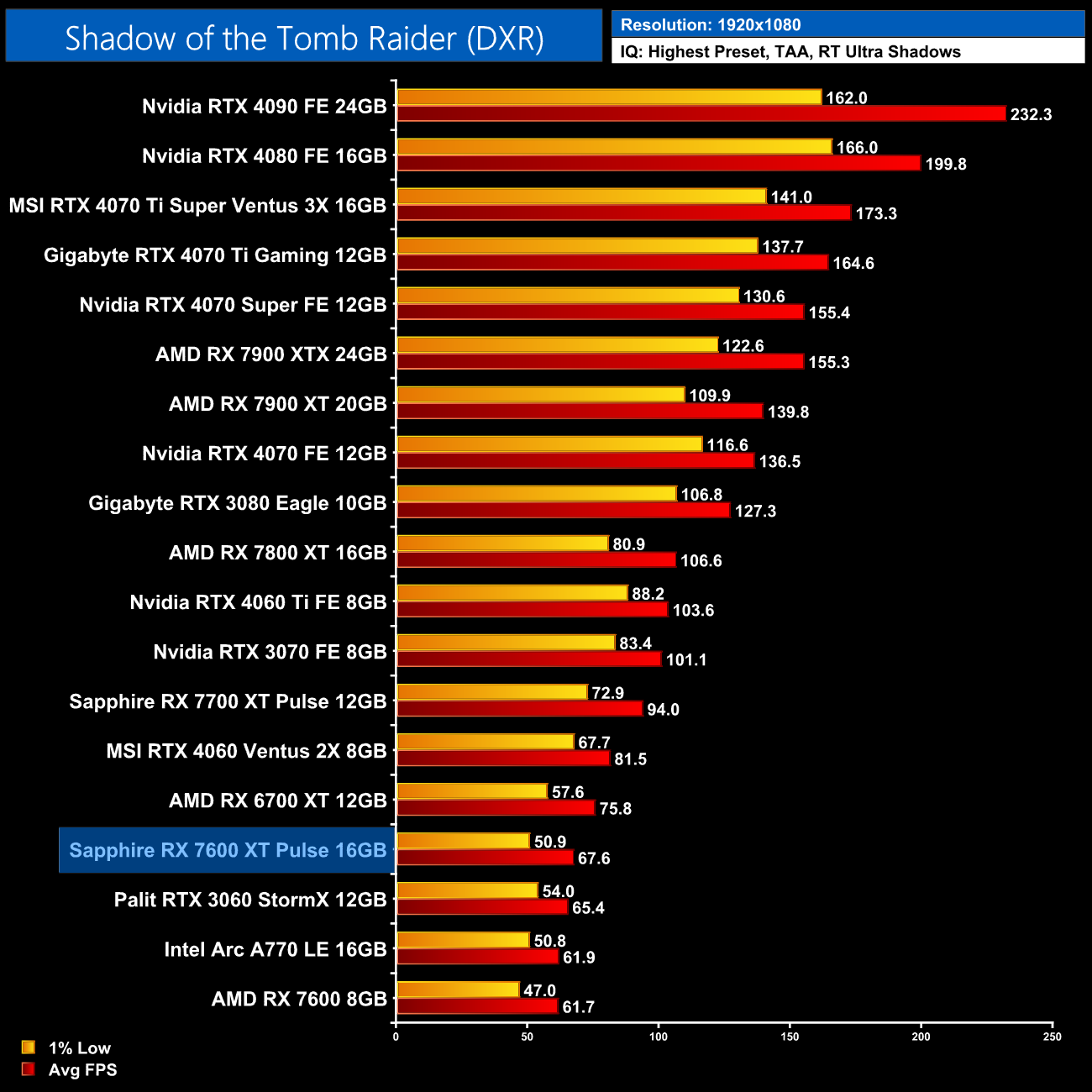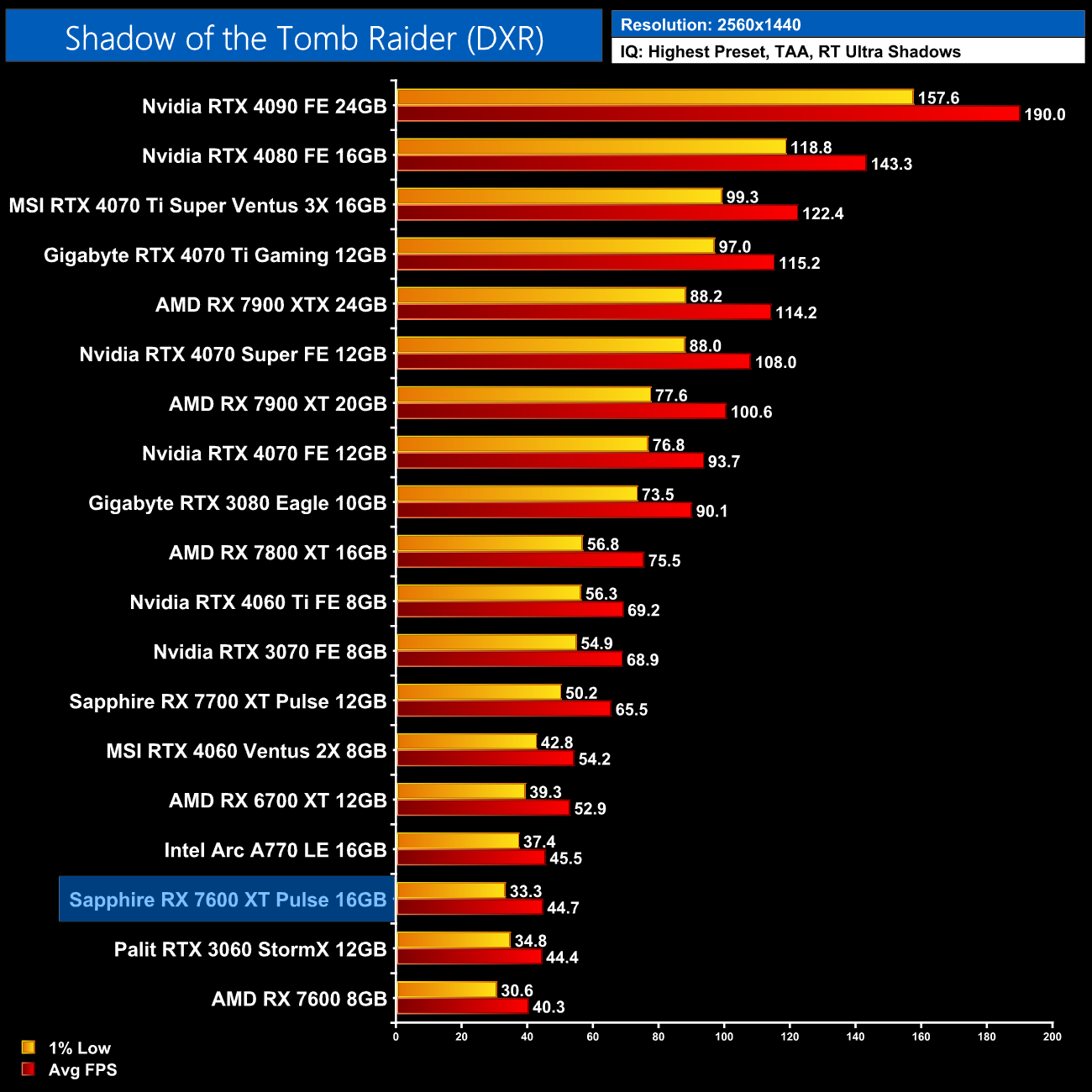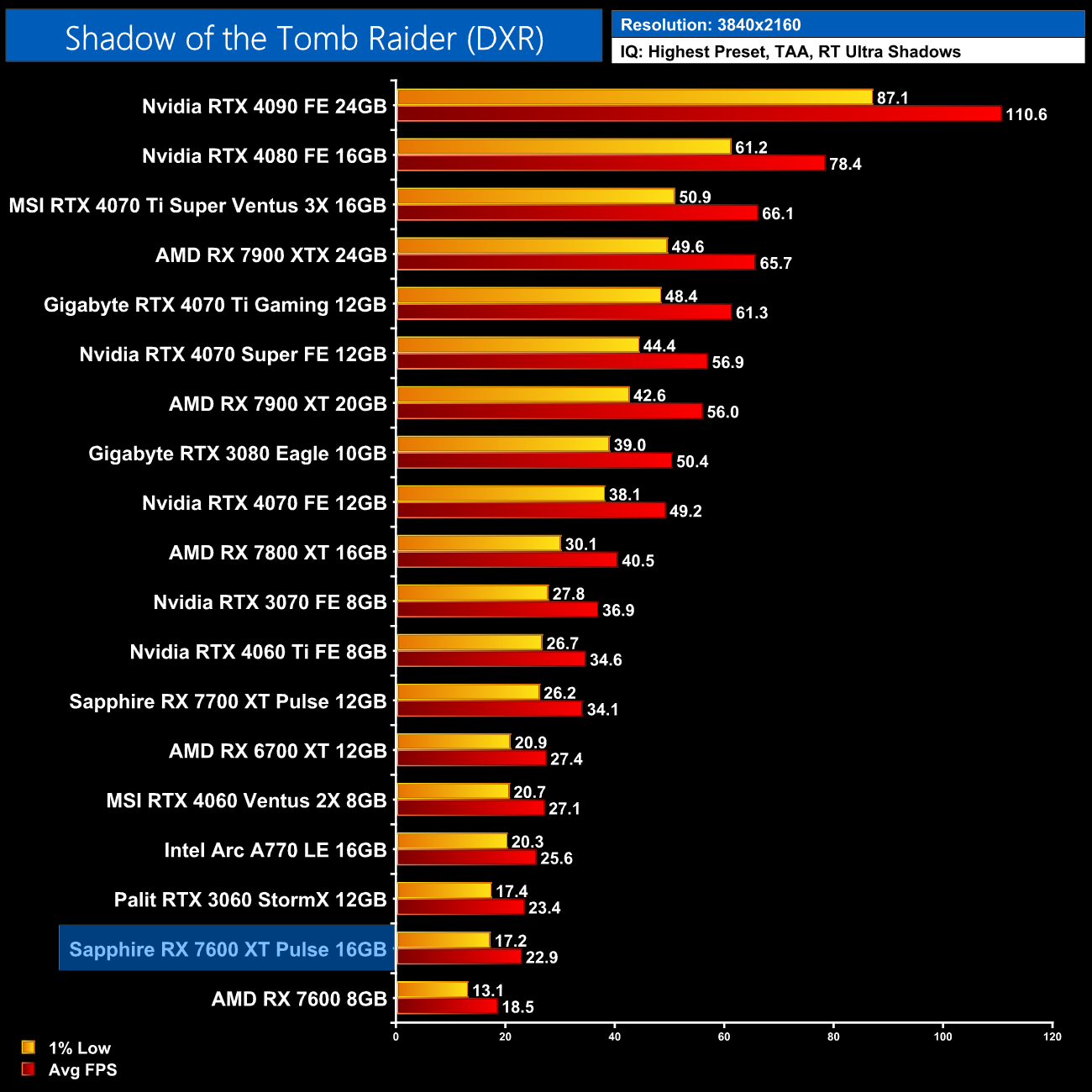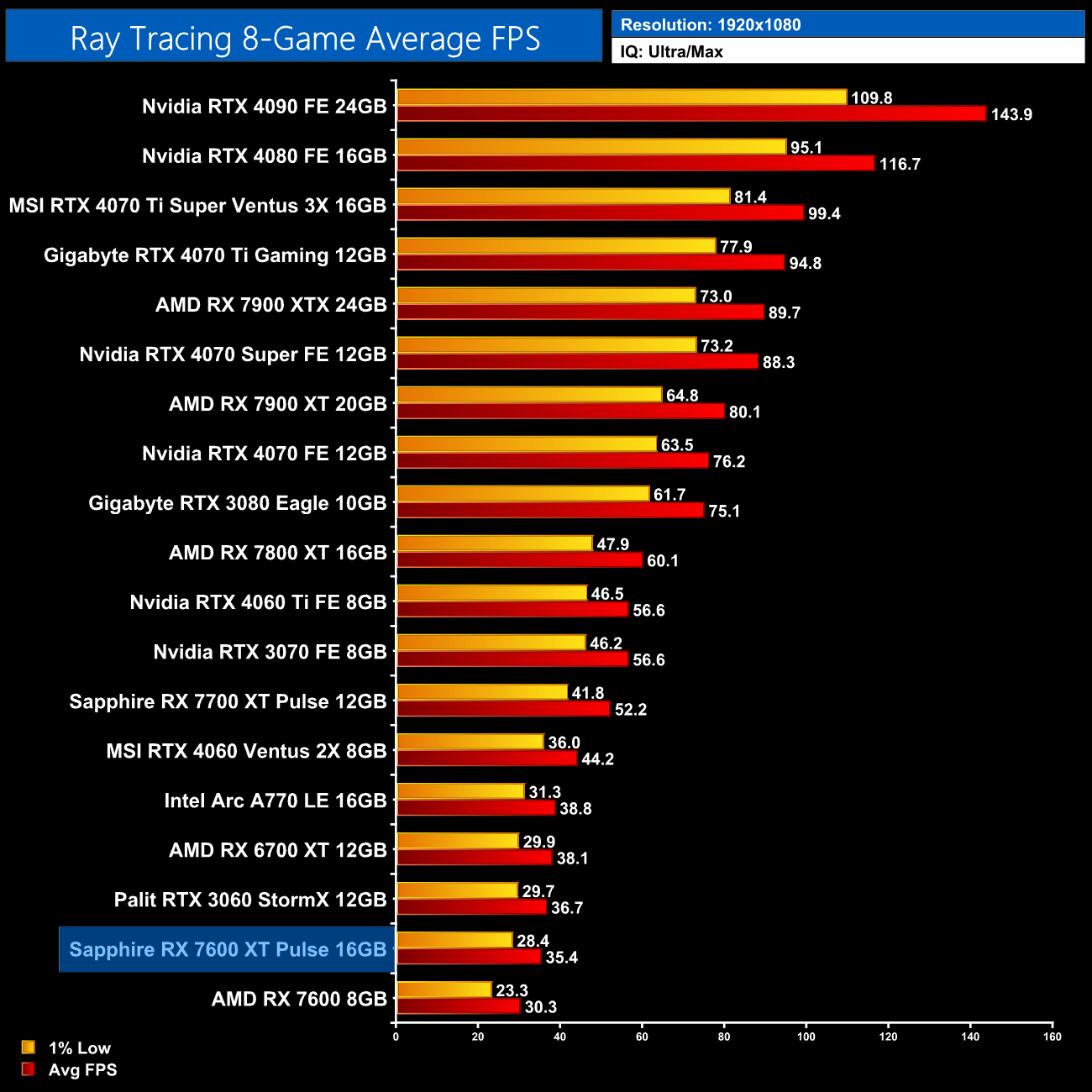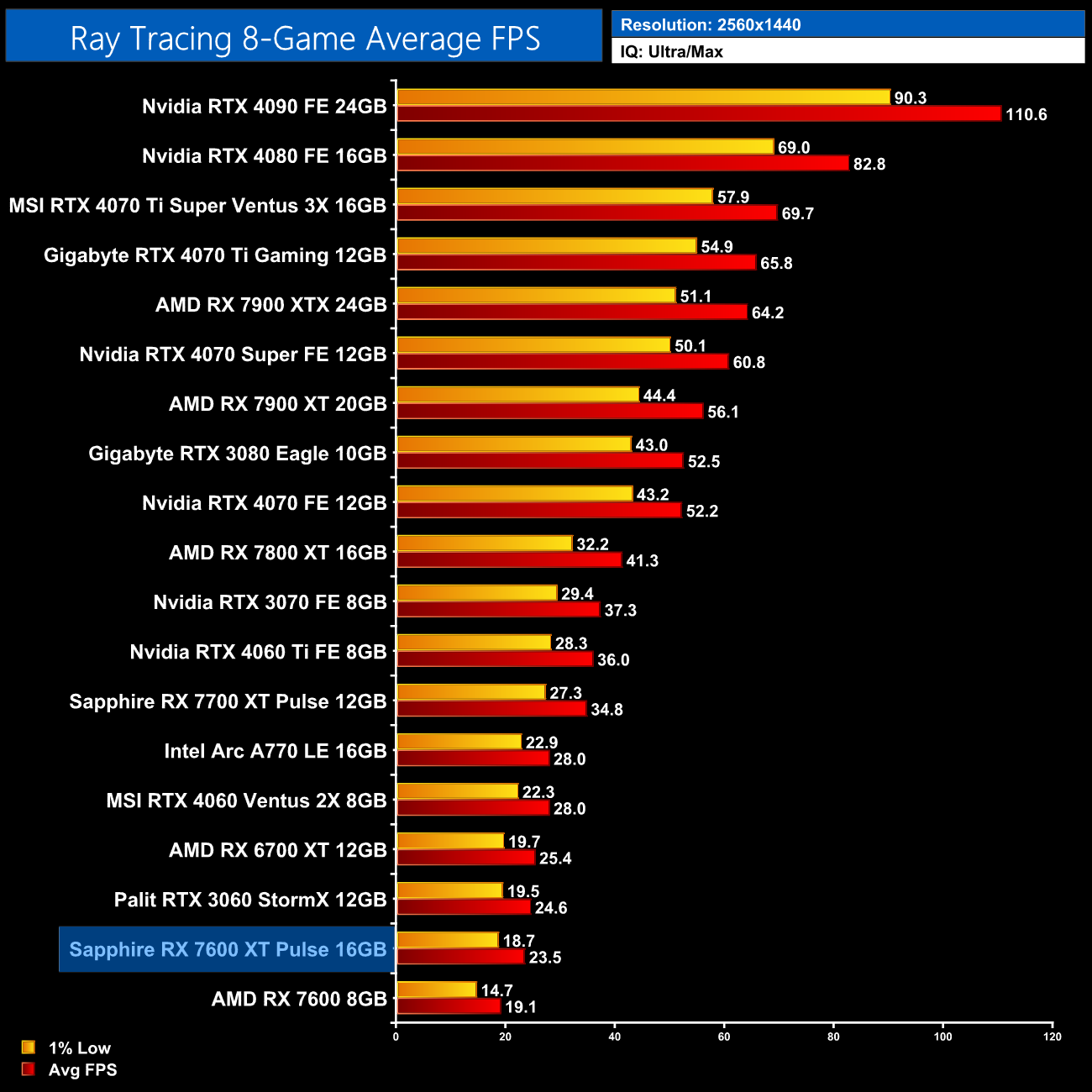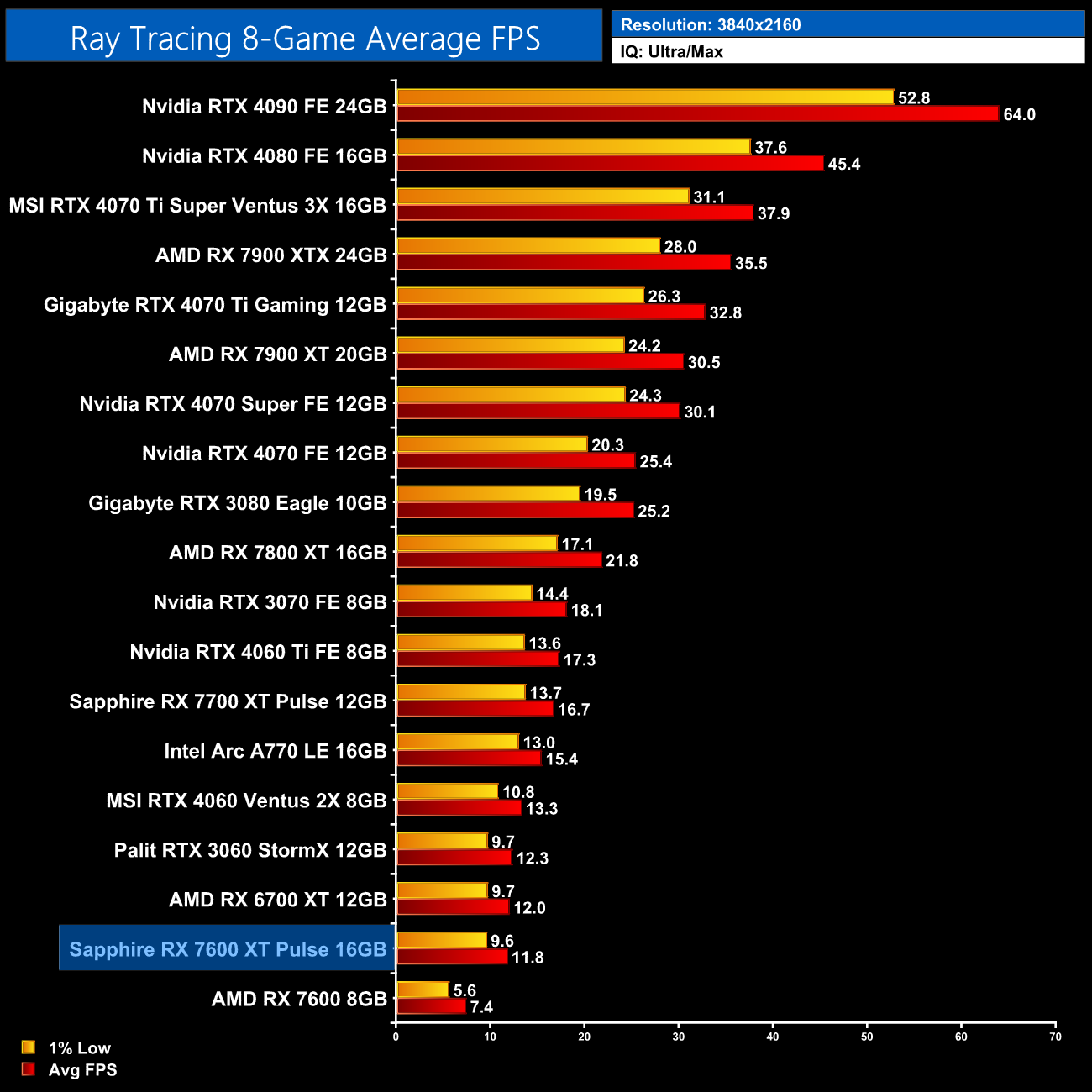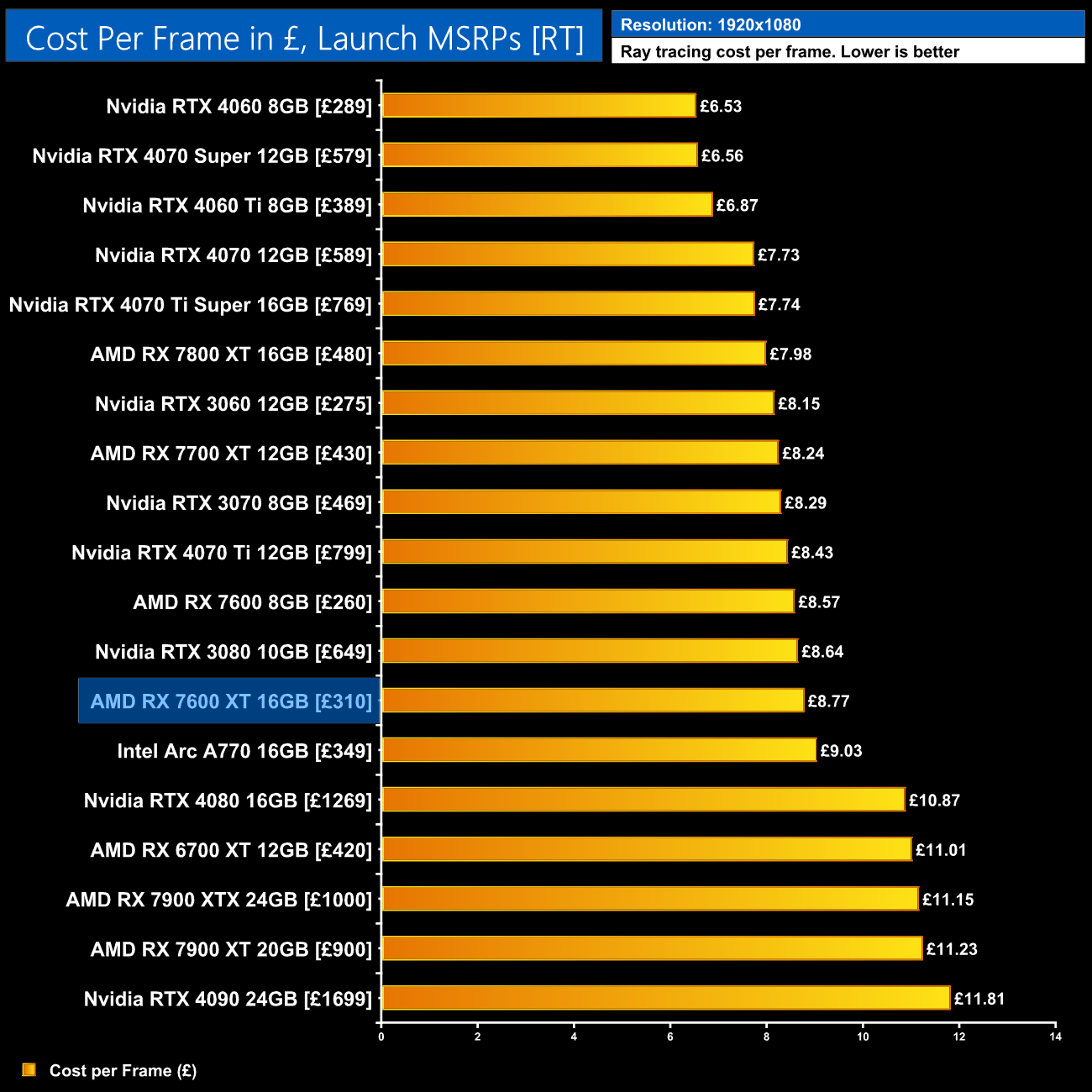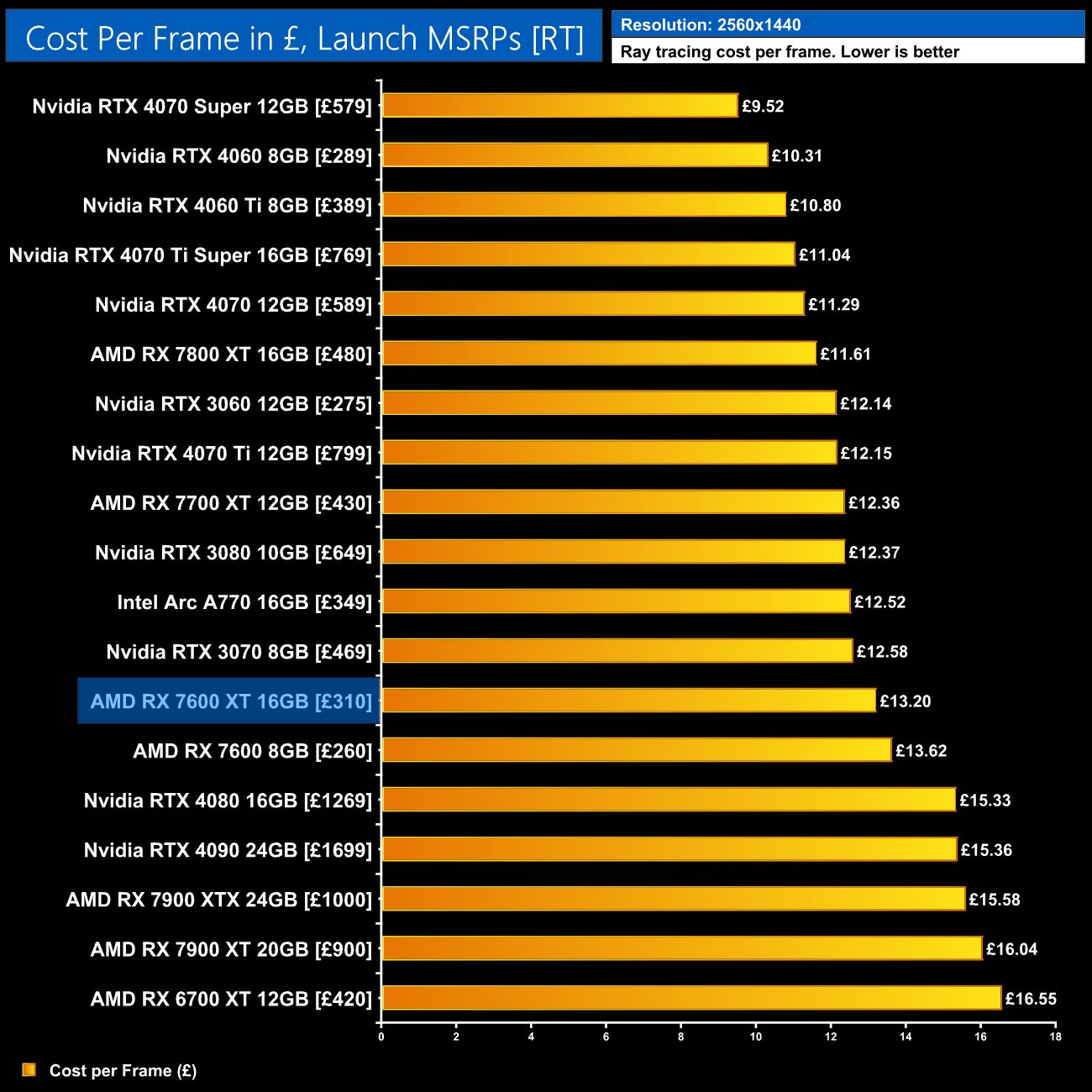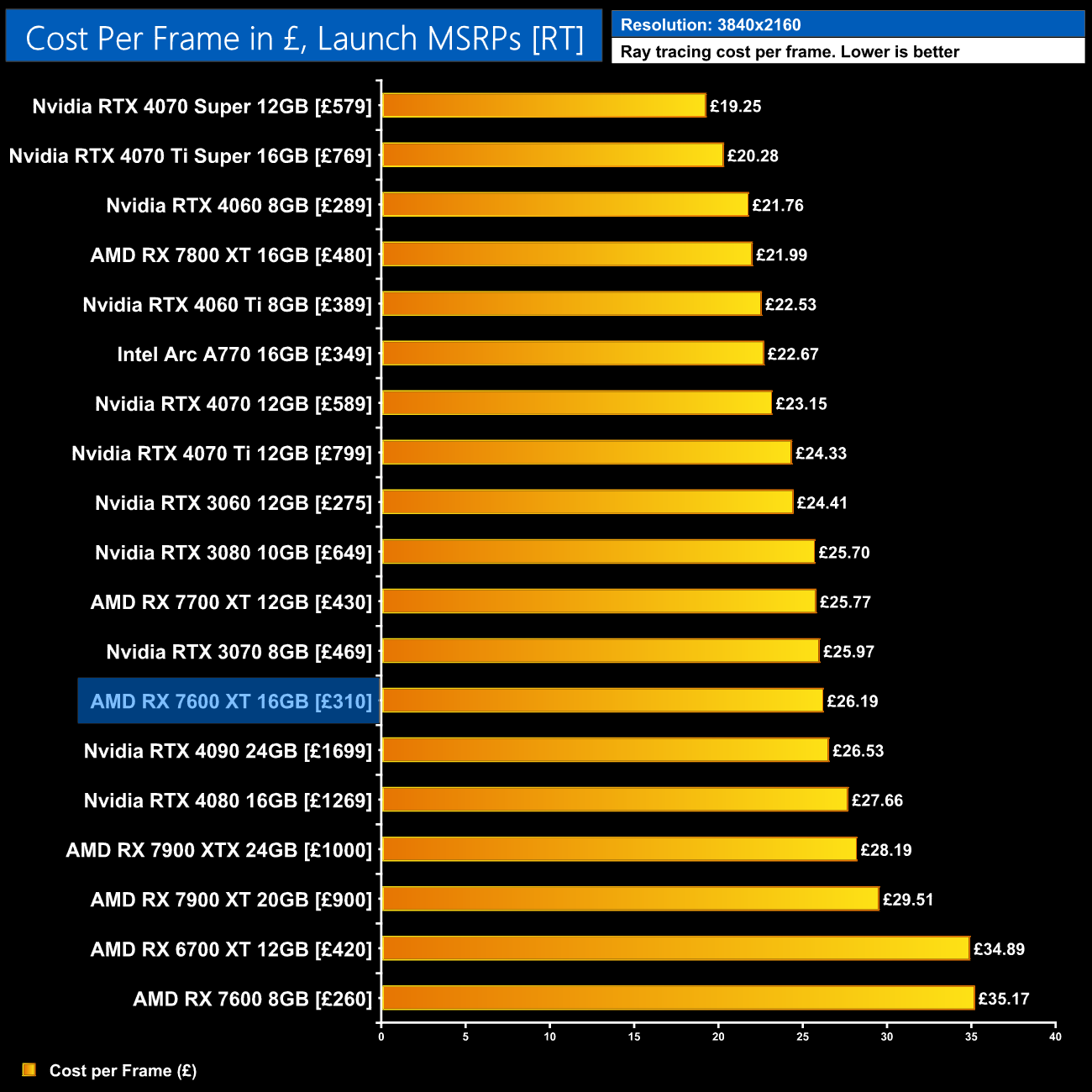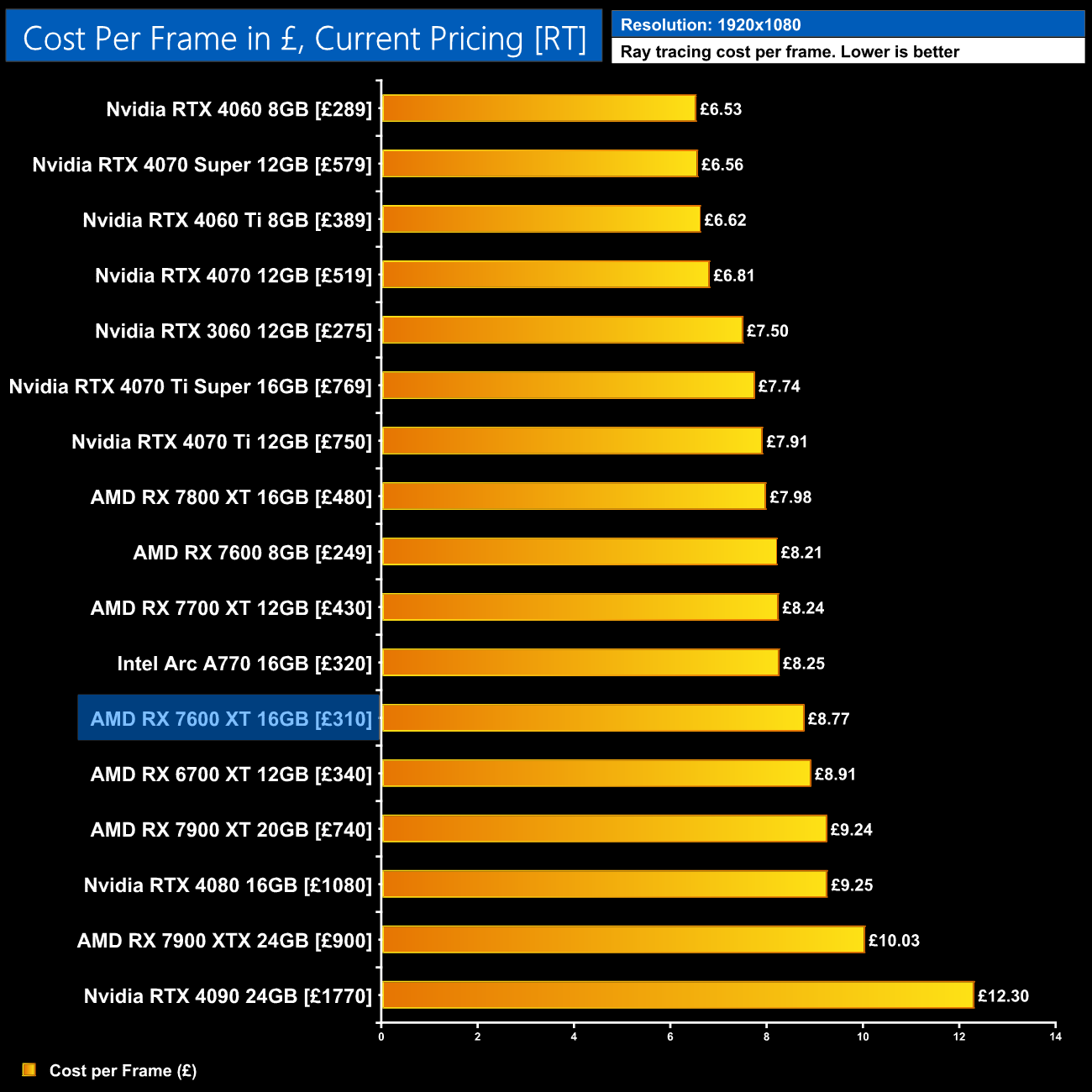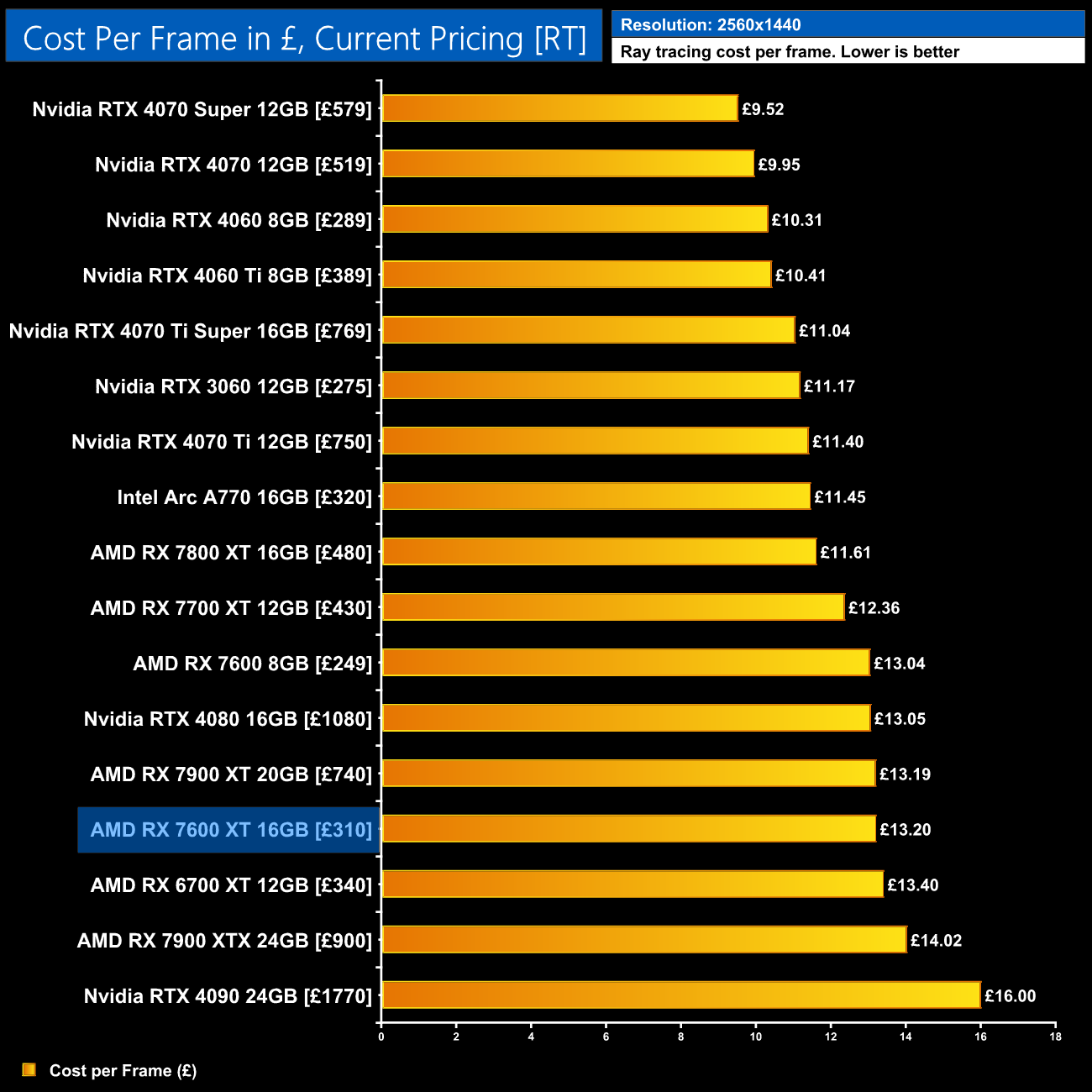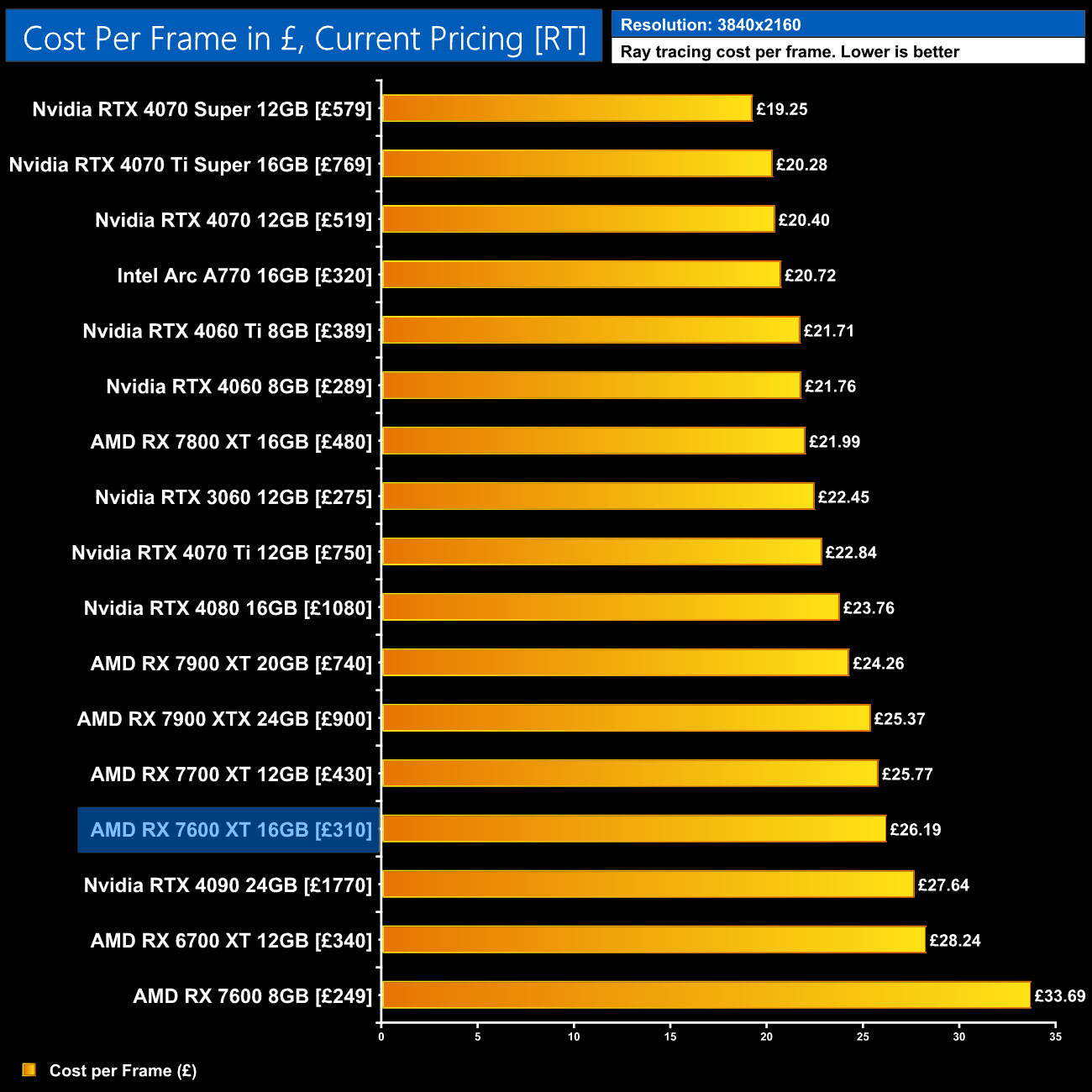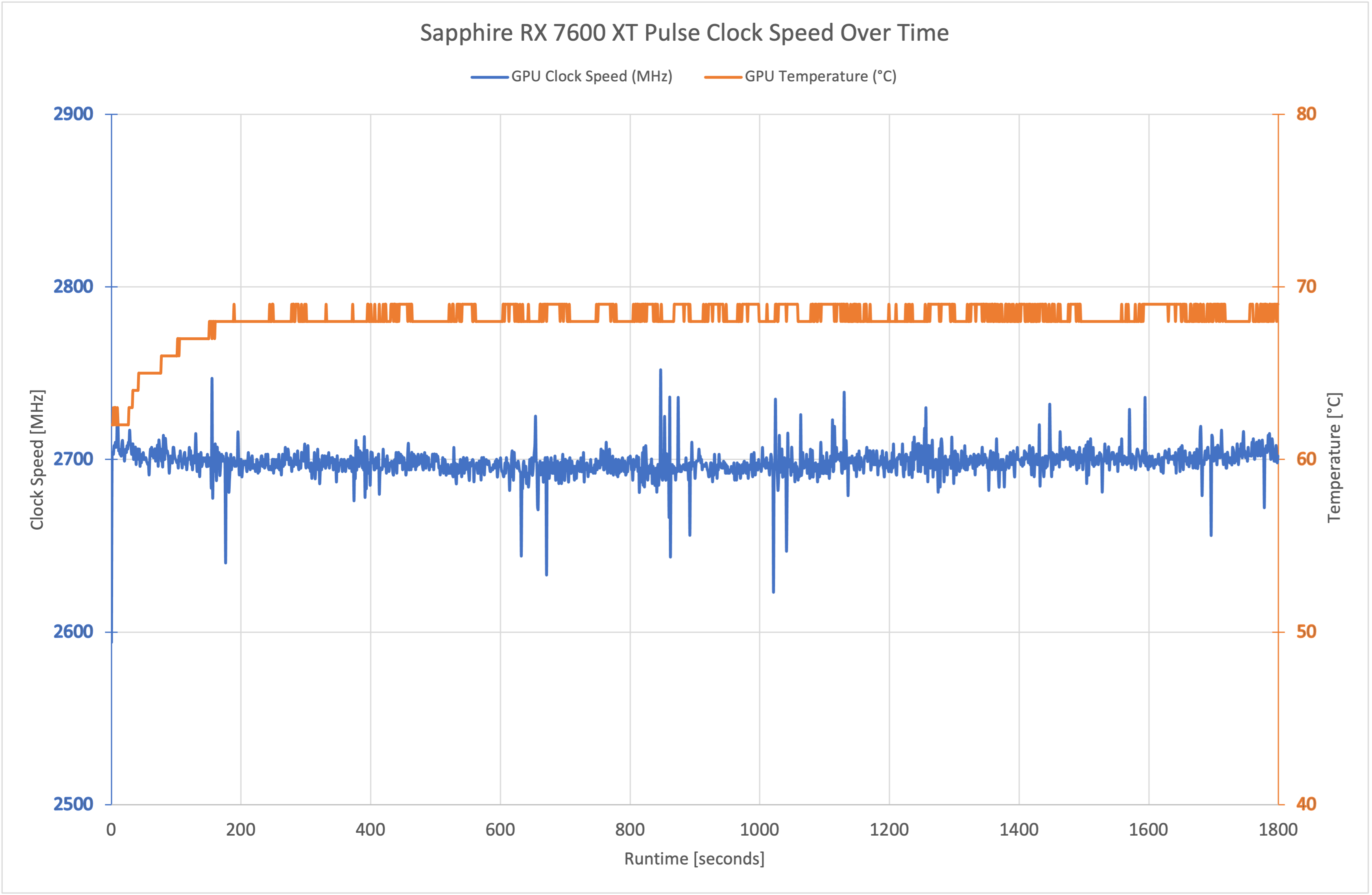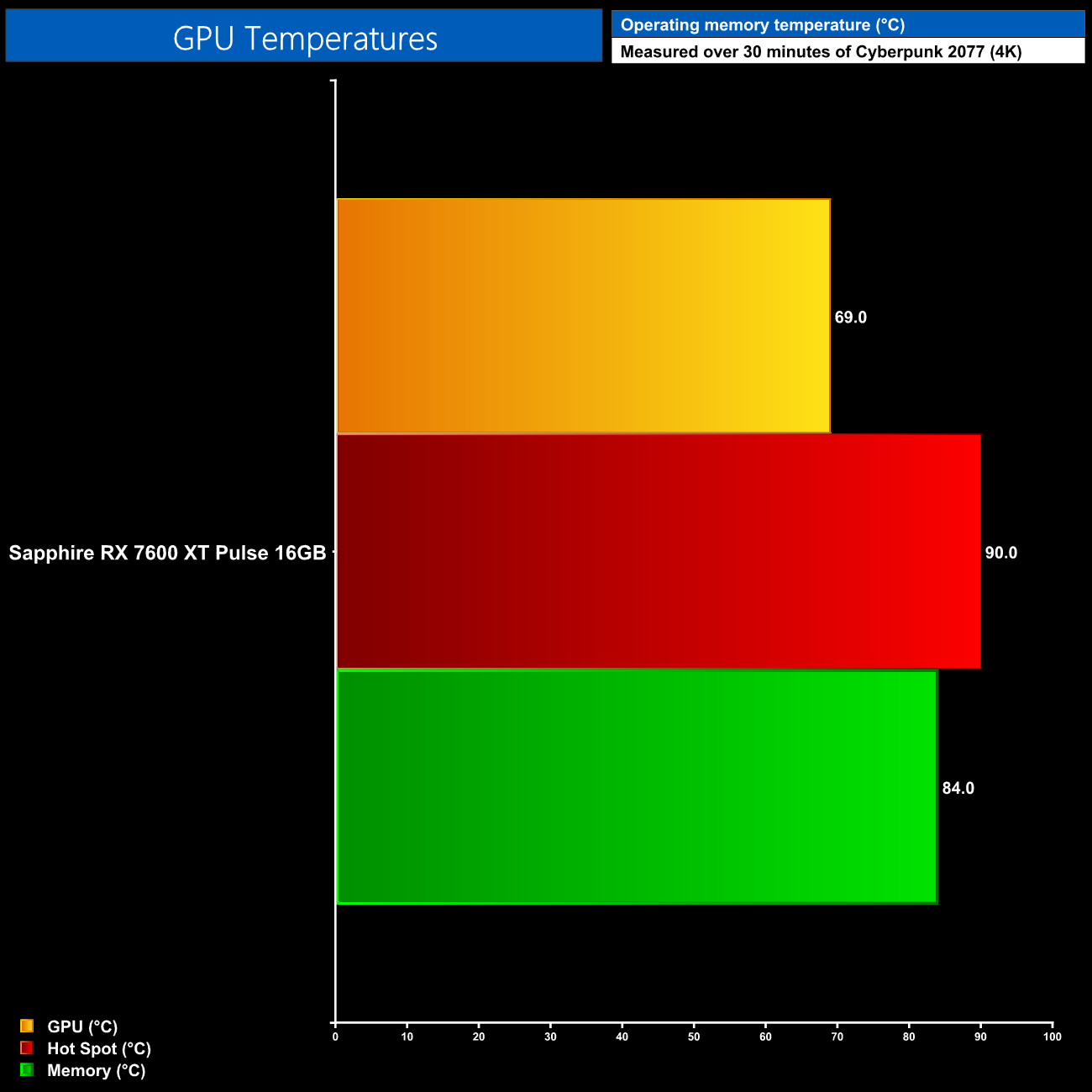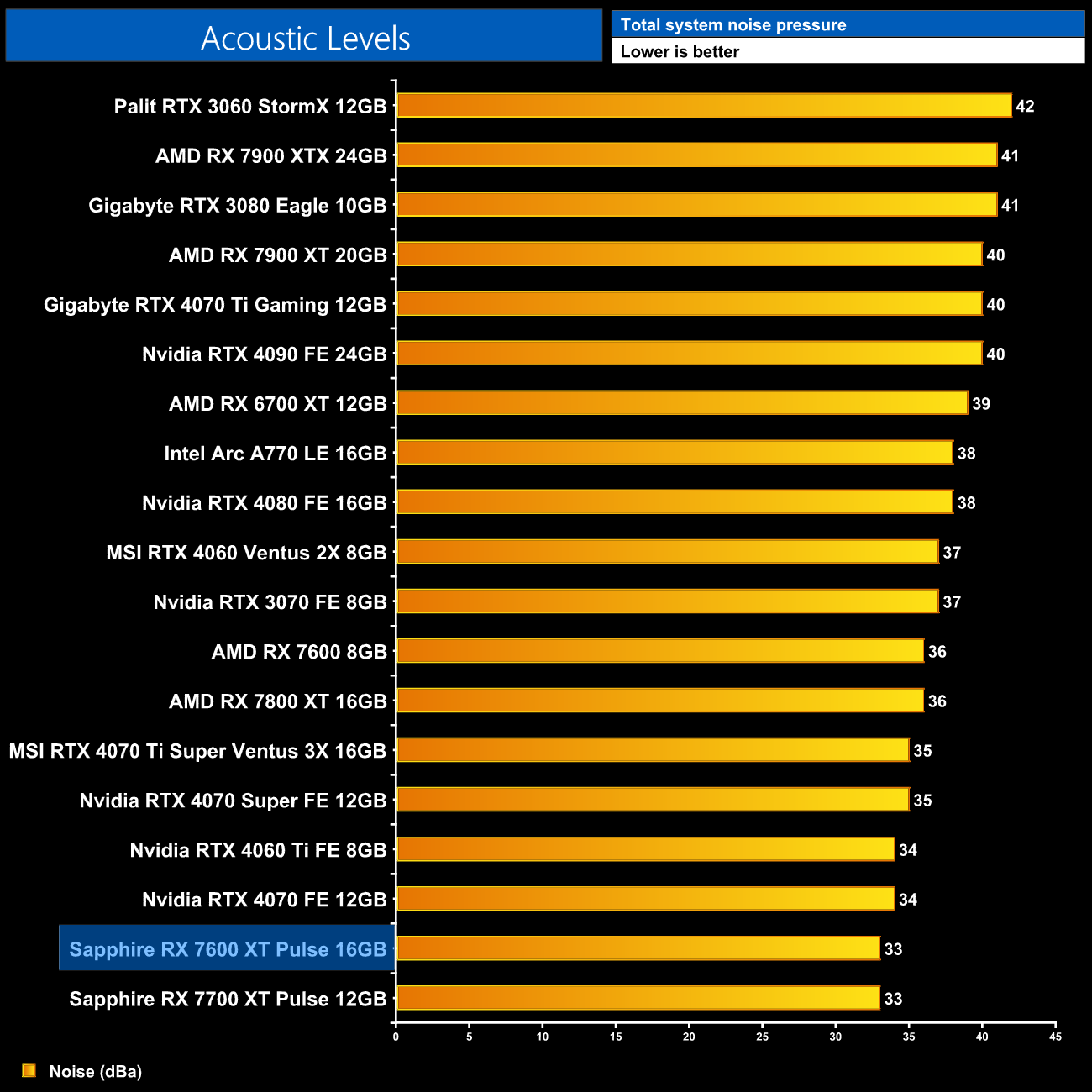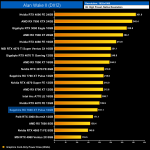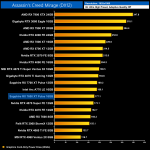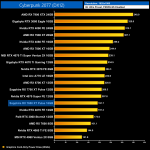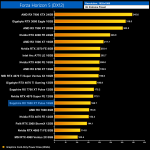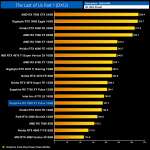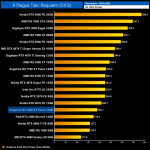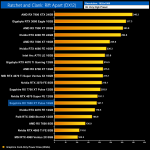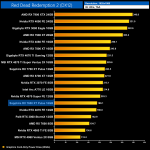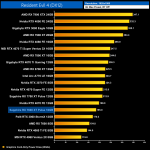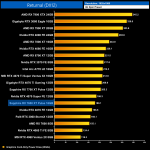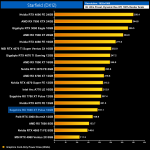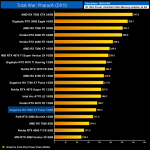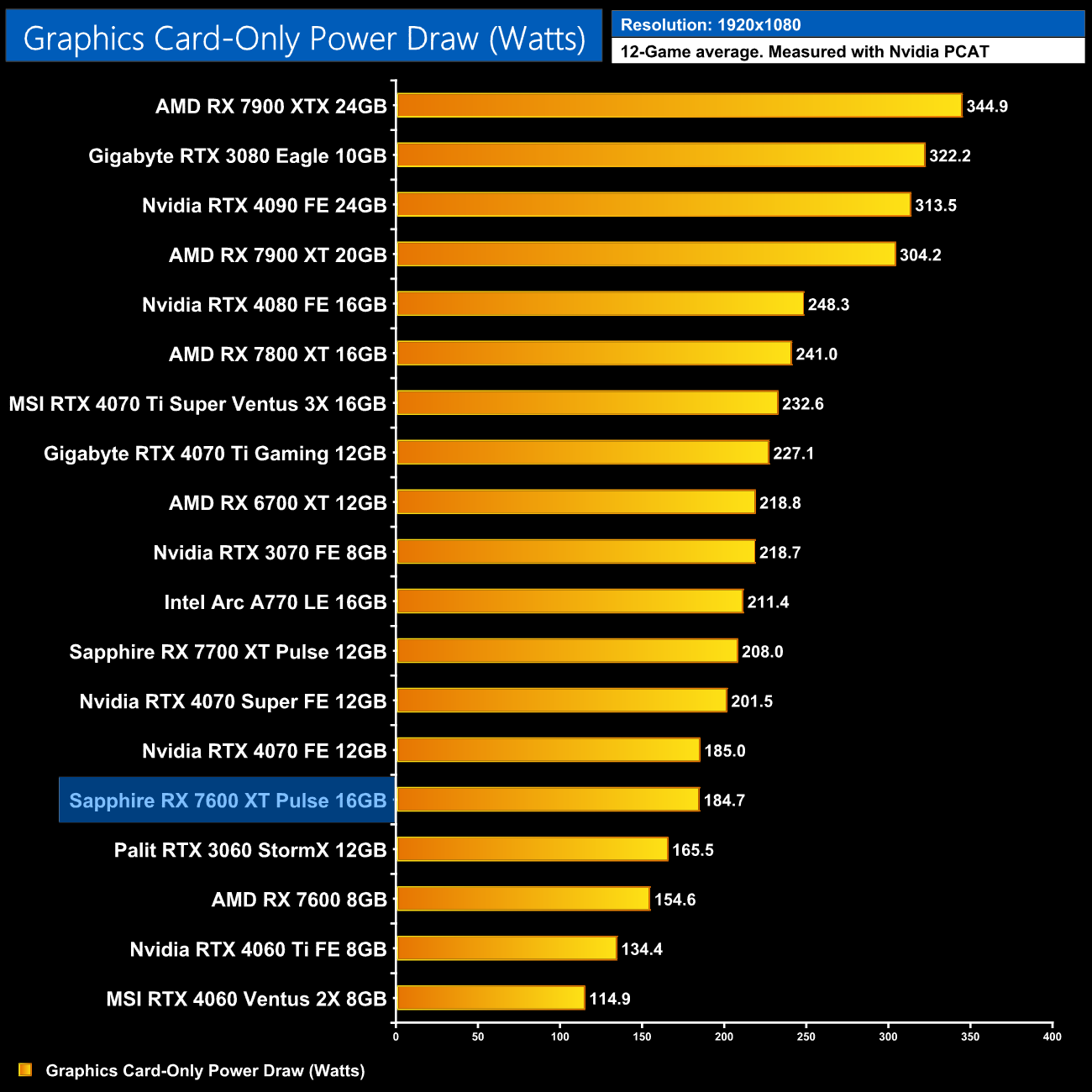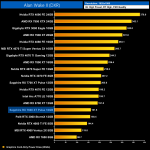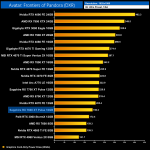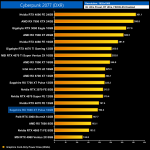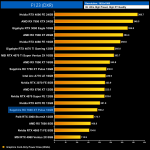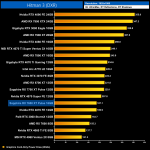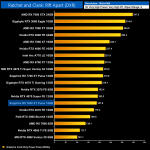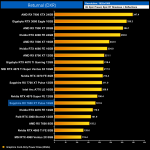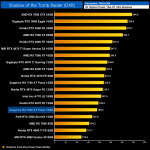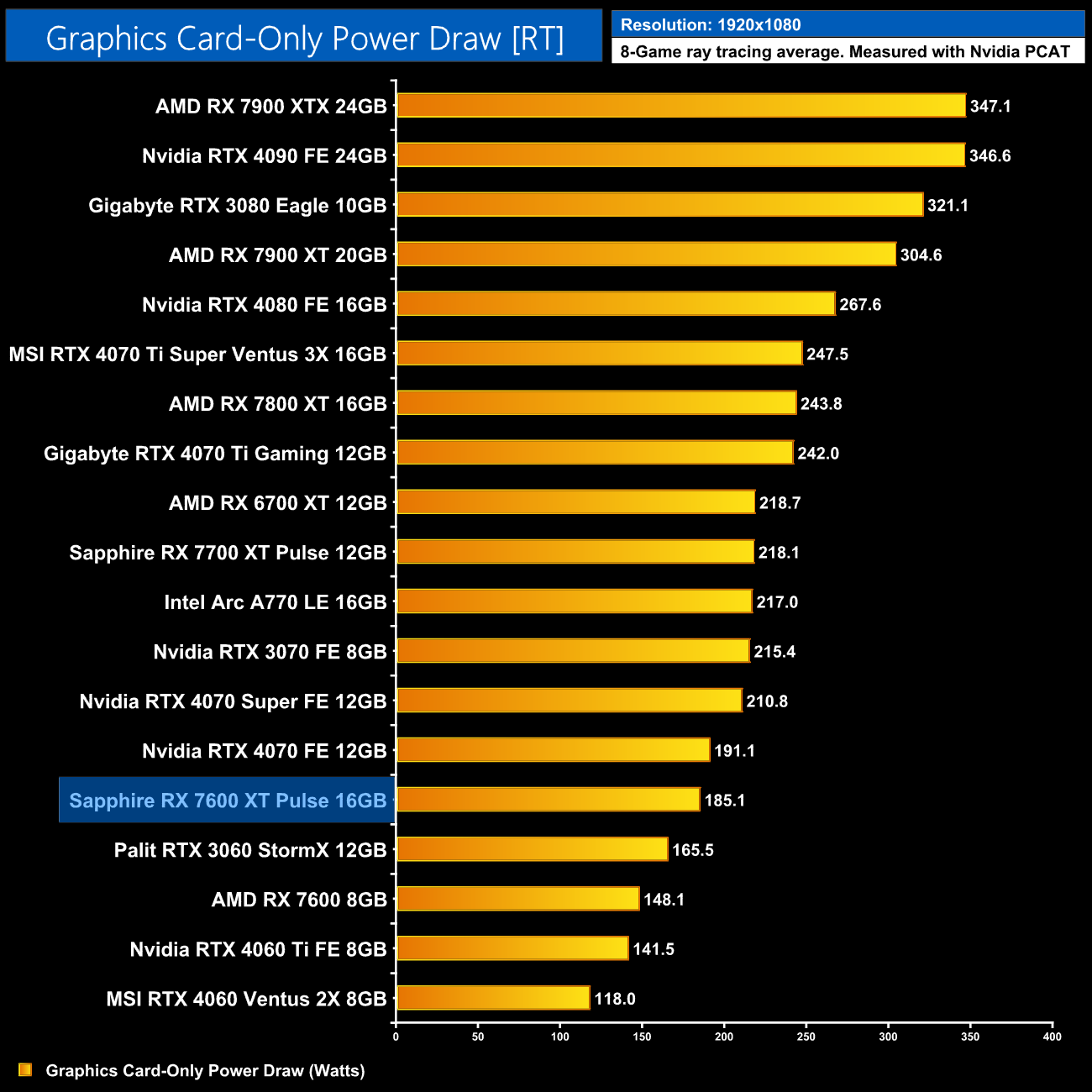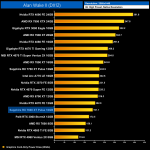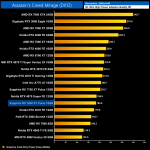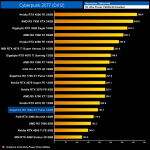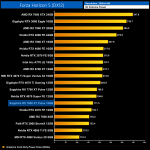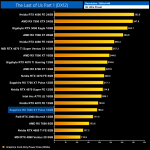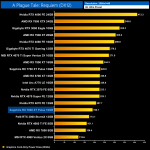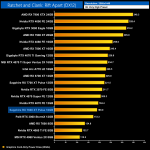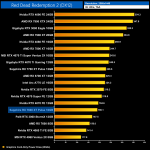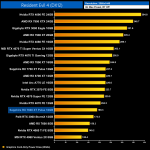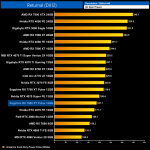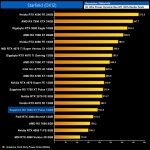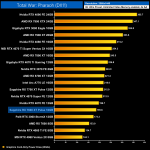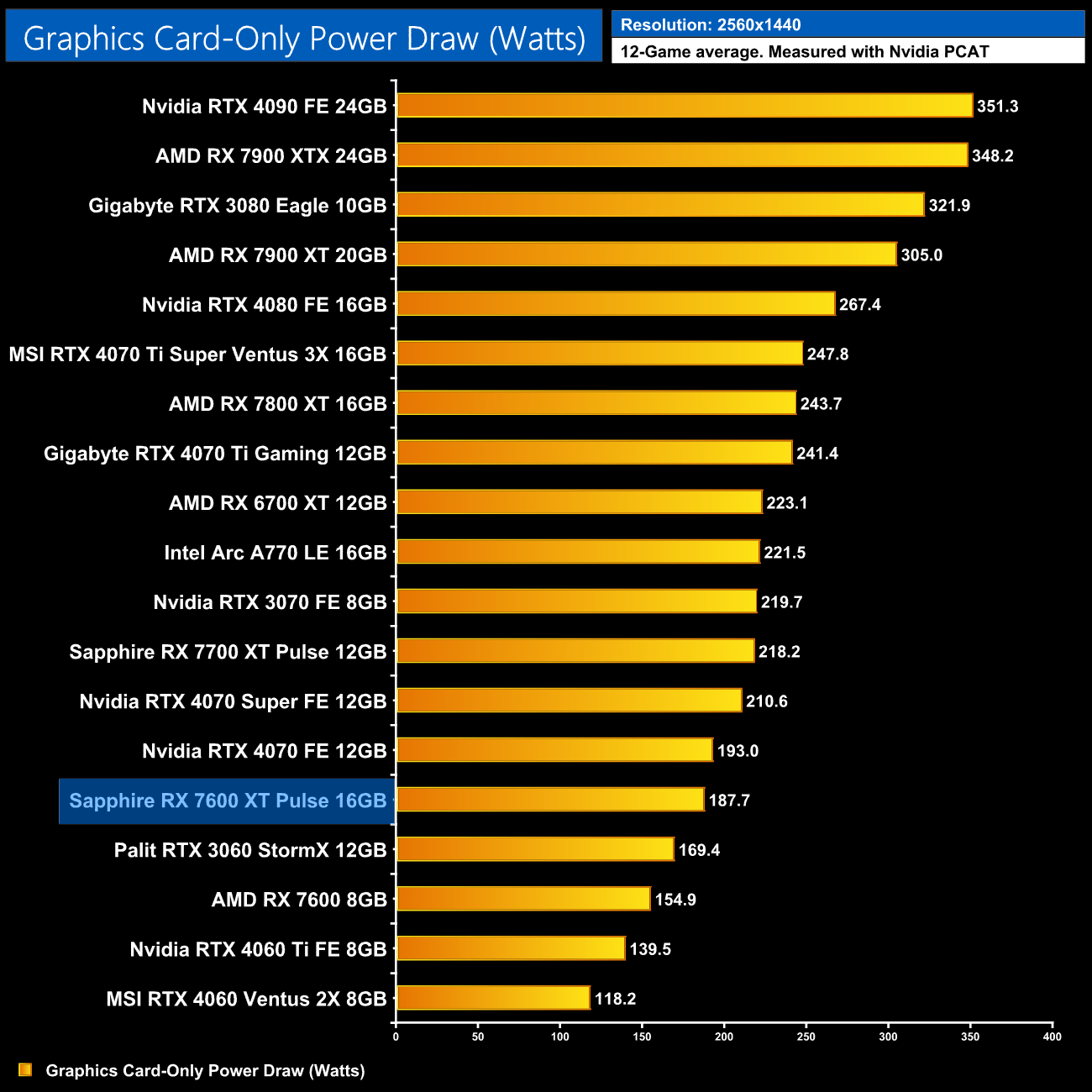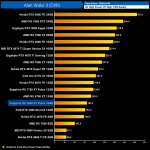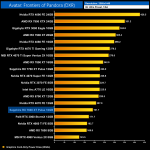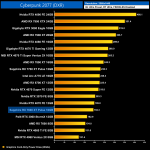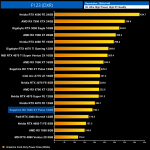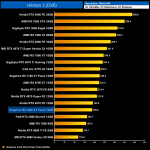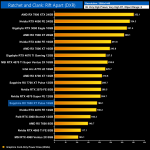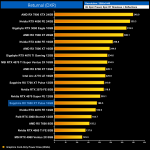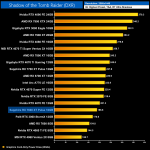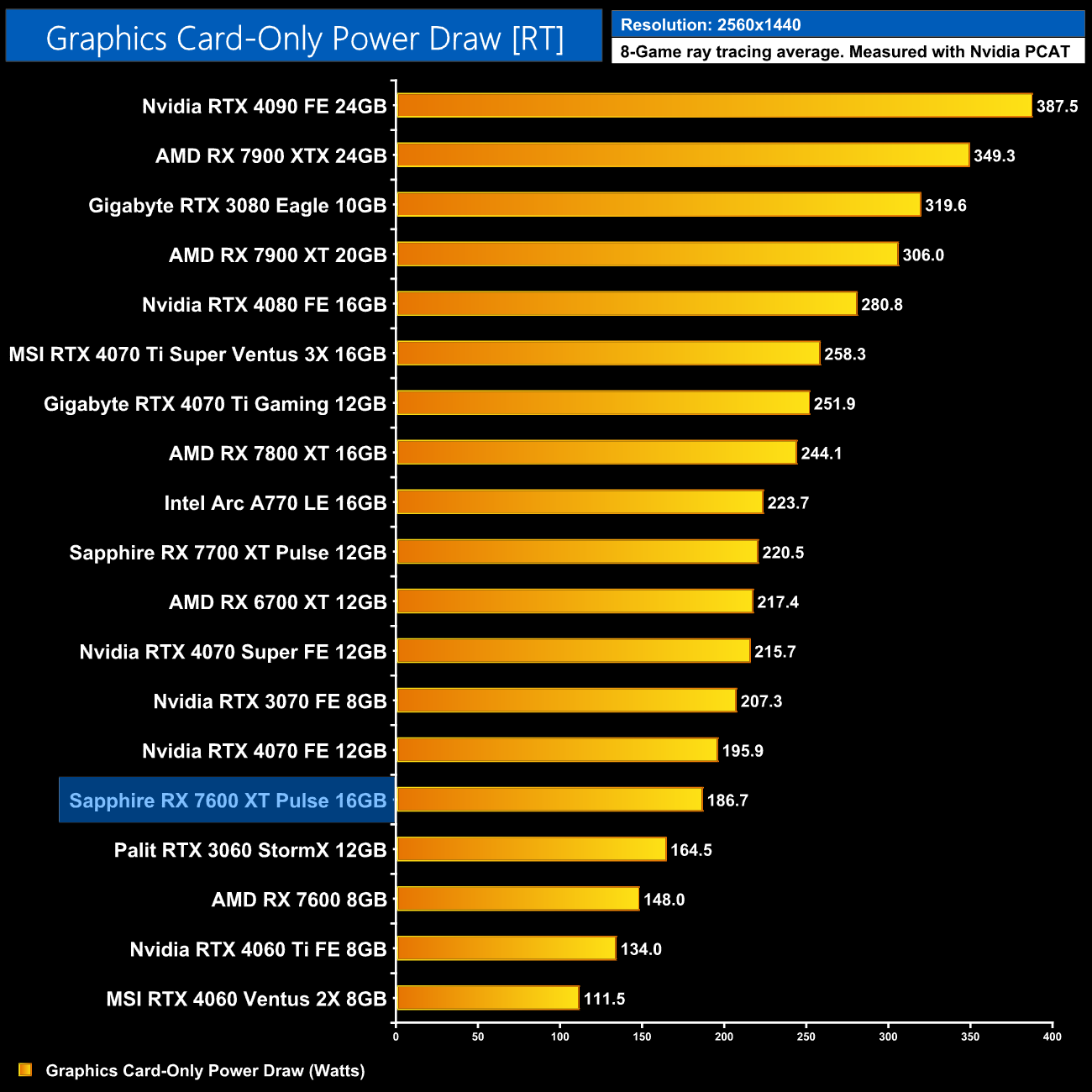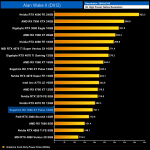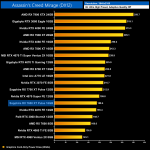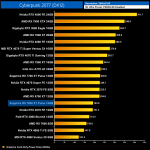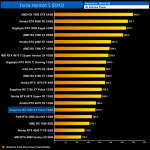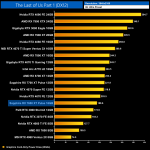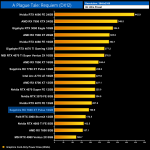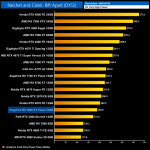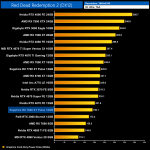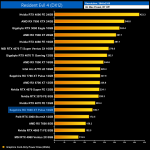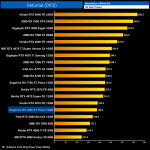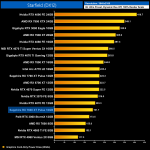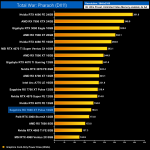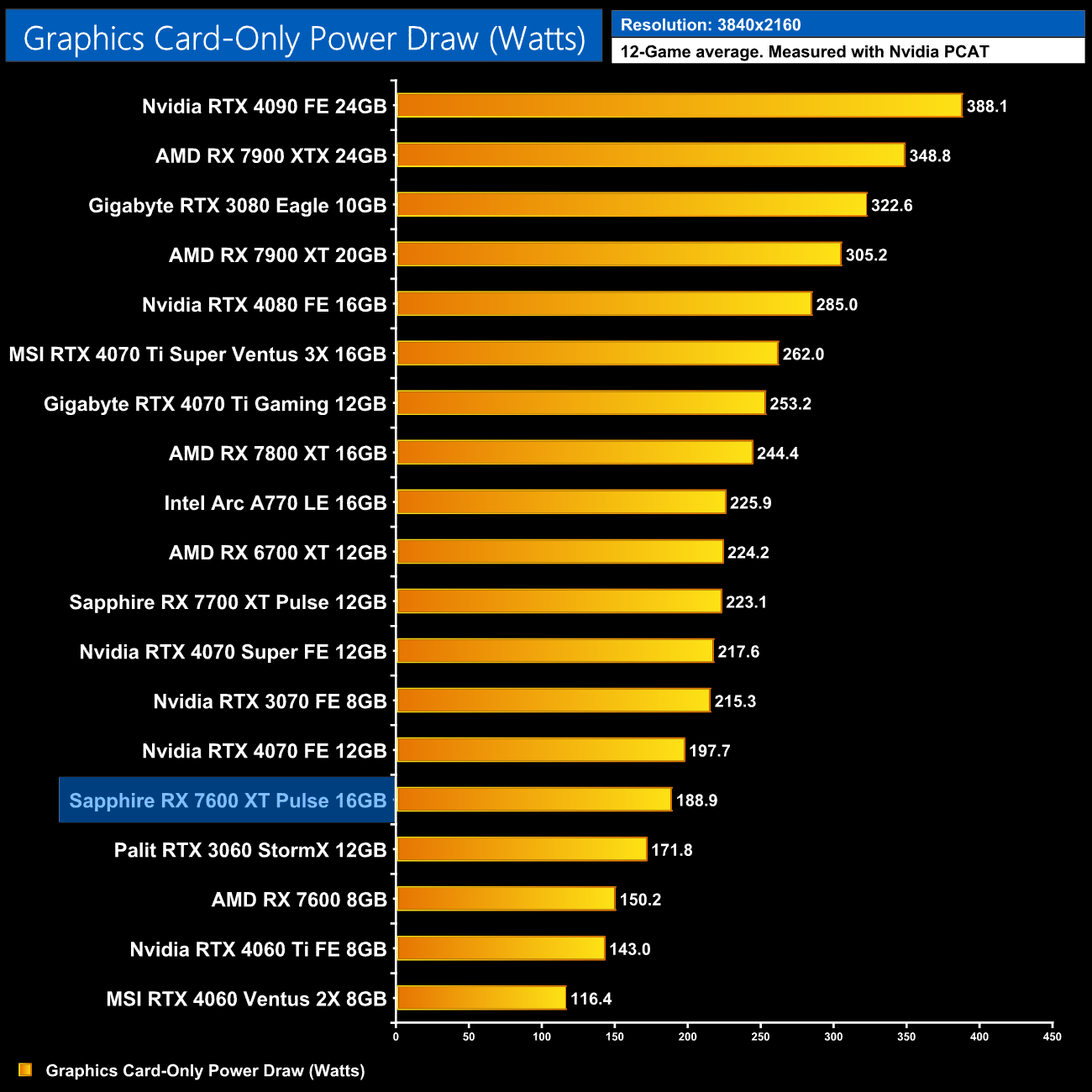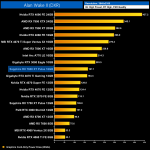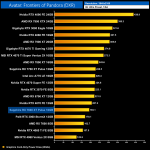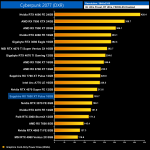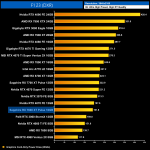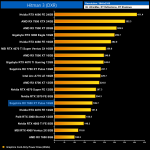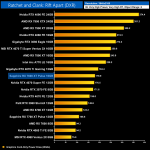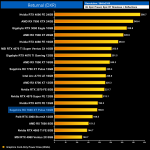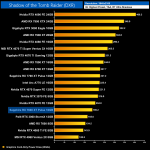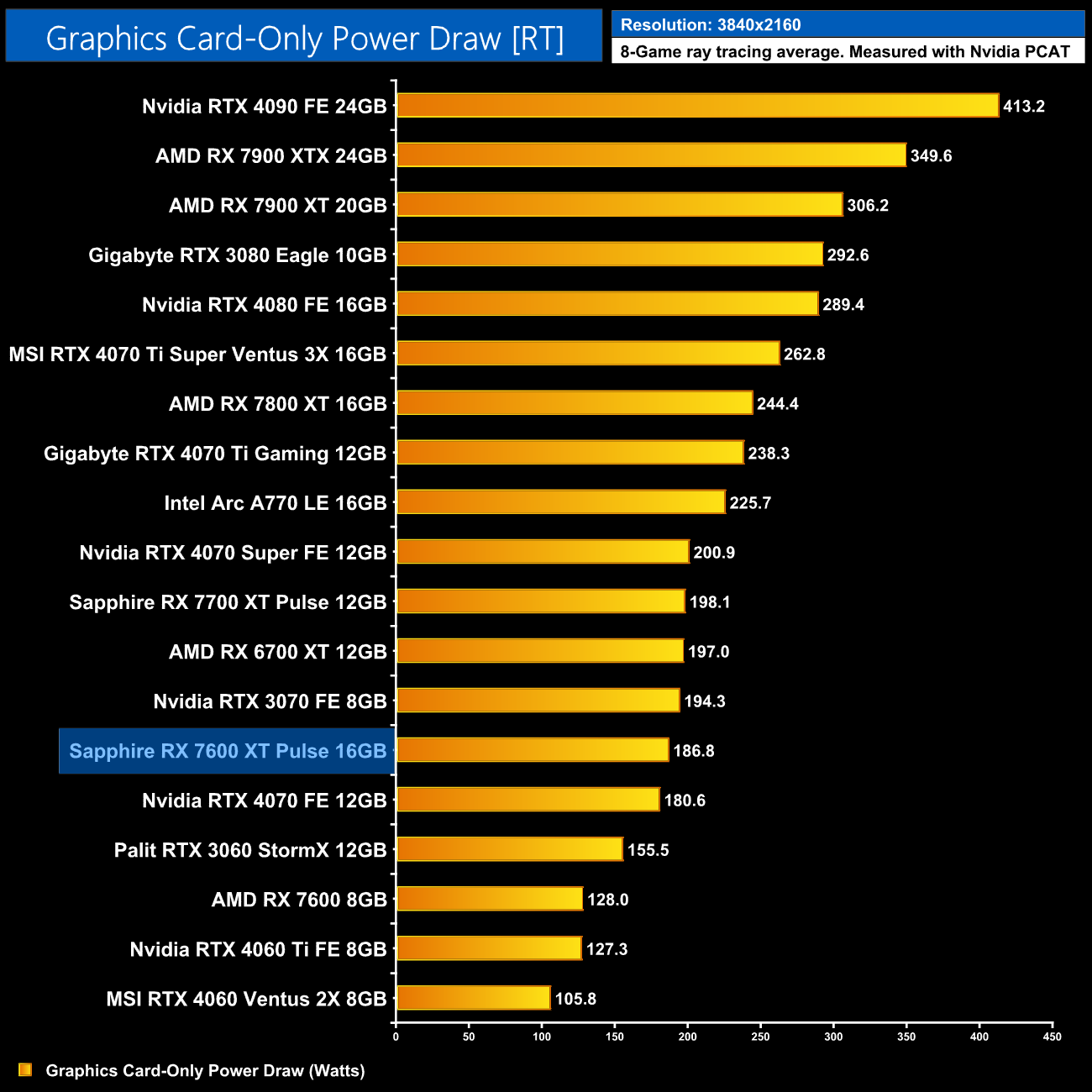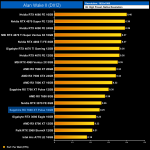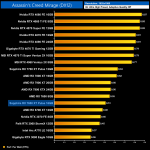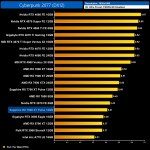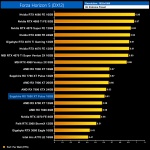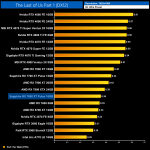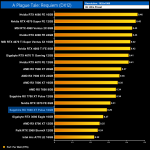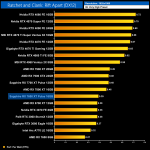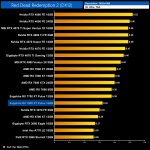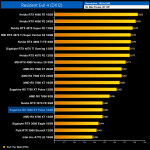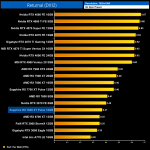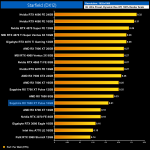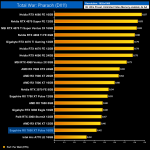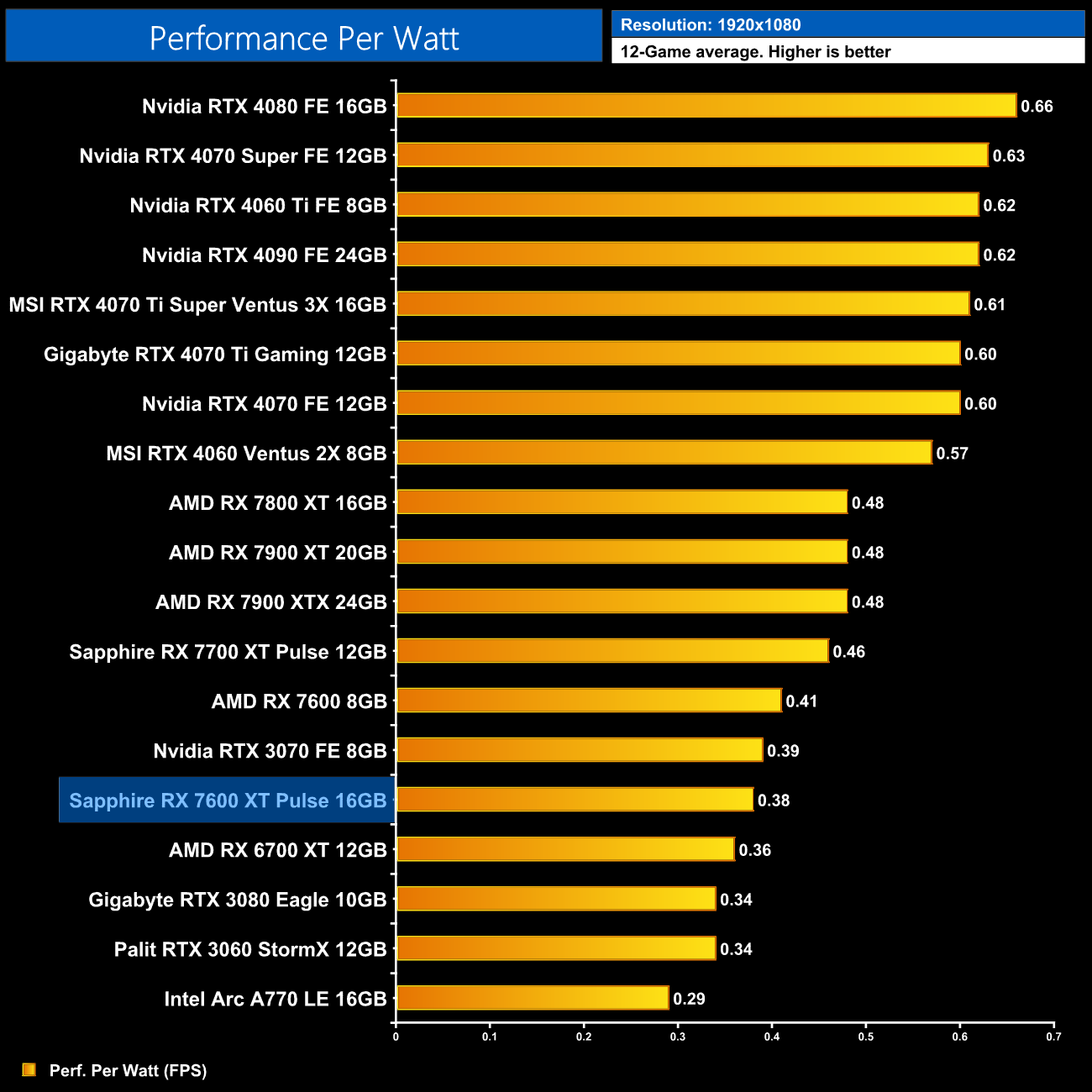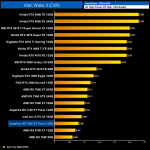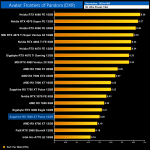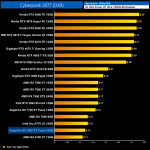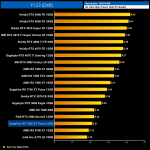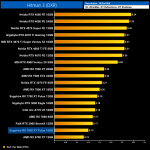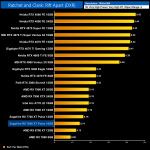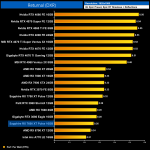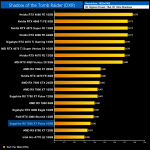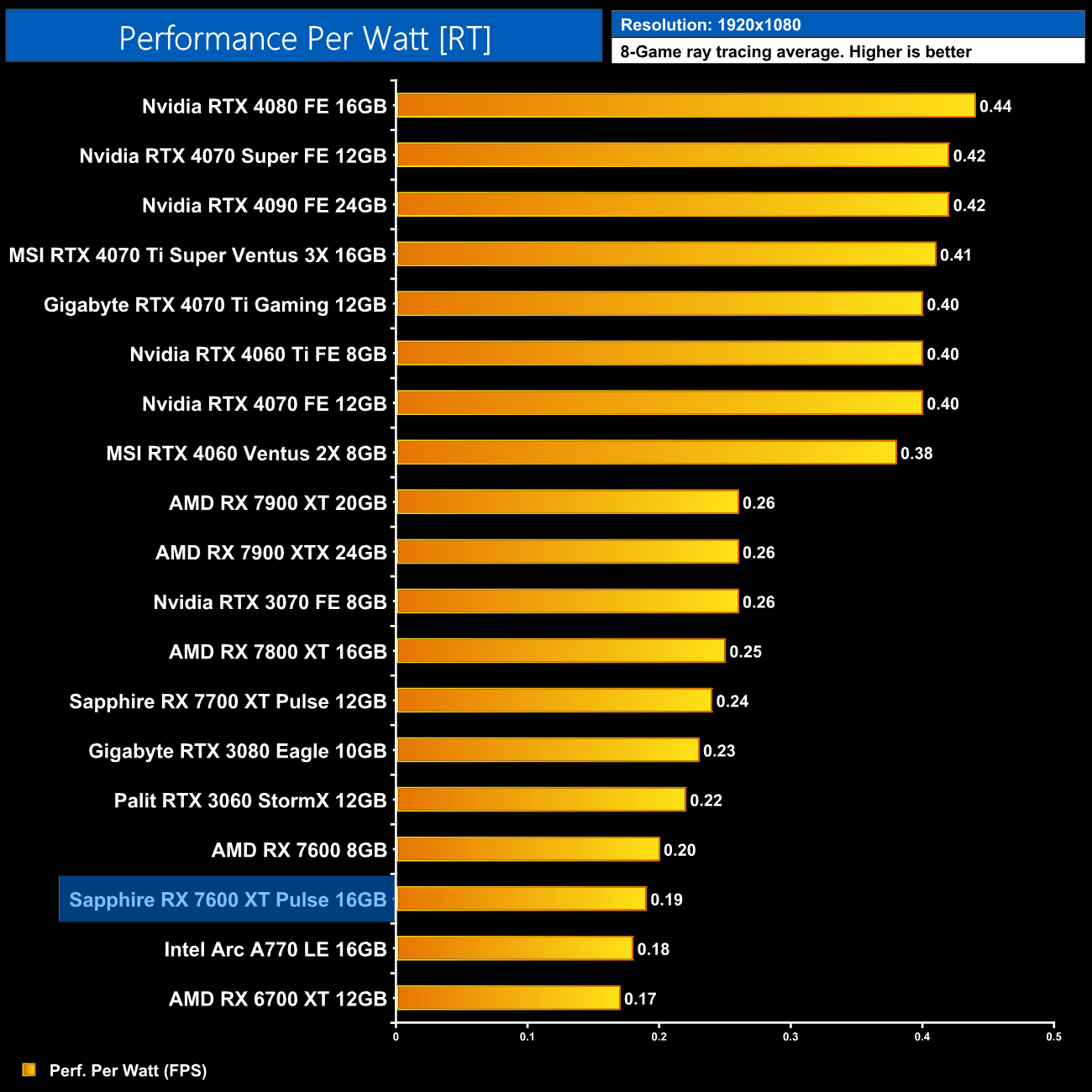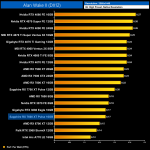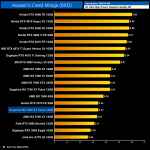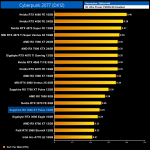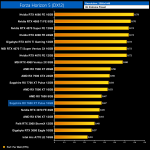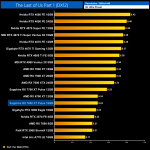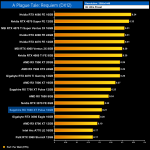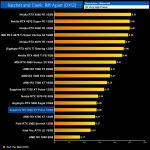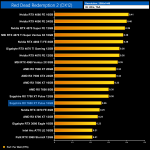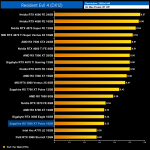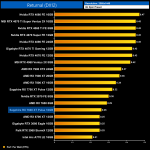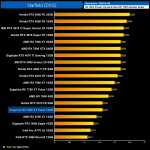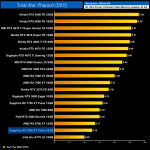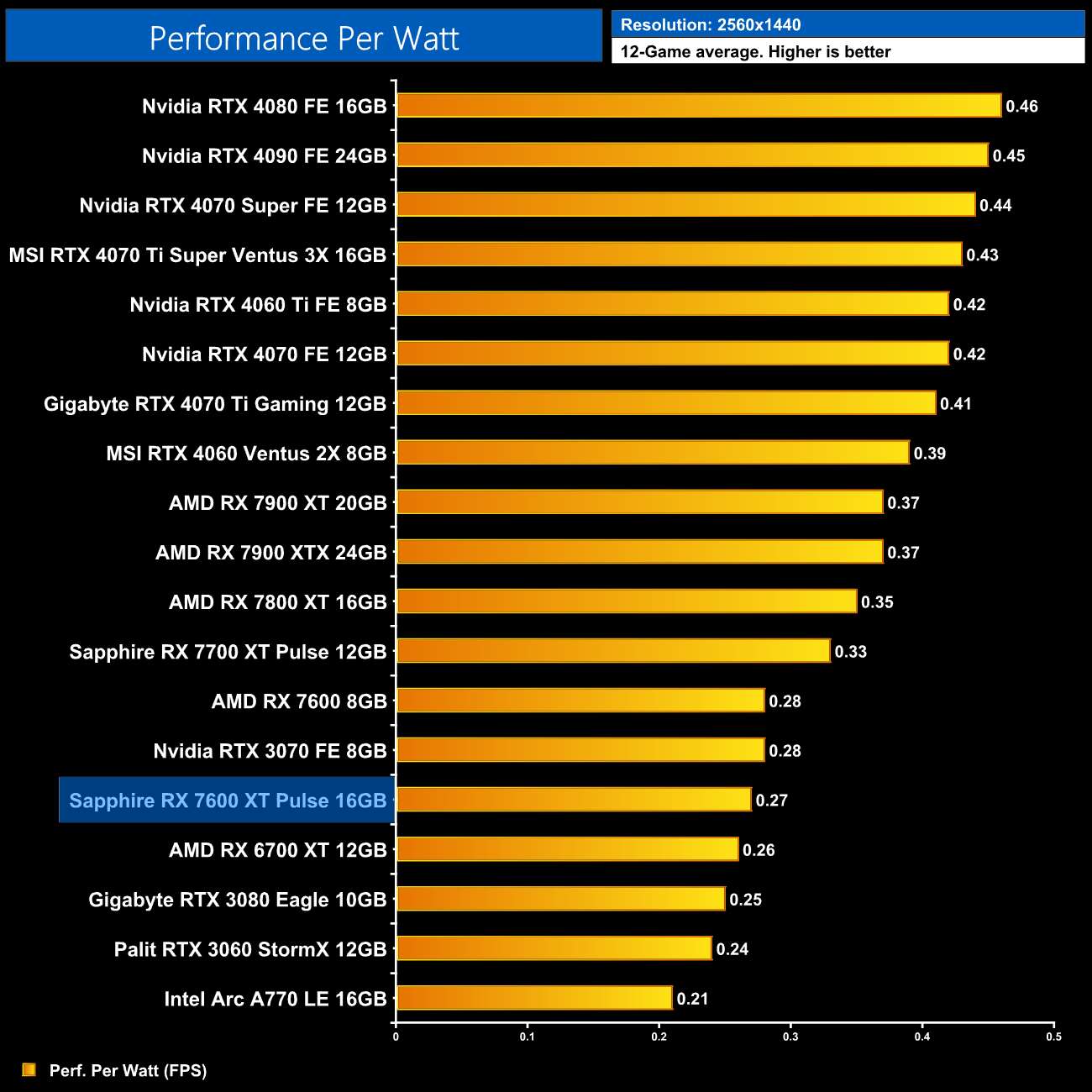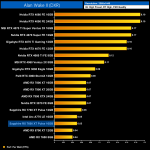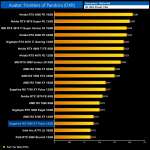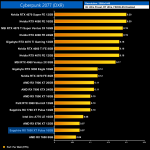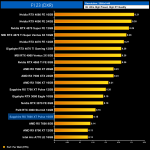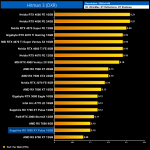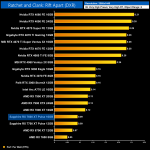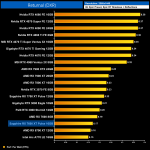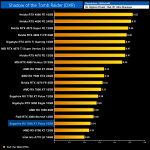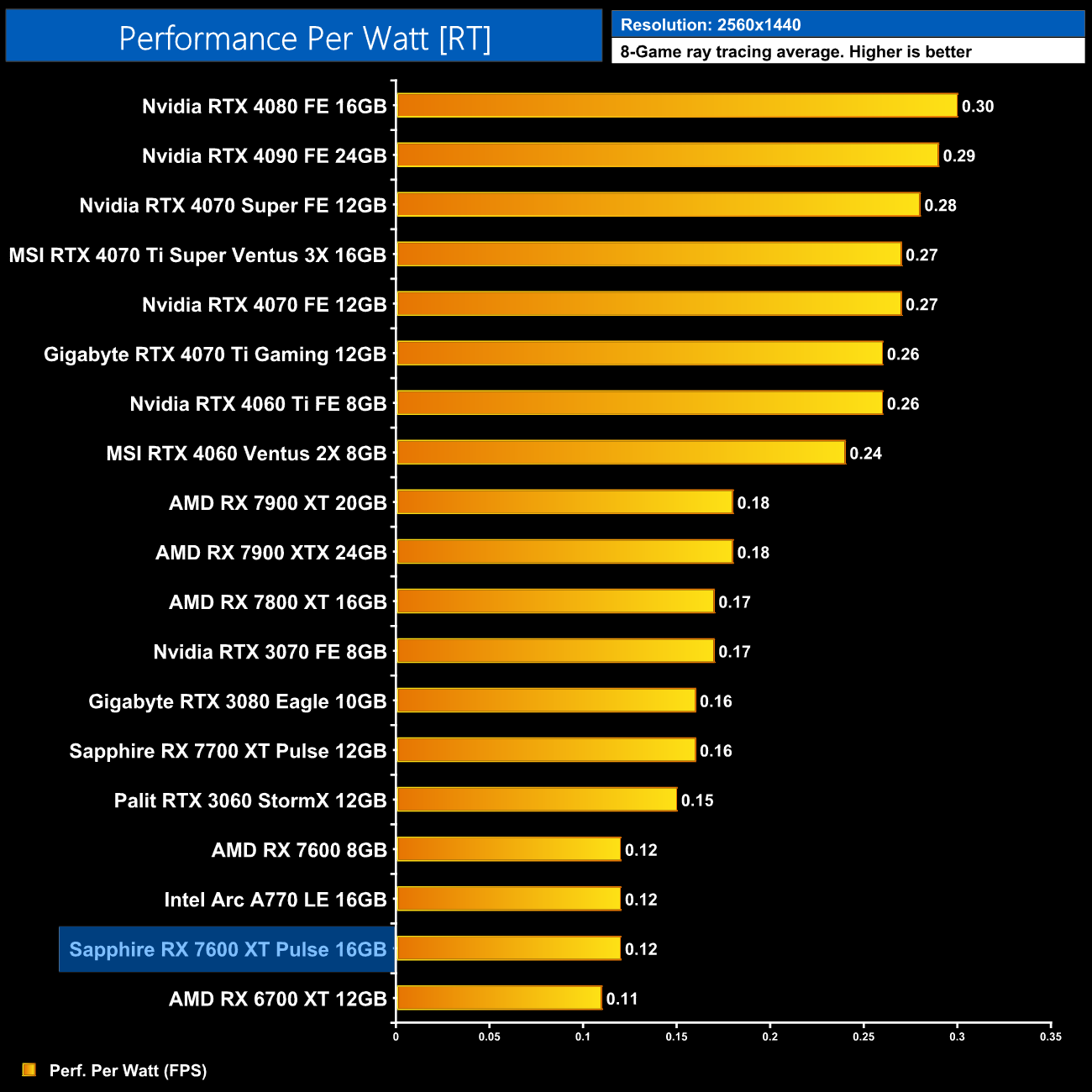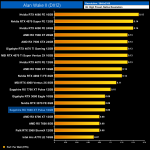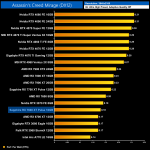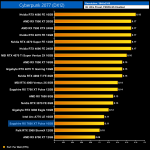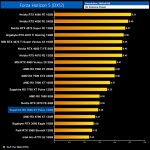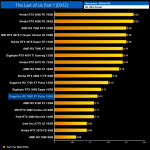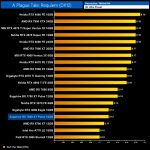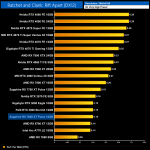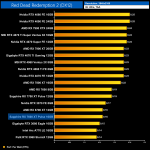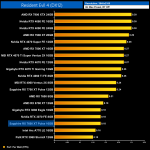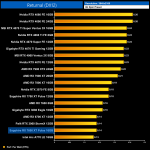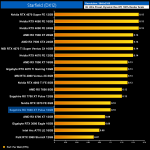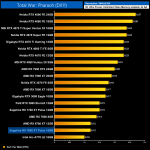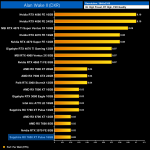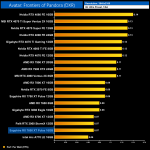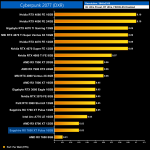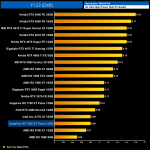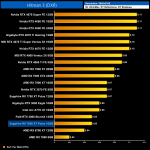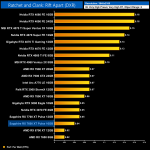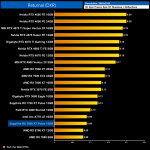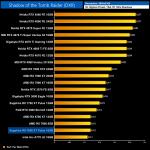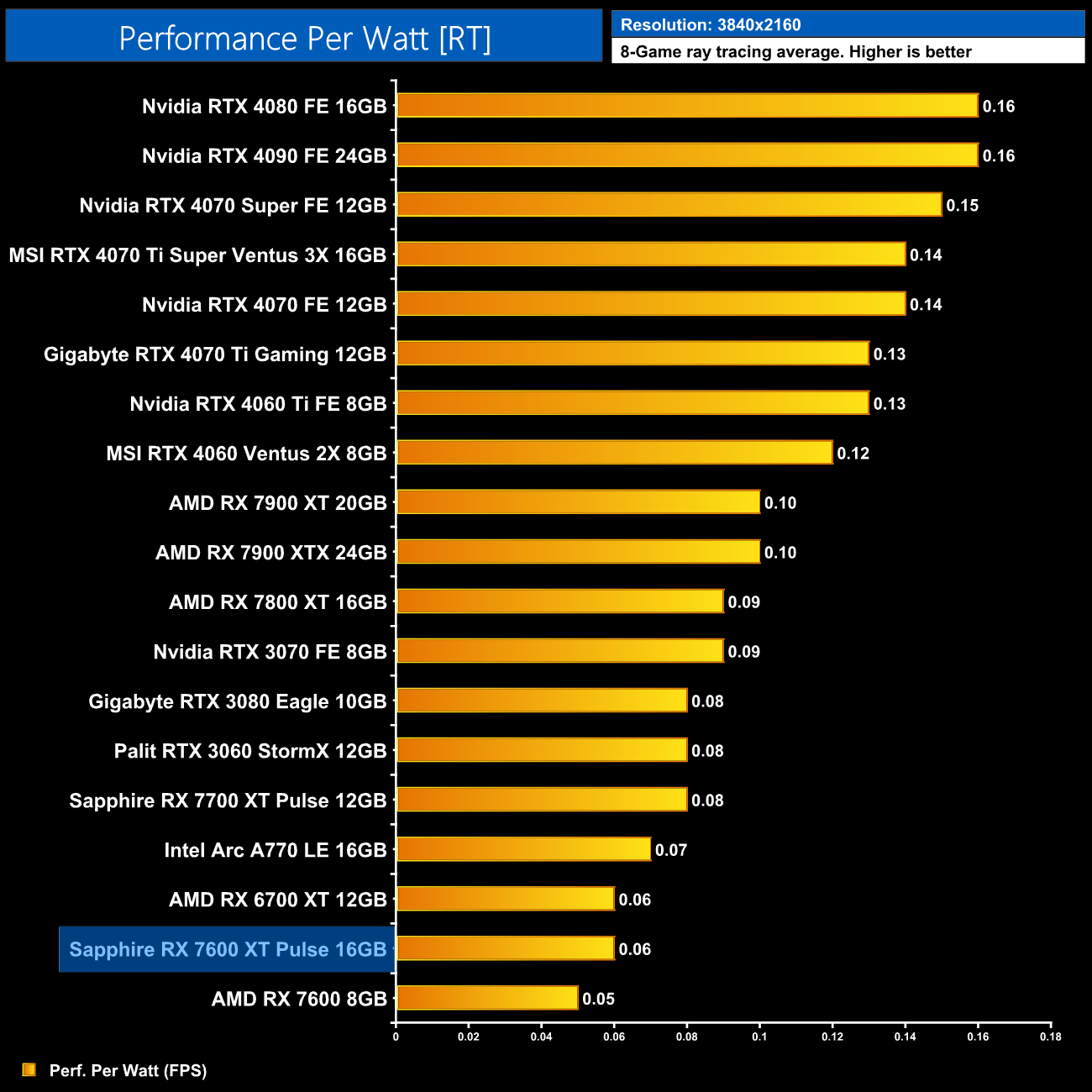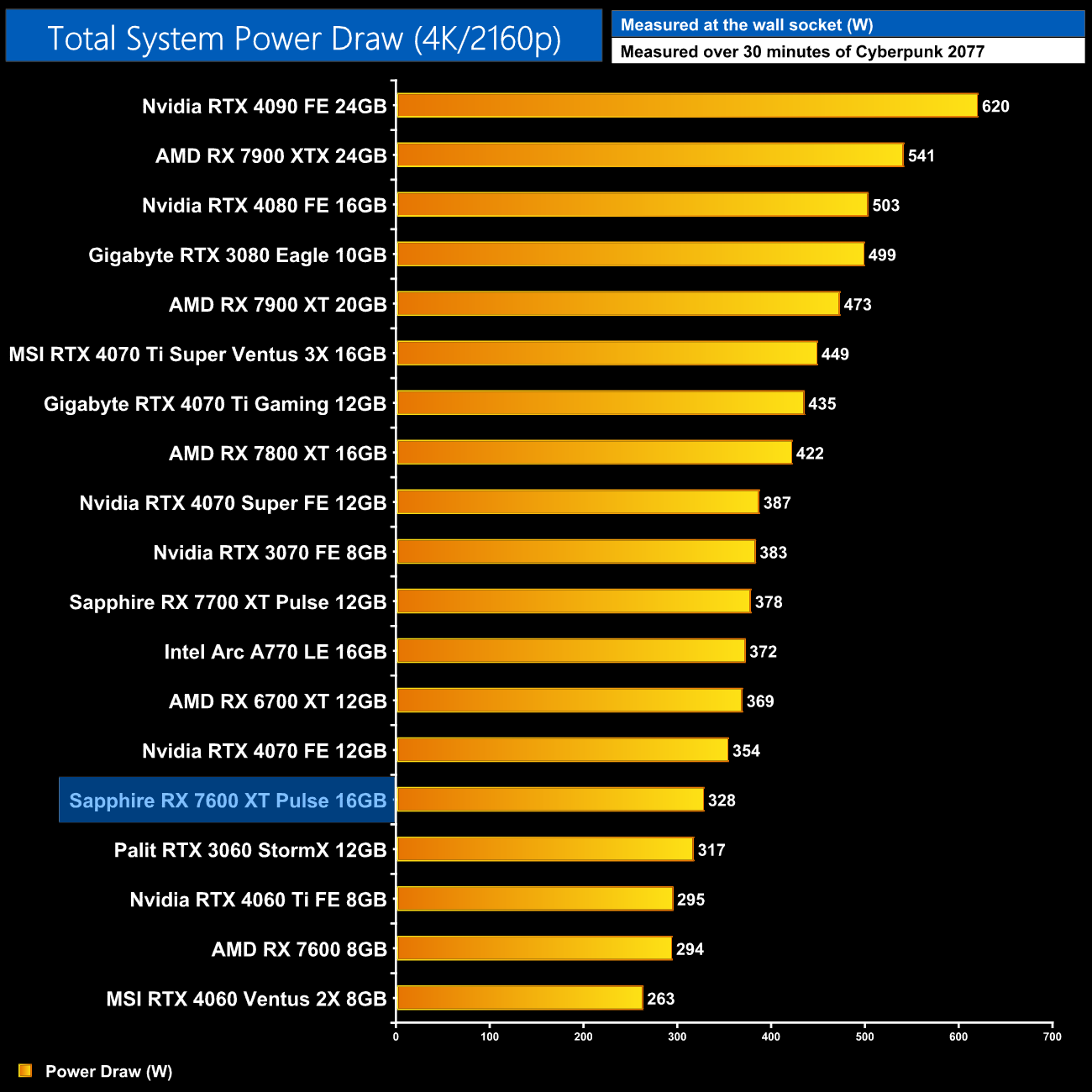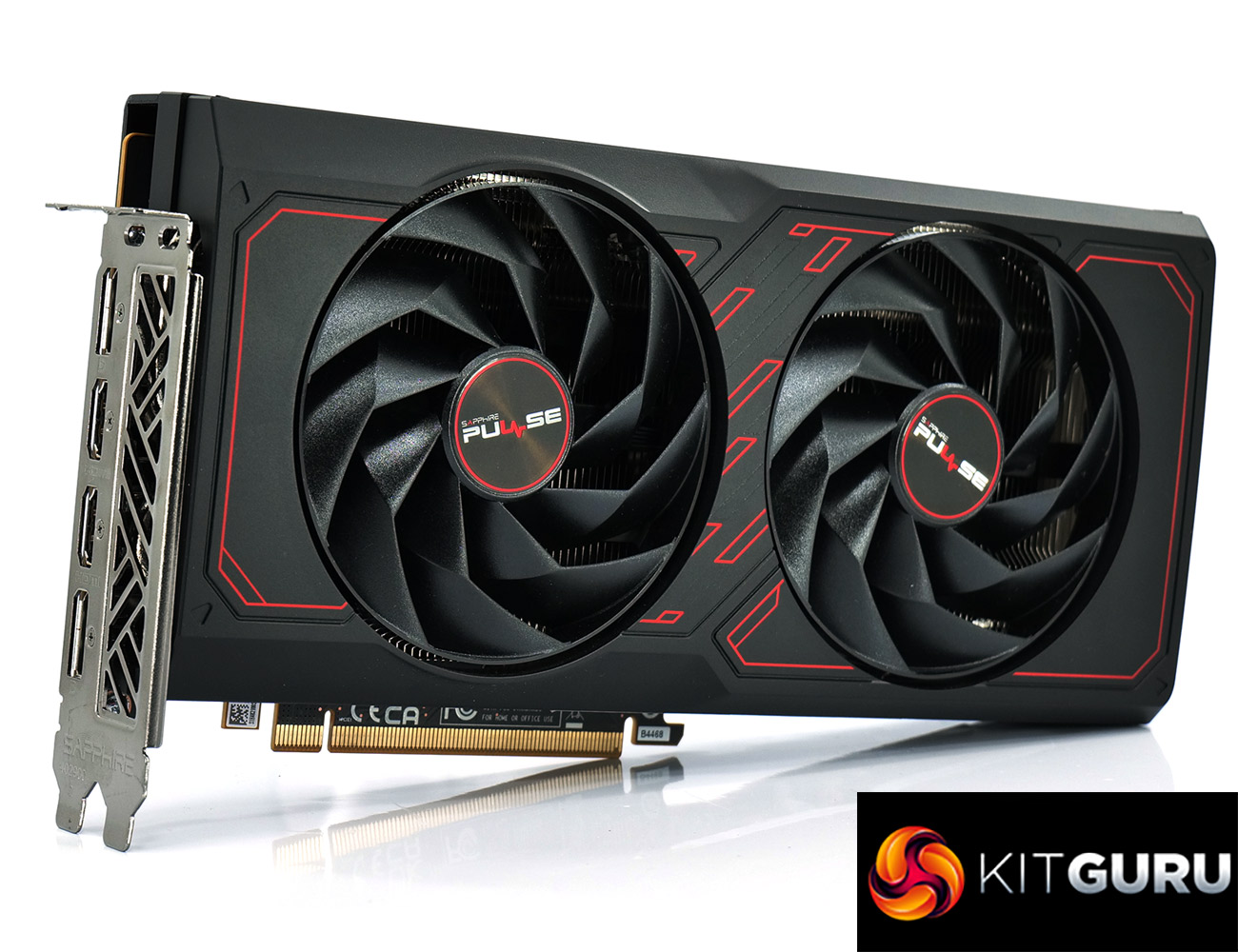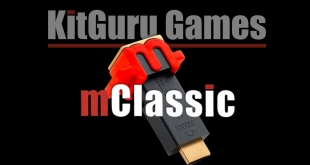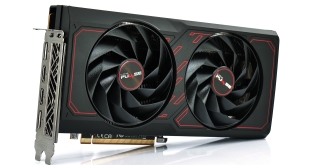
2024 feels like it's only just begun and we're already onto our third GPU launch in as many weeks. This time it's AMD's turn in the spotlight, as we put the recently announced RX 7600 XT through its paces. This graphics card is all about the VRAM, offering a 16GB framebuffer at a £310/$329 asking price. Today we find out what sort of performance is on offer, and whether or not it's worth paying extra for over the vanilla RX 7600.
If you missed the initial announcement at CES 2024, the AMD RX 7600 XT is very easy to summarise – it's basically an RX 7600 but with slightly higher clocks and double the VRAM. That means there's no change to the underlying silicon, you get the exact same number of cores, ROPS and so on. As a result, any differences in performance compared to the RX 7600 non-XT are purely as a result of the increased clock speeds and memory.
Still, in a landscape where 8GB GPU launches had a pretty tough ride last year, could the move to double the framebuffer be a welcome one? We put the Sapphire RX 7600 XT Pulse to the test in twelve games, plus another eight with ray tracing, to find out…
If you want to read this review as a single page, click HERE.
| RX 7900 XT | RX 7800 XT | RX 7700 XT | RX 7600 XT | RX 7600 | |
| Architecture | RDNA 3 | RDNA 3 | RDNA 3 | RDNA 3 | RDNA 3 |
| Manufacturing Process | 5nm GCD + 6nm MCD | 5nm GCD + 6nm MCD | 5nm GCD + 6nm MCD | 6nm | 6nm |
| Transistor Count | 57.7 billion | 28.1 billion | 28.1 billion | 13.3 billion | 13.3 billion |
| Die Size | 300 mm² GCD
220 mm² MCD |
200 mm² GCD
150 mm² MCD |
200 mm² GCD
150 mm² MCD |
204 mm² | 204 mm² |
| Compute Units | 84 | 60 | 54 | 32 | 32 |
| Ray Accelerators | 84 | 60 | 54 | 32 | 32 |
| Stream Processors | 5376 | 3840 | 3456 | 2048 | 2048 |
| Game GPU Clock | Up to 2000 MHz | 2124 MHz | 2171 MHz | 2470 MHz | 2250 MHz |
| Boost GPU Clock | Up to 2400 MHz | Up to 2430 MHz | Up to 2544 MHz | Up to 2755 MHz | Up to 2625 MHz |
| ROPs | 192 | 96 | 96 | 64 | 64 |
| AMD Infinity Cache | 80MB | 64MB | 48MB | 32MB | 32MB |
| Memory | 20GB GDDR6 | 16GB GDDR6 | 12GB GDDR6 | 16GB GDDR6 | 8GB GDDR6 |
| Memory Data Rate | 20Gbps | 19.5 Gbps | 18Gbps | 18Gbps | 18Gbps |
| Memory Bandwidth | 800 GB/s | 624 GB/s | 432 GB/s | 288 GB/s | 288 GB/s |
| Memory Interface | 320-bit | 256-bit | 192-bit | 128-bit | 128-bit |
| Board Power | 315W | 263W | 245W | 190W | 165W |
First, let's take a quick look at the specs. Just like the RX 7600, the 7600 XT uses the monolithic Navi 33 die, fabbed on makes TSMC's 6nm node, with a 204 mm² die size. It's the exact same configuration, too. Navi 33 packs in 32 Compute Units, each of which houses 64 Stream Processors, for a total of 2048 shaders. There's also 32 Ray Accelerators – one per CU – and 64 ROPs.
Clock speed is the first real change compared to the RX 7600, as the 7600 XT sees a roughly 10% higher game clock, rated at 2470 MHz, while there's a boost clock of 2755 MHz. The Sapphire Pulse model I am reviewing today has pushed this slightly higher too, with a rated 2810 MHz boost clock.
Meanwhile, the memory sub-system is almost identical to the previous generation RX 6600. We still find a 128-bit interface, with memory that clocks in at 18Gbps, resulting in memory bandwidth of 288 GB/s, though AMD claims an ‘effective' bandwidth of 476.9 GB/s due to the 32MB of 2nd Gen Infinity cache. The key change is of course that the amount of VRAM has now doubled, with the RX 7600 XT outfitted with 16GB.
As with Navi 23, Navi 33 also features a cut-down PCIe interface, offering a Gen4 x8 connection.
Power draw for the RX 7600 XT is the final change over the RX 7600, as it is now rated at 190W Total Board Power (TBP), an increase from the 165W figure of the RX 7600. We are using our updated GPU power testing methodology in this review, so read on for our most detailed power and efficiency testing yet.
The Sapphire RX 7600 XT Pulse ships in a colourful box, with prominent AMD Radeon branding. On the back, Sapphire highlights various key specs and AMD features.
Inside, the only included accessory is a small quick start guide.
As for the card itself, you'd be forgiven for thinking it was identical to the RX 7600 Pulse that we reviewed last May. The design language is the same between the two, so we get a very similar black plastic shroud with some red accents.
The 7600 XT Pulse is bigger however, and also features an updated fan blade design, utilising Sapphire's Angular Velocity approach, with each fan measuring 100mm in diameter.
In terms of its size, it measures in at 250 x 129.25 x 44.56 (mm), while it weighed in at 796 grams on my scales.
The front side of the card is home to both the Sapphire and Radeon logos, though do note there isn't any RGB on this card.
It's great to see a metal backplate though, finished with the Pulse's signature ECG design, while there's a small cutout at the end of the card to allow some air to pass directly through the heatsink.
Power is supplied by two 8-pin PCIe connectors, which does feel slightly excessive given the 190W TBP requirement. Lastly, we can see display outputs consist of 2x DisplayPort 2.1 and 2x HDMI 2.1 ports.
Driver Notes
- AMD GPUs (except RX 7600 XT) were benchmarked with the Adrenalin 23.12.1 driver.
- Nvidia GPUs (except RTX 4070 Super) were benchmarked with the 546.33 driver.
- RTX 4070 Super was benchmarked with the 546.52 driver supplied to press.
- RTX 4070 Ti Super was benchmarked with the 551.15 driver supplied to press.
- Intel GPUs were benchmarked with the 31.0.101.5085 driver.
Result are only directly comparable where this exact configuration has been used.
Test System:
We test using a custom built system from PCSpecialist, based on Intel’s Rocket Lake platform. You can read more about this system HERE and configure your own PCSpecialist system HERE.
| CPU |
Intel Core i9-13900KS
|
| Motherboard |
Gigabyte Z790 Gaming X AX
|
| Memory |
32GB (2x16GB) Corsair Dominator Platinum RGB DDR5 6000MHz
|
| Graphics Card |
Varies
|
| SSD |
4TB Seagate Firecuda 530 Gen 4 PCIe NVMe
|
| Chassis | Corsair 5000D Airflow Tempered Glass Gaming Case |
| CPU Cooler |
Corsair iCUE H150i Elite RGB High Performance CPU Cooler
|
| Power Supply |
Corsair 1600W Pro Series Titanium AX1600i Digital Modular PSU
|
| Operating System |
Windows 11 23H2
|
| Monitor |
MSI Optix MPG321UR-QD
|
| Resizable BAR |
Enabled for all supported GPUs
|
Comparison Graphics Cards List
- AMD RX 7900 XTX 24GB
- AMD RX 7900 XT 20GB
- AMD RX 7800 XT 16GB
- Sapphire RX 7700 XT Pulse 12GB
- AMD RX 7600 8GB
- AMD RX 6700 XT 12GB
- Nvidia RTX 4090 FE 24GB
- Nvidia RTX 4080 FE 16GB
- MSI RTX 4070 Ti Super Ventus 3X 16GB
- Gigabyte RTX 4070 Ti Gaming 12GB
- Nvidia RTX 4070 FE 12GB
- Nvidia RTX 4060 Ti FE 8GB
- MSI RTX 4060 Ventus 2X 8GB
- Gigabyte RTX 3080 Eagle 10GB
- Nvidia RTX 3070 FE 8GB
- Palit RTX 3060 StormX 12GB
- Intel Arc A770 LE 16GB
All cards were tested at reference specifications.
Software and Games List
- 3DMark Fire Strike & Fire Strike Ultra (DX11 Synthetic)
- 3DMark Time Spy (DX12 Synthetic)
- 3DMark DirectX Raytracing feature test (DXR Synthetic)
- Alan Wake II (DX12)
- Assassin's Creed Mirage (DX12)
- Avatar: Frontiers of Pandora (DX12)
- Cyberpunk 2077 (DX12)
- F1 23 (DX12)
- Forza Horizon 5 (DX12)
- Hitman 3 (DX12)
- The Last of Us Part 1 (DX12)
- Marvel's Spider-Man Remastered (DX12)
- A Plague Tale: Requiem (DX12)
- Ratchet and Clank: Rift Apart (DX12)
- Red Dead Redemption 2 (DX12)
- Resident Evil 4 (DX12)
- Returnal (DX12)
- Shadow of the Tomb Raider (DX12)
- Starfield (DX12)
- Total War: Pharaoh (DX11)
We run each benchmark/game three times, and present mean averages in our graphs. We use FrameView to measure average frame rates as well as 1% low values (99th percentile) across our three runs.
Fire Strike is a showcase DirectX 11 benchmark for modern gaming PCs. Its ambitious real-time graphics are rendered with detail and complexity far beyond other DirectX 11 benchmarks and games. Fire Strike includes two graphics tests, a physics test and a combined test that stresses the CPU and GPU. (UL).
3DMark Time Spy is a DirectX 12 benchmark test for Windows 10 gaming PCs. Time Spy is one of the first DirectX 12 apps to be built the right way from the ground up to fully realize the performance gains that the new API offers. With its pure DirectX 12 engine, which supports new API features like asynchronous compute, explicit multi-adapter, and multi-threading, Time Spy is the ideal test for benchmarking the latest graphics cards. (UL).
Initial 3DMark benchmarks show a muted gain over the RTX 7600 – the 7600 XT is only 3% faster across the board.
Real-time ray tracing is incredibly demanding. The latest graphics cards have dedicated hardware that’s optimized for ray-tracing. The 3DMark DirectX Raytracing feature test measures the performance of this dedicated hardware. Instead of using traditional rendering techniques, the whole scene is ray-traced and drawn in one pass. The result of the test depends entirely on ray-tracing performance. (UL).
As for the 3DMark DXR feature test, the RX 7600 XT is 6% faster than the 7600 non-XT, but a good 20% behind the RTX 4060.
Alan Wake 2 is a 2023 survival horror game developed by Remedy Entertainment and published by Epic Games Publishing. A sequel to Alan Wake, the story follows best-selling novelist Alan Wake, who has been trapped in an alternate dimension for 13 years, as he attempts to escape by writing a horror story involving an FBI special agent named Saga Anderson. The game was released for PlayStation 5, Windows, and Xbox Series X/S on 27 October 2023. (Wikipedia)
Engine: Northlight. We test using the High preset, FSR set to native resolution, DX12 API.
Kicking off the game benchmarks with Alan Wake 2, at 1080p the RX 7600 XT delivers 48FPS, and that makes it 7% faster than the RX 7600, about level with AMD's own RX 6700 XT, but 14% ahead of the RTX 4060.
1440p is too much for the 7600 XT at High settings however, as we saw an average of 33FPS but 1% lows of just 23FPS.
Assassin's Creed Mirage is a 2023 action-adventure game developed by Ubisoft Bordeaux and published by Ubisoft. The game is the thirteenth major instalment in the Assassin's Creed series and the successor to 2020's Assassin's Creed Valhalla. Mirage was released for PlayStation 4, PlayStation 5, Windows, Xbox One, and Xbox Series X/S on October 5, 2023. (Wikipedia).
Engine: AnvilNext 2.0. We test using the Ultra High preset, Adaptive Quality disabled, DX12 API.
Assassin's Creed Mirage is next and there's basically no difference between the 7600, 7600 XT and RTX 4060 at 1080p – all three deliver about 90FPS on average. The 7600 XT is also 12% slower than the 6700 XT.
We still get a good experience at 1440p, with the 7600 XT hitting 63FPS, but it's just 4% faster than the 7600 non-XT, and on par with the 4060.
Cyberpunk 2077 is a 2020 action role-playing video game developed and published by CD Projekt. The story takes place in Night City, an open world set in the Cyberpunk universe. Players assume the first-person perspective of a customisable mercenary known as V, who can acquire skills in hacking and machinery with options for melee and ranged combat. Cyberpunk 2077 was released for Microsoft Windows, PlayStation 4, Stadia, and Xbox One on 10 December 2020. (Wikipedia).
Engine: REDengine 4. We test using the Ultra preset, FSR disabled, DX12 API.
As for Cyberpunk 2077, at 1080p we do see a decent lead for the 7600 XT over the 7600 – the new GPU is 9% faster, which must be down to the clock speed bump as we're not VRAM-limited here. Performance is also just 4% behind the 6700 XT.
1440p isn't out of the equation either, with 49FPS on average, and that's now a 6% gain over the 7600, but it's a good chunk ahead of the RTX 4060, with the 7600 XT coming in 18% faster.
Forza Horizon 5 is a 2021 racing video game developed by Playground Games and published by Xbox Game Studios. The twelfth main instalment of the Forza series, the game is set in a fictionalised representation of Mexico. It was released on 9 November 2021 for Microsoft Windows, Xbox One, and Xbox Series X/S. (Wikipedia).
Engine: ForzaTech. We test using the Extreme preset, DX12 API.
Moving onto Forza Horizon 5, this is another game with a decent lead for the 7600 XT compared to its non-XT sibling, as it's 9% faster at 1080p, while also 8% ahead of the RTX 4060.
At 1440p the lead over the 7600 increases to 11%, so it's possible there's a VRAM limit creeping into play, as the game does frequently show warning messages on 8GB cards. The 7600 XT is well behind the RX 6700 XT however, by 15% here.
The Last of Us Part I is a 2022 action-adventure game developed by Naughty Dog and published by Sony Interactive Entertainment. A remake of the 2013 game The Last of Us, it features revised gameplay, including enhanced combat and exploration, and expanded accessibility options. It was released for Microsoft Windows in March 2023. (Wikipedia).
Engine: Naughty Dog in-house engine. We test using the Ultra preset, DX12 API.
It should come as no surprise that The Last of Us Part 1 does show a clear benefit to having more than 8GB VRAM, even at 1080p. Yes, the RX 7600 looks fine in isolation, but the 7600 XT is 25% faster here, way more than what'd we'd see from just the clock speed increase. it's also 15% ahead of the RTX 4060, so it's a good showing for the new AMD GPU.
Likewise, at 1440p, the 7600 XT is actually 43% faster than the 7600, while still delivering a reasonable 46FPS at ultra settings, and that actually puts it on par with the RTX 4060 Ti, so there is definitely benefit to 16 gigs of VRAM here.
A Plague Tale: Requiem is an action-adventure stealth game developed by Asobo Studio and published by Focus Entertainment. It is the sequel to A Plague Tale: Innocence (2019), and follows siblings Amicia and Hugo de Rune who must look for a cure to Hugo's blood disease in Southern France while fleeing from soldiers of the Inquisition and hordes of rats that are spreading the black plague. The game was released for Nintendo Switch, PlayStation 5, Windows, and Xbox Series X/S on 18 October 2022. (Wikipedia).
Engine: Asobo Studio in-house engine. We test using the Ultra preset, DX12 API.
There's no such VRAM limit in A Plague Tale: Requiem though, and the 7600 XT is barely any faster than the RX 7600 here – clearly the engine isn't overly sensitive to the increased clock speed.
The same goes at 1440p, though the 7600 XT does at least give us an 8% lead over the RTX 4060, but it's also 8% slower than the 6700 XT.
Ratchet & Clank: Rift Apart is a 2021 third-person shooter platform game developed by Insomniac Games and published by Sony Interactive Entertainment for the PlayStation 5. It is the ninth main installment in the Ratchet & Clank series and a sequel to Ratchet & Clank: Into the Nexus. Rift Apart was announced in June 2020 and was released on June 11, 2021. A Windows port by Nixxes Software was released on July 26, 2023. (Wikipedia).
Engine: Insomniac Games in-house engine. We test using the Very High preset, DX12 API.
Ratchet and Clank is another game where we know 8GB cards can struggle, even at 1080p. Couple that with the fact that AMD GPUs can also struggle in this game, and the RX 7600 drops off a cliff, whereas the 7600 XT is infinitely better – maybe not infinitely, but it's almost twice as fast!
The same goes at 1440p – I really think there might be a specific issue with 8GB AMD cards in this game as the 7600 is so poor, but those issues are alleviated by the RX 7600 XT, which is also 14% faster than the RTX 4060 at 1440p.
Red Dead Redemption 2 is a 2018 action-adventure game developed and published by Rockstar Games. The game is the third entry in the Red Dead series and is a prequel to the 2010 game Red Dead Redemption. Red Dead Redemption 2 was released for the PlayStation 4 and Xbox One in October 2018, and for Microsoft Windows and Stadia in November 2019. (Wikipedia).
Engine: Rockstar Advance Game Engine (RAGE). We test by manually selecting Ultra settings (or High where Ultra is not available), TAA, DX12 API.
As for Red Dead Redemption 2, the 7600 XT is 5% faster here than the 7600, as it delivers 61FPS. It's not too far behind the RX 6700 XT or RTX 3070 however, which isn't a bad result, while it leads the RTX 4060 by a wide 19% margin.
1440p is decent too, hitting 49FPS on average, though it's now 10% slower than the 6700 XT and still barely ahead of the RX 7600.
Resident Evil 4 is a 2023 survival horror game developed and published by Capcom. It is a remake of the 2005 game Resident Evil 4. Players control the US agent Leon S. Kennedy, who must save Ashley Graham, the daughter of the United States president, from the mysterious Los Illuminados cult. Resident Evil 4 was announced in June 2022 and released on PlayStation 4, PlayStation 5, Windows, and Xbox Series X/S on March 24, 2023.
Engine: RE Engine. We test using the Max preset with ray tracing disabled, DX12 API.
We don't get much of a gain over the 7600 in Resident Evil 4, though. At 1080p the 7600 XT is just 4% faster than the non-XT model, while it sits 6% ahead of the RTX 4060 and in a similar ballpark to Intel's A770 16GB.
The frame rates are still very respectable at 1440p though, hitting over 60FPS, but the gains aren't really there compared to the 7600, while the 6700 XT is still considerably faster.
Returnal is a 2021 roguelike video game developed by Housemarque and published by Sony Interactive Entertainment. It was released for the PlayStation 5 on April 30, 2021 and Windows on February 15, 2023. The game follows Selene Vassos, an astronaut who lands on the planet Atropos in search of the mysterious “White Shadow” signal and finds herself trapped in a time loop. (Wikipedia).
Engine: Unreal Engine 4. We test using the Epic preset with ray tracing disabled, DX12 API.
Returnal is an interesting one as it's the first game so far where the 7600 XT is actually slower than the RTX 4060 at 1080p. Not by much, but it is 5% behind, and still barely ahead of the 7600.
It's a very similar situation at 1440p too, with the 7600 XT just a touch ahead of the 7600, but still behind the RX 4060 by a 5% margin, while it's also 16% slower than the 6700 XT.
Starfield is a 2023 action role-playing game developed by Bethesda Game Studios and published by Bethesda Softworks. Announced in 2018, Starfield was delayed several times. The game was released for Windows and Xbox Series X/S on September 6, 2023. (Wikipedia).
Engine: Creation Engine 2. We test using the Ultra preset, with 100% resolution scale, dynamic resolution disabled, DX12 API.
Interestingly, Starfield actually gives us one of the bigger leads for the 7600 XT over the 7600 that we will see today, as the XT is 11% faster at 1080p. I don't think VRAM is an issue here, but the results were repeatable after several runs.
That margin drops at 1440p however, to just a 6% difference, so it was likely just due to the extra clock speed on offer. AMD kicks Nvidia's butt in this one too, as the 7600 XT is 24% faster than the 4060.
Total War: Pharaoh is a turn-based strategy real-time tactics video game developed by Creative Assembly Sofia and published by Sega. Part of the Total War series, Pharaoh is set in the New Kingdom of Egypt and its surrounding areas before the Late Bronze Age collapse. The game was released for Windows PC on October 11, 2023. (Wikipedia).
Engine: TW Engine 3 (Warscape). We test using the Ultra preset, 4X AA, with unlimited video memory enabled, DX11 API.
Finally, we close out with Total War: Pharaoh, which is a limp way for the 7600 XT to finish. Not only is it barely any faster than the 7600, it also 11% slower than the RTX 4060 and behind even the RTX 3060, so it's not the best look for the new GPU.
The same goes at 1440p too, where it's now 16% behind the 4060, while barely coming in 3% faster than the RX 7600.
Here we present frame rate figures for each graphics card, averaged across all 12 games on test today. These figures can disguise significant variations in performance from game to game, but provide a useful overview of the sort of performance you can expect at each resolution tested.
Across the twelve games tested, the RX 7600 XT comes in 12% faster than the RX 7600 on average. It should go without saying but of course this is highly game dependent – if I didn't test any games that benefit from more than 8GB VRAM, the margins would be even smaller, and to illustrate that, removing TLOU and Ratchet and Clank sees the margin drop to just a 6% gain over the RX 7600. Still, these are the games I've chosen to test and we saw a 12% margin on average, while it's 7% faster than the 4060 and 11% behind the RX 6700 XT.
Up at 1440p, the 7600 XT is still decent and offers 13% better performance than the 7600 non-XT. It's also 8% faster than the both the RTX 4060 and Intel A770 16GB, while the 7600 XT also comes in 13% slower than the RX 6700 XT.
The MSRPs
Using the average frame rate data presented earlier in the review, here we look at the cost per frame using the UK MSRP launch prices for each GPU.
With a UK MSRP of £309.99, the RX 7600 XT is 19% more expensive than the RX 7600, while being 12% faster in my testing. That means the overall value is slightly reduced, with the XT having a cost per frame that's 7% higher than the non-XT. It's still rather competitive, up there at the top of the chart, and of course the more games that see a benefit to more than 8 gigs of VRAM will result in even better value for the 7600 XT.
Current retail pricing
Not a whole lot changes based on the cost per frame data when looking at current retail prices. The one exception is the RX 6700 XT, which is 13% faster than the RX 7600 XT, while it retails for just £340 at the minute. It does have less VRAM, but it could be a strong alternative to consider.
Alan Wake 2 is a 2023 survival horror game developed by Remedy Entertainment and published by Epic Games Publishing. A sequel to Alan Wake, the story follows best-selling novelist Alan Wake, who has been trapped in an alternate dimension for 13 years, as he attempts to escape by writing a horror story involving an FBI special agent named Saga Anderson. The game was released for PlayStation 5, Windows, and Xbox Series X/S on 27 October 2023. (Wikipedia)
Engine: Northlight. We test using the High preset, High Ray Tracing preset, FSR set to Quality upscaling, DXR API.
Starting our look at ray tracing performance in Alan Wake II, there's not much to say here – using the RT High preset with path tracing enabled, you're not getting a playable experience from this class of hardware, even with FSR Quality enabled.
Avatar: Frontiers of Pandora is a 2023 open world action-adventure game based on the Avatar film series, developed by Massive Entertainment and published by Ubisoft. The game was released for Amazon Luna, PlayStation 5, Windows, and Xbox Series X/S on December 7, 2023. (Wikipedia).
Engine: Snowdrop. We test using the Ultra preset, TAA, DXR API. DLSS/FSR are disabled.
Avatar: Frontiers of Pandora is just about manageable with the RX 7600 XT, but it's not super smooth and only 5% faster than the RX 7600, while it loses out to the RTX 4060 by 7% at 1080p.
Cyberpunk 2077 is a 2020 action role-playing video game developed and published by CD Projekt. The story takes place in Night City, an open world set in the Cyberpunk universe. Players assume the first-person perspective of a customisable mercenary known as V, who can acquire skills in hacking and machinery with options for melee and ranged combat. Cyberpunk 2077 was released for Microsoft Windows, PlayStation 4, Stadia, and Xbox One on 10 December 2020. (Wikipedia).
Engine: REDengine 4. We test using the Ray Tracing: Ultra preset, DXR API. DLSS/FSR are disabled.
Cyberpunk 2077 shows us that, once again, the Ultra settings we use for testing are too much for most GPUs around this price point, with the RX 7600 XT barely hitting 20FPS, making it 34% slower than the RTX 4060.
F1 23 is a racing video game developed by Codemasters and published by EA Sports. It is the sixteenth entry in the F1 series by Codemasters. It holds the official licence for the 2023 Formula One and Formula 2 championships. The game was released for Microsoft Windows, PlayStation 4, PlayStation 5, Xbox One, Xbox Series X/S, and Linux (through Valve's Proton compatibility layer) on 16 June 2023. (Wikipedia).
Engine: EGO. We test using the Ultra High preset, High ray tracing quality, DXR API. DLSS/FSR are disabled.
F1 23 is much more competitive, and we saw similar performance to the RTX 4060 at 1080p. It's also 5FPS faster than the RX 7600 non-XT, which doesn't sound like much but works out as a 16% margin, so perhaps a hint of VRAM limitations coming into play with the 8GB card.
Hitman 3 is a 2021 stealth game developed and published by IO Interactive. Hitman 3 was released worldwide for PlayStation 4, PlayStation 5, Windows, Xbox One, Xbox Series X/S, Stadia, and Nintendo Switch (via cloud gaming) on 20 January 2021. (Wikipedia).
Engine: Glacier. We test using Ultra settings, RT Reflections, RT Shadows, DXR API. DLSS/FSR are disabled.
In Hitman 3 we're once again looking at sub-30FPS results for the RX 7600 XT, where it's 19% slower than the RTX 4060. I am sure by now you are getting the picture!
Ratchet & Clank: Rift Apart is a 2021 third-person shooter platform game developed by Insomniac Games and published by Sony Interactive Entertainment for the PlayStation 5. It is the ninth main installment in the Ratchet & Clank series and a sequel to Ratchet & Clank: Into the Nexus. Rift Apart was announced in June 2020 and was released on June 11, 2021. A Windows port by Nixxes Software was released on July 26, 2023. (Wikipedia).
Engine: Insomniac Games in-house engine. We test using the Very High preset, Very High ray tracing, DX12 API. DLSS/FSR are disabled.
The ray tracing data in Ratchet and Clank only confirms what we already knew, as the extra 8GB of VRAM really helps compared to the RX 7600. Granted, the 7600 XT is still well below 30FPS, while it's 28% slower than the RTX 4060.
Returnal is a 2021 roguelike video game developed by Housemarque and published by Sony Interactive Entertainment. It was released for the PlayStation 5 on April 30, 2021 and Windows on February 15, 2023. The game follows Selene Vassos, an astronaut who lands on the planet Atropos in search of the mysterious “White Shadow” signal and finds herself trapped in a time loop. (Wikipedia).
Engine: Unreal Engine 4. We test using the Epic preset, Epic ray traced shadows and reflections, DX12 API. DLSS/FSR are disabled.
Returnal does OK at 1080p with ray tracing enabled however, hitting 47FPS, though it's still clearly behind the RX 6700 XT and RTX 4060, losing out by 10% and 19%, respectively.
Shadow of the Tomb Raider is a 2018 action-adventure video game developed by Eidos-Montréal and published by Square Enix's European subsidiary. It continues the narrative from the 2015 game Rise of the Tomb Raider and is the twelfth mainline entry in the Tomb Raider series, as well as the third and final entry of the Survivor trilogy. The game was originally released worldwide for PlayStation 4, Windows, and Xbox One. (Wikipedia).
Engine: Foundation Engine. We test using the Highest preset, RT Ultra Shadows, DXR API. DLSS/FSR are disabled.
Finally, we finish up with Shadow of the Tomb Raider. I deliberately include this game as it's a bit older and only features a single RT effect – being ray traced shadows – so performance is better than what we see from most other RT games. Even then, AMD just can't match Nvidia for ray traced performance, with the 7600 XT still 17% slower than the 4060 at 1080p.
Ray tracing 8-game average FPS
Overall, it is clear that ray tracing is not one of the RX 7600 XT's strengths. It might be manageable if you only use one ray traced effect, like we saw in Shadow of the Tomb Raider, but overall performance came in 20% behind the RTX 4060 at 1080p.
Cost per frame, launch MSRP data
Naturally, the poor ray tracing performance means ray traced cost per frame does not look great for the RX 7600 XT – it's on par with the RTX 3080 from 2023, and doesn't come close to the RTX 4060, being 34% more expensive per frame at 1080p.
Cost per frame, current pricing data
That doesn't really improve when looking at the data based on current retail prices either – AMD GPUs are all towards the bottom end of the charts in terms of ray tracing value.
Here we present the average clock speed for each graphics card while running Cyberpunk 2077 for 30 minutes. We use GPU-Z to record the GPU core frequency during gameplay. We calculate the average core frequency during the 30 minute run to present here.
We've only tested one RX 7600 XT so far – the Sapphire Pulse – so we currently have no other comparison points. What we observed in terms of clock speed however was a general trend around the 2700MHz mark. There are a few spikes up and down at points, but overall the card averaged 2698MHz over our 30-minute stress test in Cyberpunk 2077.
For our temperature testing, we measure the peak GPU core temperature under load. A reading under load comes from running Cyberpunk 2077 for 30 minutes.
No comparison data also means we can't yet know for sure how good the Pulse's cooler is, but with a GPU temperature of 69C, it looks good enough. The hot spot is higher, at 90C, but we saw similar from the Pulse RX 7600 non-XT as well and it's still well within safe limits.
We take our noise measurements with the sound meter positioned 1 foot from the graphics card. I measured the noise floor to be 32 dBA, thus anything above this level can be attributed to the graphics cards. The power supply is passive for the entire power output range we tested all graphics cards in, while all CPU and system fans were disabled. A reading under load comes from running Cyberpunk 2077 for 30 minutes.
Noise levels are traditionally a strong area for Sapphire's graphics cards and that is true here. We saw fan speeds of just 25%, or 1180rpm, during our testing, resulting in whisper-quiet noise levels of just 33dBa. I didn't notice any coil whine either throughout my testing.
Here we present power draw figures for the graphics card-only, on a per-game basis for all twelve games we tested at 1080p. This is measured using Nvidia's Power Capture Analysis Tool, also known as PCAT. You can read more about our updated power draw testing methodology HERE.
Per-Game Results at 1080p:
Click to enlarge.
12-Game Average at 1080p:
Given the roughly 10% increase in clock speed, AMD also had to increase the RX 7600 XT's power draw, and that is very clear from our testing. At 1080p, it drew an average of 184.7W, a hair below the rated 190W TBP, but still enough that it works out as a 19% increase compared to the RX 7600, while it is about 70W (61%) higher than the RTX 4060, or dead-level with the RTX 4070.
Ray tracing results
As a bonus, we now include the power figures for all six games we test with ray tracing enabled.
8-Game ray tracing average:
Here we present power draw figures for the graphics card-only, on a per-game basis for all twelve games we tested at 1440p. This is measured using Nvidia's Power Capture Analysis Tool, also known as PCAT. You can read more about our updated power draw testing methodology HERE.
Per-Game Results at 1440p:
Click to enlarge.
12-Game Average at 1440p:
Power draw increases slightly at 1440p, this time with a new average of 187.7W. That's still about 30W higher than the RX 7600 and only just below the RTX 4070.
Ray tracing results
As a bonus, we now include the power figures for all six games we test with ray tracing enabled.
8-Game ray tracing average:
Here we present power draw figures for the graphics card-only, on a per-game basis for all twelve games we tested at 2160p (4K). This is measured using Nvidia's Power Capture Analysis Tool, also known as PCAT. You can read more about our updated power draw testing methodology HERE.
Per-Game Results at 2160p (4K):
Click to enlarge.
12-Game Average at 2160p (4K):
The RX 7600 XT isn't a 4K card, but out of interest the power draw is much the same as it was at 1440p.
Ray tracing results
As a bonus, we now include the power figures for all six games we test with ray tracing enabled.
8-Game ray tracing average:
Using the graphics card-only power draw figures presented earlier in the review, here we present performance per Watt on a per-game basis for all twelve games we tested at 1080p.
Per-Game Results at 1080p:
Click to enlarge.
12-Game Average at 1080p:
Given the roughly 19% increase in power draw over the RX 7600 for 12% more performance, the new RX 7600 XT is a step down in terms of efficiency. The RX 7600 wasn't very efficient to begin with, sticking with TSMC's 6nm node, so making things worse isn't great – overall performance per watt is below the last-gen RTX 3070, and barely any better than the RX 6700 XT.
Ray tracing results
As a bonus, we now include the power figures for all six games we test with ray tracing enabled.
8-Game ray tracing average:
Using the graphics card-only power draw figures presented earlier in the review, here we present performance per Watt on a per-game basis for all twelve games we tested at 1440p.
Per-Game Results at 1440p:
Click to enlarge.
12-Game Average at 1440p:
The story is much the same at 1440p, with efficiency still a touch worse than the RX 7600, and sitting between the RTX 3070 and RX 6700 XT.
Ray tracing results
As a bonus, we now include the power figures for all six games we test with ray tracing enabled.
8-Game ray tracing average:
Using the graphics card-only power draw figures presented earlier in the review, here we present performance per Watt on a per-game basis for all twelve games we tested at 2160p (4K).
Per-Game Results at 2160p (4K):
Click to enlarge.
12-Game Average at 2160p (4K):
Finally, we have the 4K results, which are mostly academic but show performance per Watt matching the RTX 3080 10GB and RX 7600.
Ray tracing results
As a bonus, we now include the power figures for all six games we test with ray tracing enabled.
8-Game ray tracing average:
We measure system-wide power draw from the wall while running Cyberpunk 2077 for 30 minutes (4K resolution).
Finally, total system power draw sits at around 330W, though of course this will vary depending on the rest of the system, and also what game and resolution is being used. AMD recommends a 600W power supply.
Slotting in between a bevy of GPU launches from Nvidia, today we have put the AMD RX 7600 XT through its paces. There's no denying it, this isn't a particularly exciting launch given it uses the exact same die as the RX 7600, with the only real changes being the increased clock speed and double the amount of VRAM.
That means anyone hoping for a a real bump in performance over the RX 7600, and something that sits closer to the the RX 7700 XT, are likely to be disappointed. Putting VRAM aside for a moment, we typically the saw the 7600 XT coming in just a handful of percent faster than the non-XT card at 1080p, while it's typically 5-10% faster than the RTX 4060.
Using the same Navi 33 die also means plenty of our original criticisms of the RX 7600 remain valid today. Ray tracing performance is still very poor and well behind Nvidia, the 128-bit memory interface means performance at 1440p scales slightly worse compared to GPUs with 192- or 256-bit memory interfaces, while efficiency is actually worse than the RX 7600 due to the increased power demands.
The thing is, the RX 7600 XT hasn't been designed to address those criticisms. Instead, the whole point of this graphics card's existence comes down to one specific area – VRAM. We've talked about the small gains on offer versus the RX 7600 in titles where VRAM is not a factor, but in the couples of games I tested where there is a clear benefit to having more than an 8GB framebuffer, the difference can be transformative – just check out the results we saw in The Last of Us Part 1, along with Ratchet and Clank: Rift Apart.
I also approach talk of value with a similar mindset. Looking at the data in this review, it is not incorrect to say that the RX 7600 XT offers worse cost per frame than the RX 7600, which doesn't seem like progress. That, of course, doesn't take into account how performance may change over the next year or two. We've already seen how increasing numbers of AAA games have struggled on 8GB cards over the last 12 months, and I expect that trend to increase exponentially – at which point the relative value of the 7600 XT could be significantly different to what it is today.
The way I see it, the RX 7600 XT is likely to appeal to a certain niche. I'm imagining the type of gamer who plays at 1080p or 1440p, always wants to use Ultra settings, typically plays AAA games on day one – without wanting to spend a fortune on their graphics card. How big that niche may be I have absolutely no idea, but if that sounds like you, then opting for the 7600 XT over the 7600 or another 8GB card like the RTX 4060 is likely to be a sound investment as we're already seeing the benefit of having more than an 8GB framebuffer.
It's not a slam dunk however, as I'd also suggest looking at the RX 6700 XT. That GPU launched for £420 back in 2021 but is currently on sale for just £340, and typically offers 13% better performance than the 7600 XT, with its extra memory bandwidth helping matters at 1440p too. Yes, it does have less VRAM, but I think 12GB for this class of GPU is likely to be enough, especially as enabling ray tracing is not realistic in many games. If you want to pick up a 6700 XT I'd just advise you to be fairly swift, as it looks like stock may finally be drying up – at the time of writing, there's just a single model in stock at OCUK, while Scan isn't even listing the cards anymore.
In my view, the RX 7600 XT is designed to solve a specific problem. It certainly won't be for everyone – if you only play esports games or don't feel the need for Ultra textures, then an 8GB card is likely to be plenty for 1080p gaming, while if you value ray tracing and DLSS, the RTX 4060 is the obvious choice while offering similar rasterisation performance for about £290 here in the UK. Even then, I still find myself tempted by the RX 7600 XT, as the idea of a 16GB GPU that can play pretty much anything at 1080p Ultra settings, retailing for £310, is pretty enticing.
A final word on the Sapphire Pulse model we were sent today as there's no AMD reference card. It's a very solid design, offering a larger cooler than the RX 7600 Pulse in order to better handle the increased heat output of the XT. It certainly manages that, with a peak GPU temperature of 69C, while it kept noise levels to a minimum as well. It's certainly worth picking up if you do decide on an RX 7600 XT.
We don't yet have a buy link for the AMD RX 7600 XT but it is set to retail from £310, or $329.
Discuss on our Facebook page HERE.
Pros
- More than 8GB VRAM already makes a difference today, and we only expect that to become more apparent over the next 1-2 years.
- Faster than RTX 4060 for rasterisation.
- One of, if not the cheapest 16GB cards on the market.
- Sapphire Pulse model is compact and very quiet.
- Cost per frame is still very competitive.
Cons
- Gains over the RX 7600 are very small when VRAM doesn't come into play.
- RTX 4060 is significantly better for ray tracing, while also offers DLSS support.
- Less efficient than RX 7600.
KitGuru says: It may not be much faster than the RX 7600 today, but we expect that to change in the next couple of years as games continue to utilise more and more VRAM.
 KitGuru KitGuru.net – Tech News | Hardware News | Hardware Reviews | IOS | Mobile | Gaming | Graphics Cards
KitGuru KitGuru.net – Tech News | Hardware News | Hardware Reviews | IOS | Mobile | Gaming | Graphics Cards


